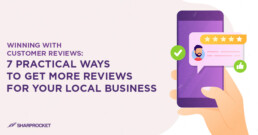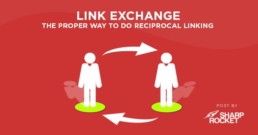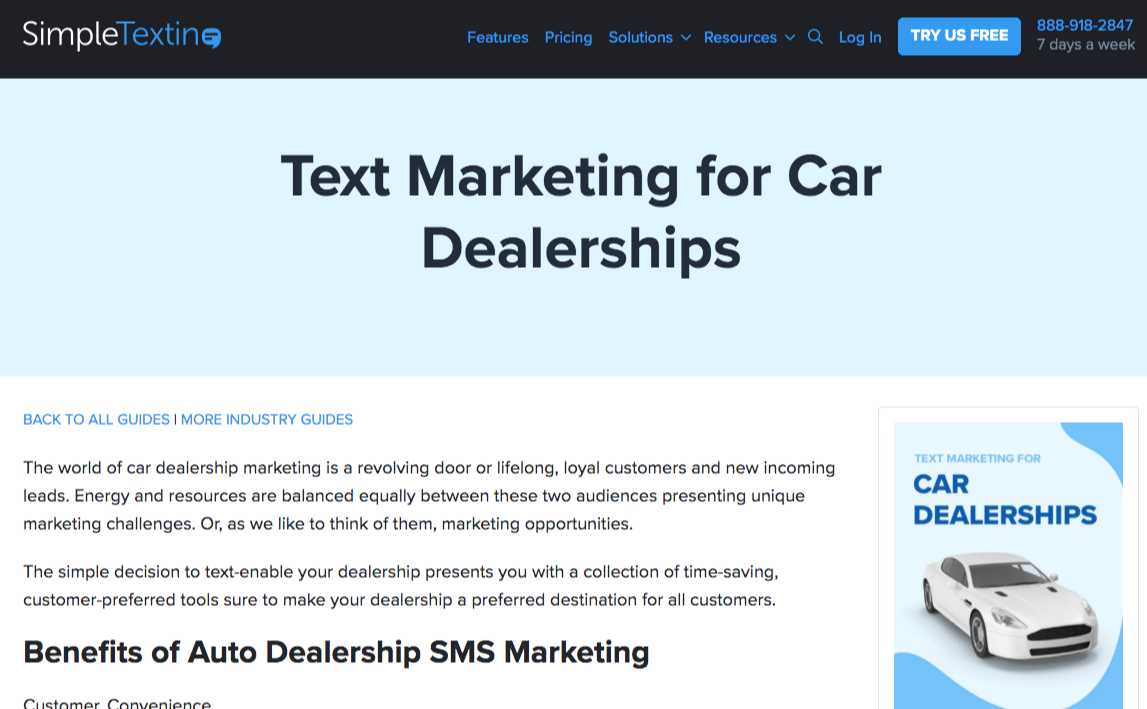7 Insanely Actionable Tactics to Build Contextual Links
What is a contextual link?
Here's a good definition from Jason Acidre:
A contextual link is a type of link that’s usually found within the body of content and is in context with the idea surrounding the link. It can be both natural (voluntary links from other websites – ex: link bait) and artificial (manually built – ex: one of your guest posts that links back to your blog/content).
Building contextual links can benefit you in so many ways, which include:
Targeted traffic. Leads. Online brand presence.
They are all good, but they only seem " too good to be true" if you don't know the exact how-tos of building the right contextual links.
Today, I want to give you 7 ways to get contextual links for your website.
How to Build Contextual Links?
1. Maximize Targeted Outreach
Targeted outreach is basically sending out emails to prospect linkers of a very specific content - most are existing articles with the same topic, with a hope to get reference links back to the site.
Let's say you have published a post on "how to stop my husband from snoring". If you want to get contextual links, you may reach out to articles that rank for terms like, "how to stop snoring", "how to stop snoring of your partner", or even "top snoring apps".
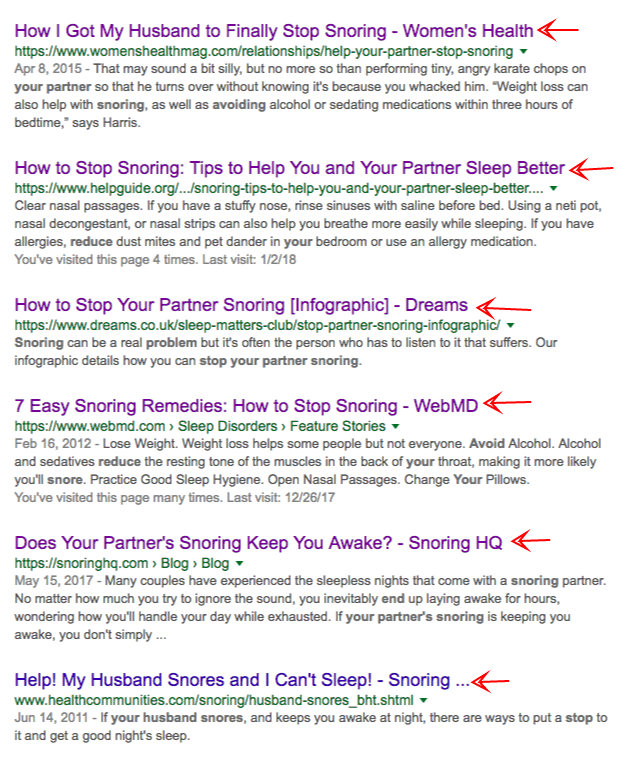
Because they'll find your article to be relevant to use as an additional resource (i.e. including your content on "you may also check out this article on" or "for further reading"), there's a good chance you'll acquire a link.
But it's not a guarantee that it works all the time. You have to understand the context of the linking page and your content, so you can determine if there's a good linking chance.
Here are some tips to guide you when assessing these link opportunities:
First, check the primary focus topic of the article/page.
Ask yourself, "Does the prospect article I'm trying to get a link from cover a much larger subject compared to the topic of the content I'm pitching with?".
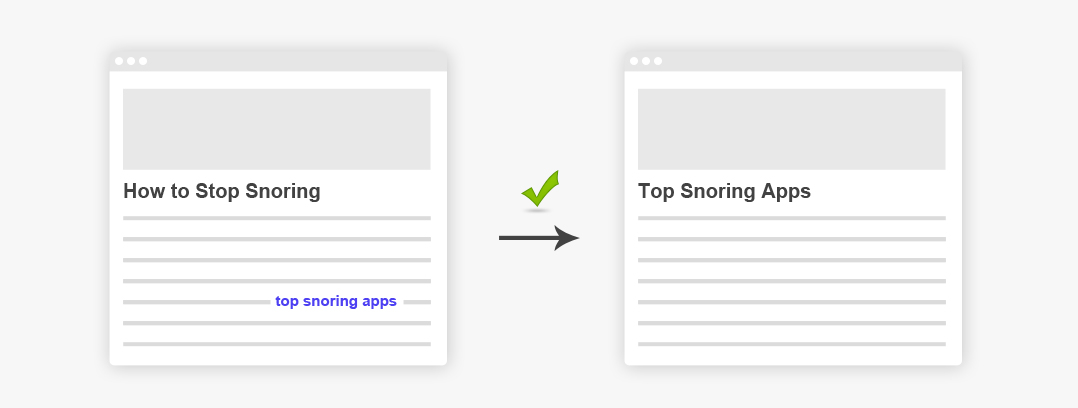
If you are pitching your "top snoring apps" to an article about generic "how to stop snoring" content, there's a good chance to get a link from that because the linking page covers a wider subject and perhaps has a subsection about snoring apps - which then provides you an opportunity now for a link.
But how about if it's vice versa? "how to stop snoring" to "top snoring apps," would you get a link?
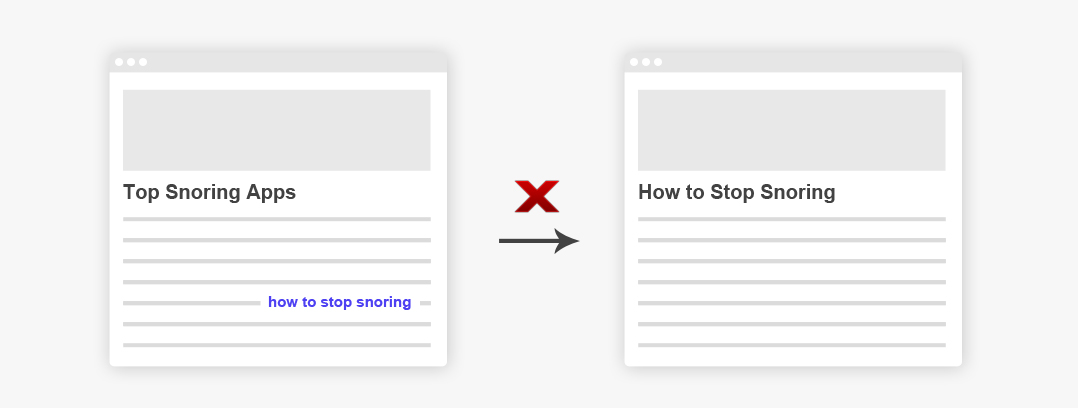
The answer is, "it depends."
Depending on how the article is structured, if the article covers exactly "top snoring apps" and your page isn't about apps, there'll be misalignment on his part to link to you. But it's not always the case.
If your article discusses a subsection on snoring apps that haven't been discussed/included in the prospect existing article, there's a good chance you'll get an external backlink.
The logic is that the blogger would want to give a reference link to a page that explains more about a topic/word/phrase mentioned in his article but have yet to be expounded.
Second, you need to assess external links on a page.
If you see a homepage link on an article referencing a product/service, not as a recommendation, just like brand mention (see example below) or a product review that links built to a commercial page, there's a less organic linking chance to it.

The reason there's a link there is either the webmaster/blogger is affiliated, partnered, or is compensated for the effort of linking, or simply, the product/service is an authority in the space - undoubtedly being linked to in most blogs.
The third thing is to identify if the page is dynamic or static.
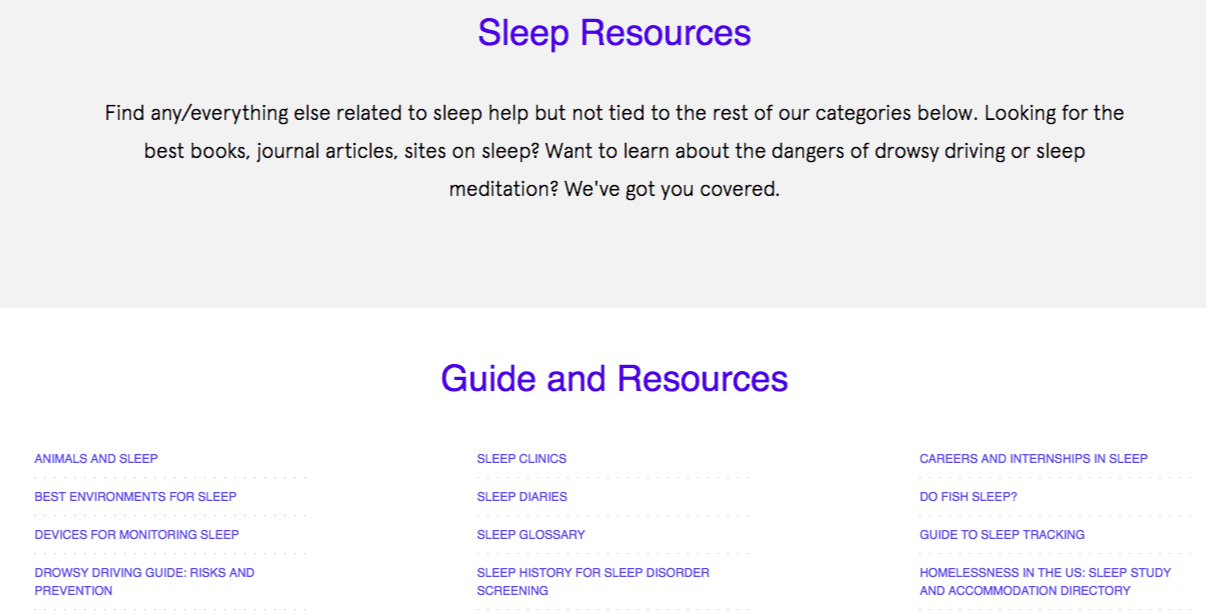
What I mean by dynamic is some pages frequently update over time, and other pages are not. Those pages that require updates of links are dynamic.
If you're reaching out to a dynamic page, there's a high probability to acquire a high authority link, as the need itself looks for new resources or references. In other words, they'll be linking to your content if it improves their content piece.
For example, a blog post on snoring apps for 2017 can be dynamic if its URL isn't targeting the snoring apps 2017 phrase. If it's just snoring apps resource articles, it allows new links to resources.
The more dynamic the existing page is, the more likely you'll get a link juice. Otherwise, if it's static, they should have reasons to link other than the topic's timeliness.
So, there are three ways to check if an existing article/page can link to you.
Second tip:
2. Generate Easy Links From Relatively New and Low Authority Publications
You aim for links from DA30+ blogs, but from sites with lower metrics (<DA30), you probably don't.
Not pitching low-authority sites is kind of short-sighted thinking.
If you aim for traffic and clicks from links, there are low-authority sites with upward trends in organic growth that you should be getting because they increase the value of links when you get them.

More importantly, if these blogs are still new in the industry (use archive.org to check), you'll find that after a few months or years, they'll have increased their followers and linkers.
Thus, if you have built relationships with them upfront, it will not be difficult to convince them for you to contribute posts on their blogs.
Note: If you have an authority brand, you should aim for top-tier industry blogs. But if you're starting to grow your link profile, pursuing even low-authority blogs can be effective.
To check if a low authority blog is worthy of your link efforts, you can use Ahrefs or SEMRush to check the site's estimated organic traffic.
The slope of the organic traffic trend signals the site's growth. The steeper the slope upward, the better.
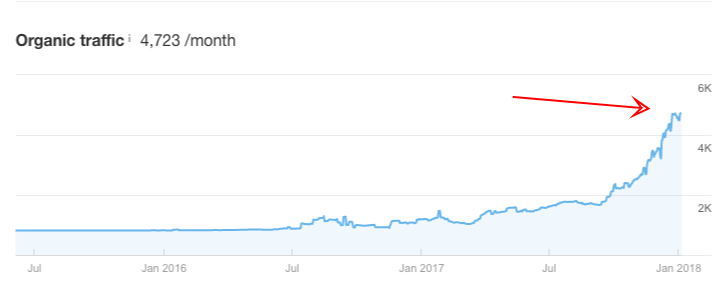
Once identified if a low authority blog is link-worthy, you'll reach out to them with whatever offer you have - either a content asset worthy of a link or a visual asset ready to be republished.
3. Evaluate Similar Page Links for Homepage Ask
You probably heard that tip from Ross if you religiously consume content from SiegeMedia.
In my experience, that's one way to assess your chance of getting the link.
If there are commercial links (i.e., one link pointing to a product page) on a page, you can get a homepage or commercial link.
The history of linking to similar page types is one true sign of a possible link.
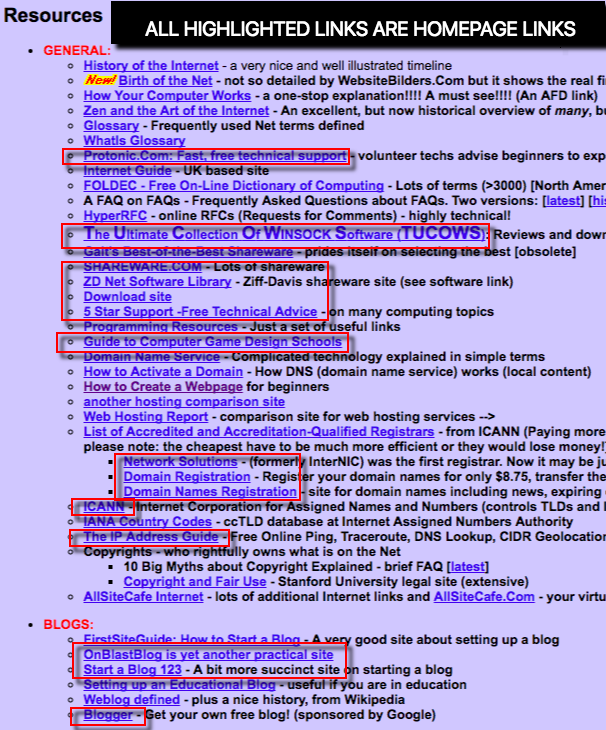
However, that's not to say that it is always a guarantee. Proper assessment lets you know if a homepage ask is worth pursuable.
Here are some true signs of a potential homepage link:
- Keyword-optimized anchor text - very few you'll find a link with the exact target keyword/phrase as the anchor text. So seeing one (except for Exact-match-domains where brand names are exact ranking keywords) is an intent to link to a commercial page.
- List of partners - you normally see this in eCommerce; retailers, manufacturers, suppliers, and other business partner types are mostly homepage as linked pages.
- Recommended products/services - top X tools in 2018 is one example where the homepage ask is feasible
Even if you've got a great content piece published recently, if you think a homepage would be the best fit, that's something you should pursue to be linked to. The opportunity cost is high if it's not, given that a homepage link is way more difficult to acquire than top-of-the-funnel pages like industry guides.
4. Link Exchange Exclusively For Linkable Assets
When you have a great linkable environment, you'll start receiving emails from other bloggers or webmasters wanting to get their links to their own sites.

Every month, three or five asks of this kind is a good opportunity to link exchange.
Depending on the cases, you'll find it okay to link exchange for both linkable assets exclusively.
It's natural to find a page that references good content, and a web page from another site links to your good content.
Here, you don't get links mutually to the same pages (page A to page B, page B to page A). That's a 2008 link exchange. Rather, your content A gets a link from his page A, and his content B is linked to your page C.
Below are more tips to guide you with this tactic:
A. Check if the linking partner is a good fit.
You will receive different emails of an ask-to-link (link exchange): some pitches include direct links to their preferred pages/content, while others don't.
If the email is handcrafted well (with your name personalized), it's a sign of a good linking fit.
However, some emails start with Dear Ma'am/Sir but still have a good relevant content piece. The person reaching out just doesn't know how to outreach properly.
So, always check the email and the website they have. Assess if the page or website itself is semantically fit for your brand.
B. Assess their preferred linking page.
If it's a content page, they're building links to it. It's a potential fit.
Otherwise, for commercial pages, consider if the product/service could be highly recommended on your website.
As Ross Hudgens says, "Building natural links to landing pages with commerciality built in is pretty close to impossible with cold outreach."
C. Identify which page you could put their link.
Unless you're willing to put a new page/article to give them a link, you could simply search for an existing page on your own website that best fits them.
If you have a recommended readings page, that's one choice you can pick, as you can simply include a link to their content if there's a section that fits their topic.
D. Check if you could also get a link.
I suggest you choose one page that you'd like to improve keyword rankings visibility by getting more links to. Then by doing a site search on Google for their domain, site:hisdomain.com "topic", check if they have a page that fits the topic.
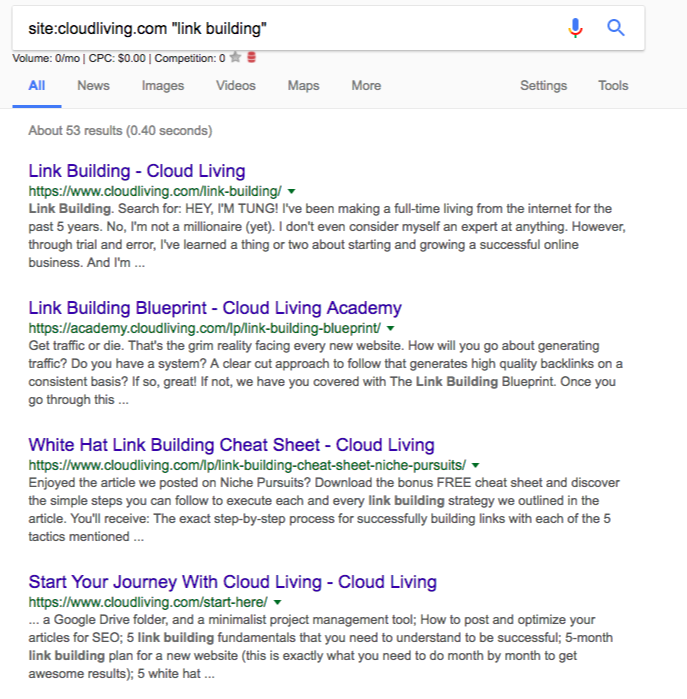
Once you start attracting potential linkers, link exchange exclusively for linkable assets can be a low-hanging fruit tactic that can add new links to your website,
5. Use Twitter to Nudge Bloggers About Broken Links
Perhaps you've found broken links on a target resource page, and you thought, "Maybe I could tell this to the webmaster to connect easily, hoping to get a link".
So you easily go to your outreach tool and craft an email to the webmaster with the note, "I've found errors on your page".
He doesn't respond, so you send a follow-up.
Nothing happens, so you proceed to your next outreach prospect.
This is an opportunity cost.
No response doesn't mean there's a huge problem with your link prospecting and outreach approach. There may just be a little tweak needed to connect to your outreach prospect properly.
How about sending a direct message on Twitter to connect?
Most bloggers are active on social because they care about their community (their followers) and consistently curate industry posts through social posting.
For that reason, if you send a direct message to a blogger about their broken links, there's a high chance you'll get noticed.
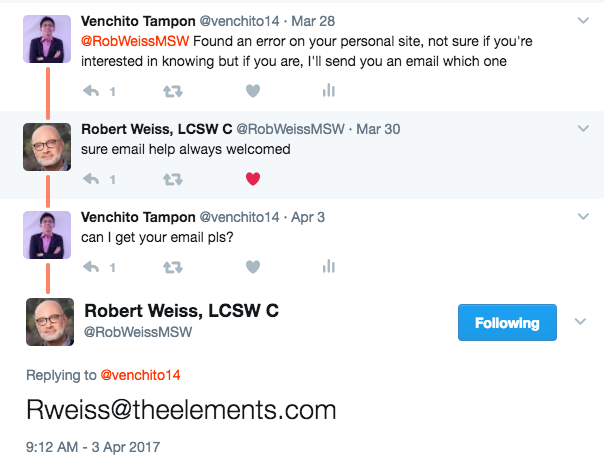
The methodology isn't perfect, but it could make you stand out in a world of really basic, boring email templates, even a messy BLB pitch like this one:
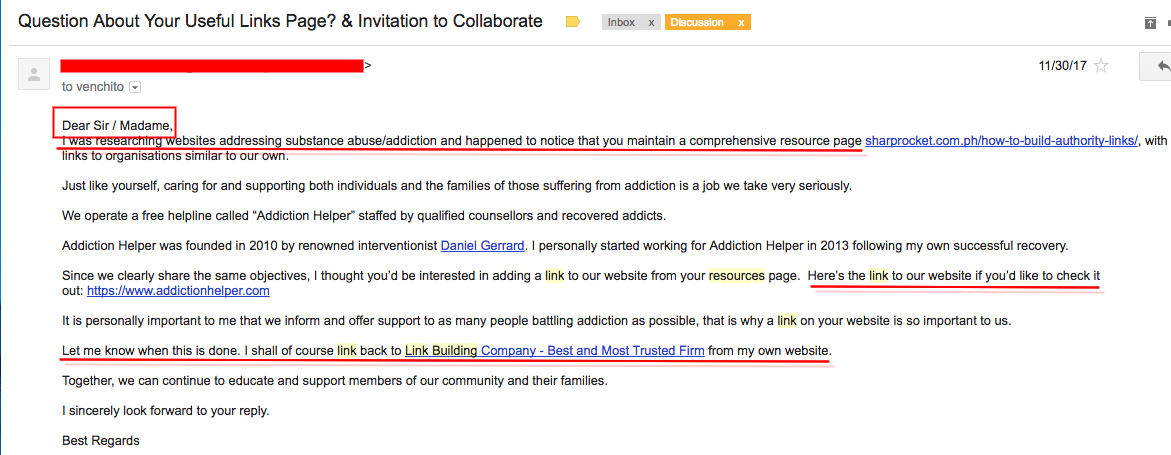
Once you've connected on social media, you can stay in the medium for the conversation or redirect messaging to email. The latter best works if you've asked the person about his personal email.
6. Find Industry Link Roundup Terms to Increase Conversion Rates
Right when you search "contextual link building" or "contextual links", you'll find articles on the first page of search engine results pages that say, "get links from link roundups."
You know the tactic has been written several times in many SEO articles, so you know how the process works.
Step 1: Use search operator, "link roundup" "INDUSTRY" or "roundup" "weekly" OR "monthly" "INDUSTRY" to find industry-specific link roundup opportunities.
Step 2: Create a list of blogs with link roundups and find contact emails of webmasters.
Step 3: Reach out to them with an email template that says, "I've found your "ROUNDUP NAME" .. and thought you might be interested to see this recently published on TOPIC — <insert your link to the post>" or anything similar to that.
It's an effective tactic, but not everyone can get results from it immediately.
What's missing in this tactic is optimizing prospecting for industries with little-to-no outreach markets for this rare link target.
What do I mean?
Not all link roundups have titles of "best links of week/day/month" or "industry link roundup", most of you would discover that sites named their roundup series with weird names, i.e. "blog party," "link party," or "blog hop."
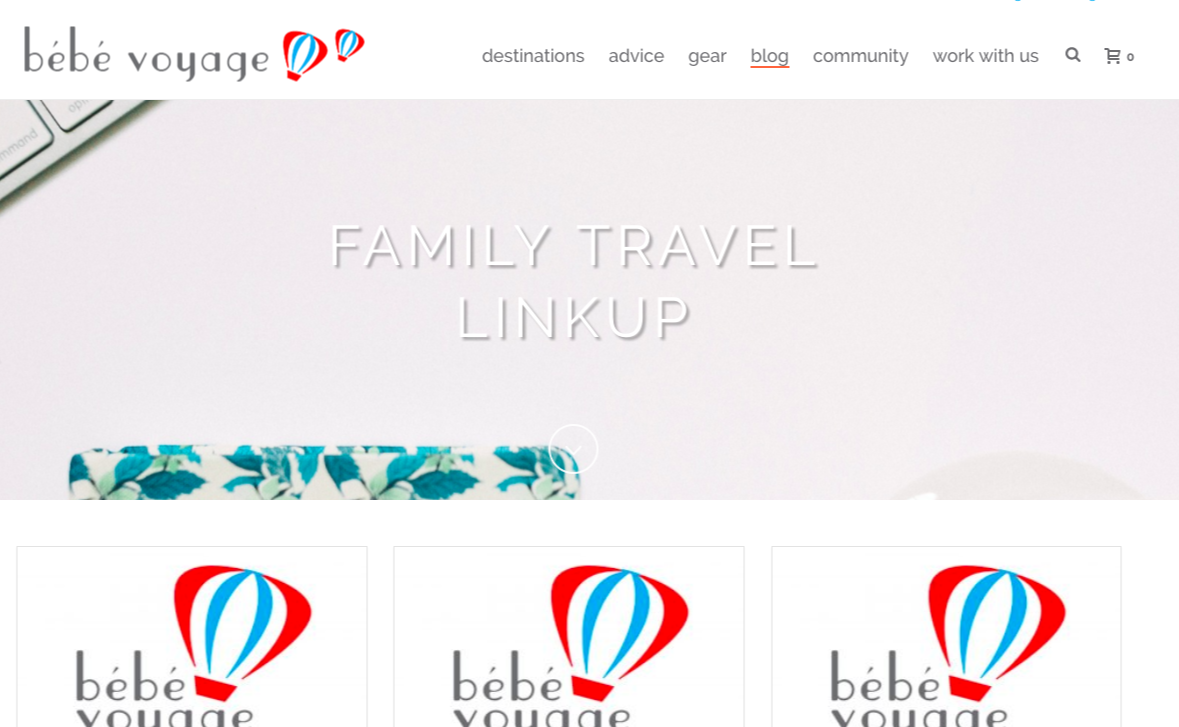
They may sound black hat 2008, but these are the terms bloggers use about "link roundups."
So, how do you find exact link roundup titles in your industry?
I recommend you start identifying an authoritative industry blog (one with DA60+) that publishes regular high-quality content pieces.
For example, if you're in the wine industry, one popular wine blog that consistently produces high-quality content is WineFolly.
They publish a diversity of content assets - from 10x guides to visuals, and they do it regularly.
You will see this post on pairing wine and cheese by checking their top content of all time (top content with the highest number of social shares, not by # of links). Take a deeper look at its referring internal link. You can immediately see roundup links, including this roundup post - GrapeCollective Wine News.

Dig into other top content's links, and you'll find more roundup links like Grape Wall Daily.
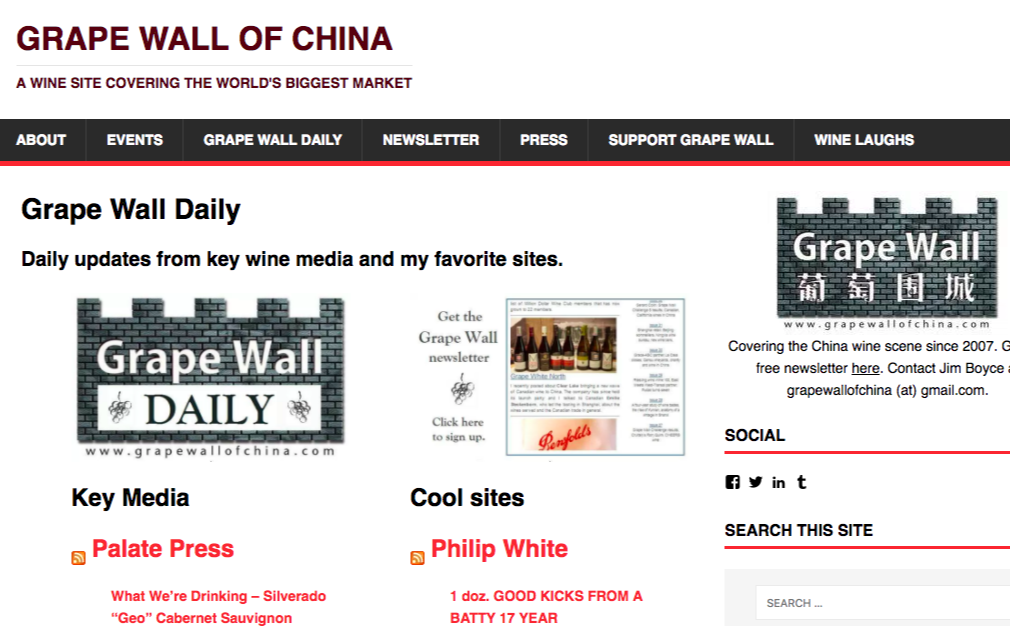
You understand the pattern. Find a top industry blog that produces high-quality content pieces. Check the site's top pages based on social shares (you can use Ahref's top content feature, not top pages). Check if the most-shared content has gained roundup links. If yes, grab those link opportunities and gather more link round targets by reverse engineering the site's other content pieces.
7. Invite Contributors Using Different Offers
It has been proven repeatedly that getting contributors for your blog can help increase the number of referring domains.
For example, Joshua Dorkin grew his real estate blog - BiggerPockets- by creating high-quality content pieces from regular contributors.
That strategy allows his blog to become one of the real estate authorities today.
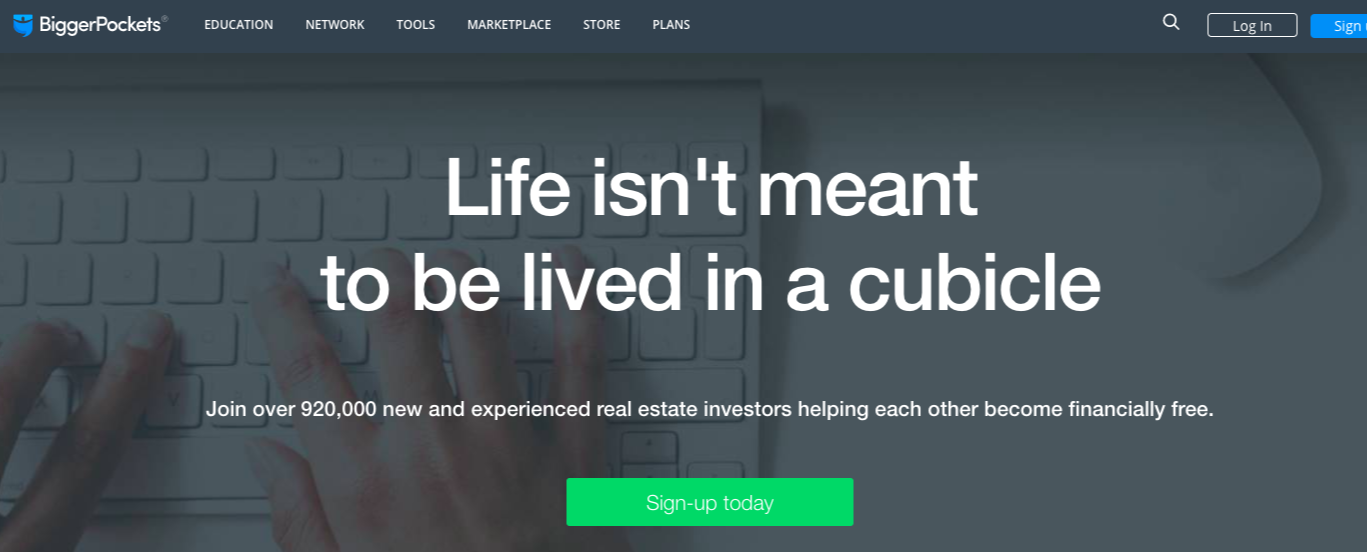
In his comment at Kaiserthesage's blog, he said that he gets 30+ contributors to write for BiggerPockets weekly while he ensures that they put out 2-3 good pieces of content through his content marketing team.
Today, BiggerPockets for sure has more blog contributors. Maybe double, triple, or 10x their site traffic because of that strategy.
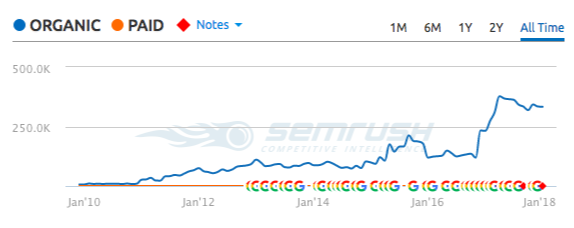
That's just for one industry, but other niches with massive blog communities have gained more exposure and links simply by getting regular blog contributors.
Getting started with inviting contributors is easy. You email potential contributors and ask if they're interested in writing for you.
The hardest part is getting them onboard.
If you can answer "what's in it for me" for bloggers, you'll have a high chance of enticing them to become your regular contributors.
Below are some valuable offers to make for bloggers:
- Increased exposure to the blog through the additional social following, email subs, and referral traffic. Got a DA45+ blog? Reach out to new bloggers (DA20 or less). This is more realistic than pitching top authority bloggers like Brian Dean's blog (DA70+ blog).
- Premium product subscription. I wrote for Ahrefs in 2013 in exchange for a monthly standard subscription plan for their product. This works for your niche, too, if you have a great product to offer.
- Content collaboration. Less work for the blogger. Gets more credibility for both parties if both of your blogs have an immense following on social and emails.
- Compensation. The best is to target part-time bloggers. They charge cheaper than full-time ones. One tip is to check if their about/media/press/hire-me page. They won't go cheaper than that if they include a $ per article/hour rate.
- Relationships. This matters most if you want to bait bloggers to write for you. There is no need for additional offers, as they would write for your blog.
Once you have invited bloggers to write for your blog, you may constantly check new bloggers in your industry you can potentially reach out to be added to your contributors' list.
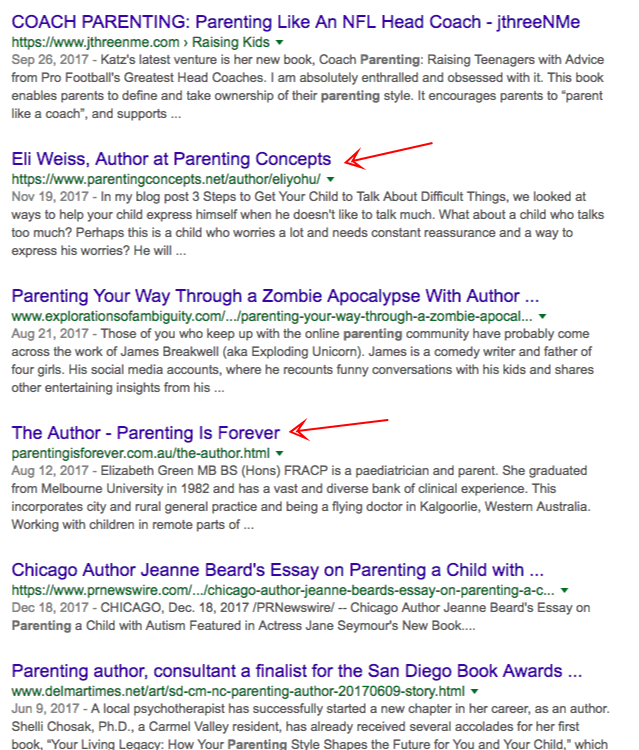
So those are 7 ways to build contextual backlinks to your website.
If you don’t have the time or inclination to do them, you should probably find someone who can. Learn more about our link building service.
Contextual Links Frequently Asked Questions
So those are 7 ways to build contextual backlinks to your website.
What is an example of a contextual link?
An example of a contextual link is when a blog post about red apples mentions other types of apples, like green apples. Contextual links connect related content to provide additional information and enhance the user experience. These links contribute to a more comprehensive understanding of the topic. By creating contextual links, website owners can improve the relevance and authority of their content.
What are the different types of contextual links?
The three primary types of contextual links are external links, internal links, and reciprocal links. While implementing contextual linking can be challenging, it yields significant value when executed effectively.
What are contextual and formal links?
Contextual features refer to elements of language that exist beyond physical manifestations, whether in the real world or the minds of individuals. Texts are segments of language that are treated formally, and cohesive devices are formal connections between sentences and clauses. Contextual and formal links serve to establish meaning and coherence in language.
How Many Backlinks Do I Need to Rank?
How many backlinks do I need to rank?
The number of backlinks you need to rank for your website can vary from 0 to 300+ backlinks.
The difference between a website that needs zero backlinks to rank for its target keywords and a website that requires hundreds of inbound backlinks is its domain and topical authority, full technical and on-page relevance and optimization, and the backlink gap between the site and its competitors.
In this post, you’ll learn how many backlinks you need to rank by determining it yourself and how you can qualify if your site can rank for the topic you’ve chosen.
How Many Backlinks Does It Take To Rank High in Search Results?
To rank high in search results, you must look at different on-site and off-site factors and determine the backlink gap between you and your competitors.
Let’s first take a look at your on-site factors.
On-Site Factors
Ideally, your website must be on the first page for your target keyword if it has all on-site relevance factors.
If you’re doing SEO for a new website, there’s a lot more to work on your site’s topical relevance and trust so Google could make your site deserve to rank high in search engine results pages (SERPs).
Compared to a trusted website with DR70+, where it can rank almost any relevant keyword as soon as Google indexes the page.
Look at your website and see if you’ve done the bare minimum optimization to increase your site's topical relevance and trust.
Before you dive into and be aggressive in link building, check if you’ve got the necessary factors to compete over other competitors’ well-optimized sites. Technical SEO to ensure the only needed pages are indexed and crawled by Google. Fast-loading pages for better user experience are trust signals to keep your site in its ideal position on first-page SERPs.
Topic Relevance
Your site’s foundational relevance has a huge factor in rankings. If you’ve built topical authority, the potential to rank for other pages is much easier.
Let’s take our coffee shop blog as an example.
When we started it in 2021, it would take us months to see results in rankings and organic visibility, not to mention it’s difficult to rank for any coffee-related keywords in the Philippines.
As soon as we publish more quality blog posts, it gets more trust, bringing it to another level of authority to rank easily for any coffee-related keywords.
It ranks #3 for “how to start a coffee shop business in the Philippines” and all its variation keywords on the first page - gaining organic visitors daily.
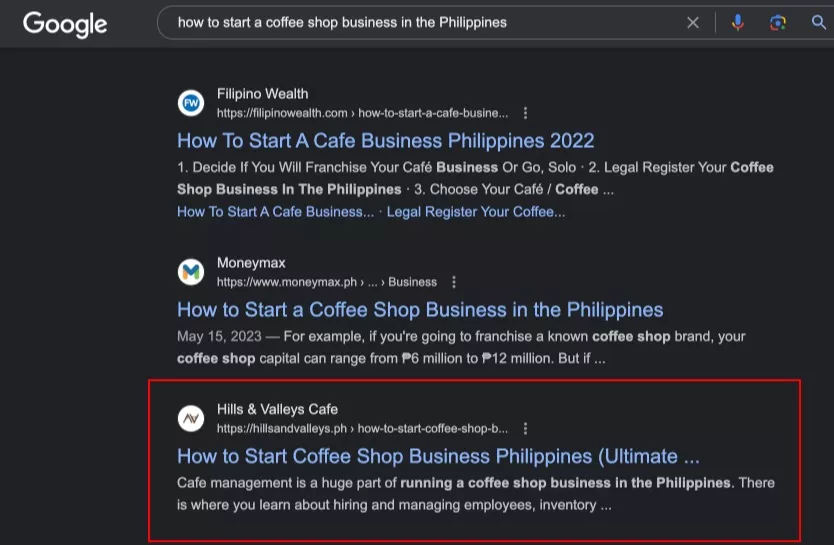

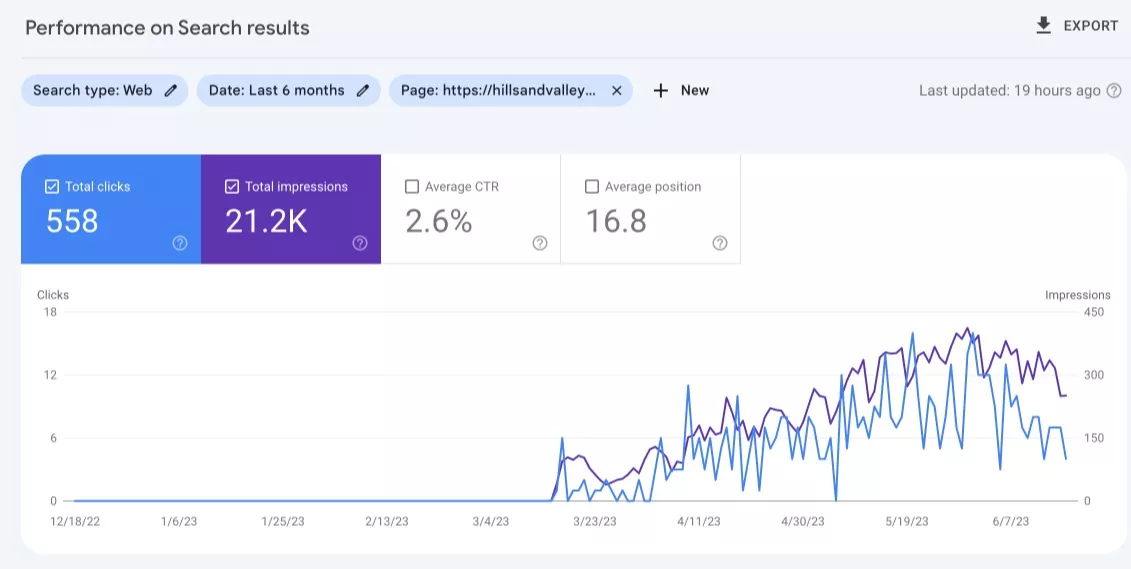

Your site’s topical authority is a huge determining factor in how quickly your site ranks without needing to build more backlinks.
On-page SEO
Put your target keyword in your site’s URL structure, meta title, H1, H2, and first and last sentence of your content - all these can help set up the proper relevance on-page relevance.
Content Optimization
A solid match to search intent. Determine the keyword’s search intent through tools like Ahrefs or SEMRush, or the simplest way is to do a Google search for the keyword. See the types of content of the top rankings pages. Are they product listing pages or blog content showing useful information?
Do you see featured snippets for your target keyword? This can help you optimize your content better.
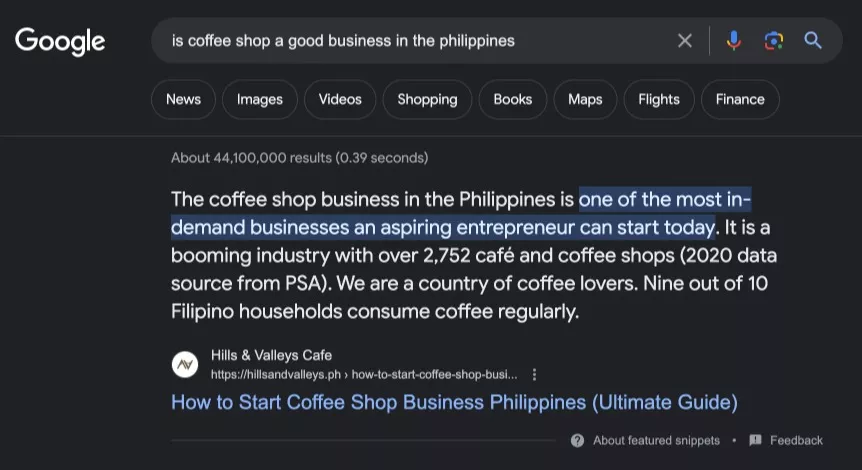

Internal Linking
One of the underrated SEO techniques is internal linking. Before doing any kind of link building campaign, start by leveraging the power of internal linking to boost your page’s ranking.
Check any blog content that is relevant to your target page. You can use a quick inventory of your website through Google search or Ahrefs.
Edit your page to include the link to the page you want to rank higher. Update and index it again.
You should see some ranking improvements by simply doing it. At most, this might decrease the number of links you need to rank higher in SERPs.
SharpRocket’s Backlink Gap Analysis Playbook
Assuming you’ve got everything covered - from technical SEO to content optimization, but you’re still not ranking for position #1 to #3, now all you need to do is build more backlinks to your page.
But first, start by doing a backlink gap analysis.
Backlink gap analysis determines the quantity and quality of your competitors' backlinks and measures them against your site to count how many backlinks you need to beat your competitors.
Doing a backlink gap analysis gives you an estimated number of links you can acquire in a given timeline. This is where strategy takes place, as you can allocate enough resources for the campaign - including your outreach specialists and budget for external content (i.e., guest posts).
Step 1: Collect DR20+, in-content, do-follow backlinks of your target page and its competing ranking pages.
For this process, you need two things:
1. Links data of your target page.
Use Ahrefs to get link data of your target page.
Plug your page URL into Ahrefs’ Site Explorer and click “Exact URL’. Then click the search button.


Go to Backlinks (under Backlink profile). This gives a rough estimate of all linking domains to your target page.
You may get this as the exact number of backlinks to target in link building, but you’re missing some key factors here.
First, only some of these links are equal. It means some links and a few directories you don’t need to consider are easy to replicate.
In other words, you need to qualify all these links first.
Filter links by DR 20+, do-follow, and in-content types of links.
This doesn’t mean other types of links don’t matter at all. It is such that we only see in-content as high-value and hard-to-replicate links.
No-follow and sitewide links obviously may directly impact the site’s ranking performance - but they’re easy to replicate, particularly when the brand has a lot of passive link opportunities in play.
So, click on Dofollow to filter the links by dofollow. And click Backlink type, then choose In content to filter links by backlinks placed in content like blog posts. Filter again by DR20, click DR, and insert max 20.
These will give you all backlinks filtered by DR20+, do-follow, and in-content links.
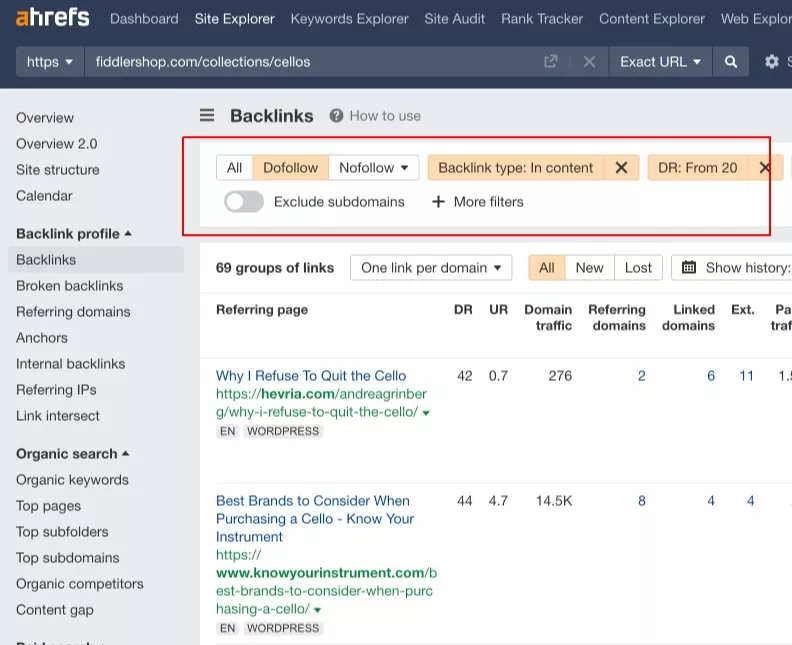

These are the exact links you consider as your weapons to beat your competitors.
Now, let’s review your competing pages and strike their link numbers.
2. Links data of your competing page ranking position #1, #2, and #3 for your target page.
When choosing competing pages, try to look for websites that do not just rank because of authority but have a substantial number of backlinks. Authority sites like Amazon and Etsy don’t need additional links to quickly dominate the SERPs, as they have the inherited domain authority.
You need to look for competing pages from less-authority sites ranking on the top spot in SERPs. This could give you many insights regarding the quality of backlinks they acquire and their exact link-building strategy.
Once you’ve selected the competing page, plug it into Ahrefs’ Site Explore and choose the Exact URL.
Use the above method—filter by DR20+, do-follow, and in-content links.


Now, these are the backlinks you need to beat.
Step 2: Deduct qualified links of your top competing page from your page’s qualified links.
What is the number of backlinks you should beat?
While you can go for the average number of links of your competing pages, let’s say you’ve got 83+ for competitor #1, 56 for competitor #2, and 117 for competitor 3. By average count, you have 85.33 or 83 links as your target to-beat number of links.
While that’s a quick calculation, the difference in the number of links doesn’t share the same context. One or two of your competing pages may have high DR, so they only require a few backlinks to be on their top positions. On the other hand, the ones with lower DR need hundreds of backlinks to compete.
We go for the competing page with the most links in our link building services to clients. In our given example, it is competitor #3 we’re looking after.
The reason is simple. Whether or not you hit the exact number of links, we will likely hit position #1, as our team is aiming too high on our link building campaign. That’s a good mindset to consider when beating competitors with backlinks.
To compute for the total backlinks to beat, deduct your page’s link count from the top competing page’s link count.
So, to answer the question, “How many backlinks do I need to rank?:
The simple answer:
Compute the backlink gap between your page and the top-ranking page with the highest link count, considering only DR20+, do-follow, and in-content backlinks.
Free Resource for Consultants, Freelancers, and SEO Agencies
Below is the exact template we use for our clients to give them an understanding of their current backlink situation using link gap analysis.
You can click directly here to see the exact backlink gap analysis template.
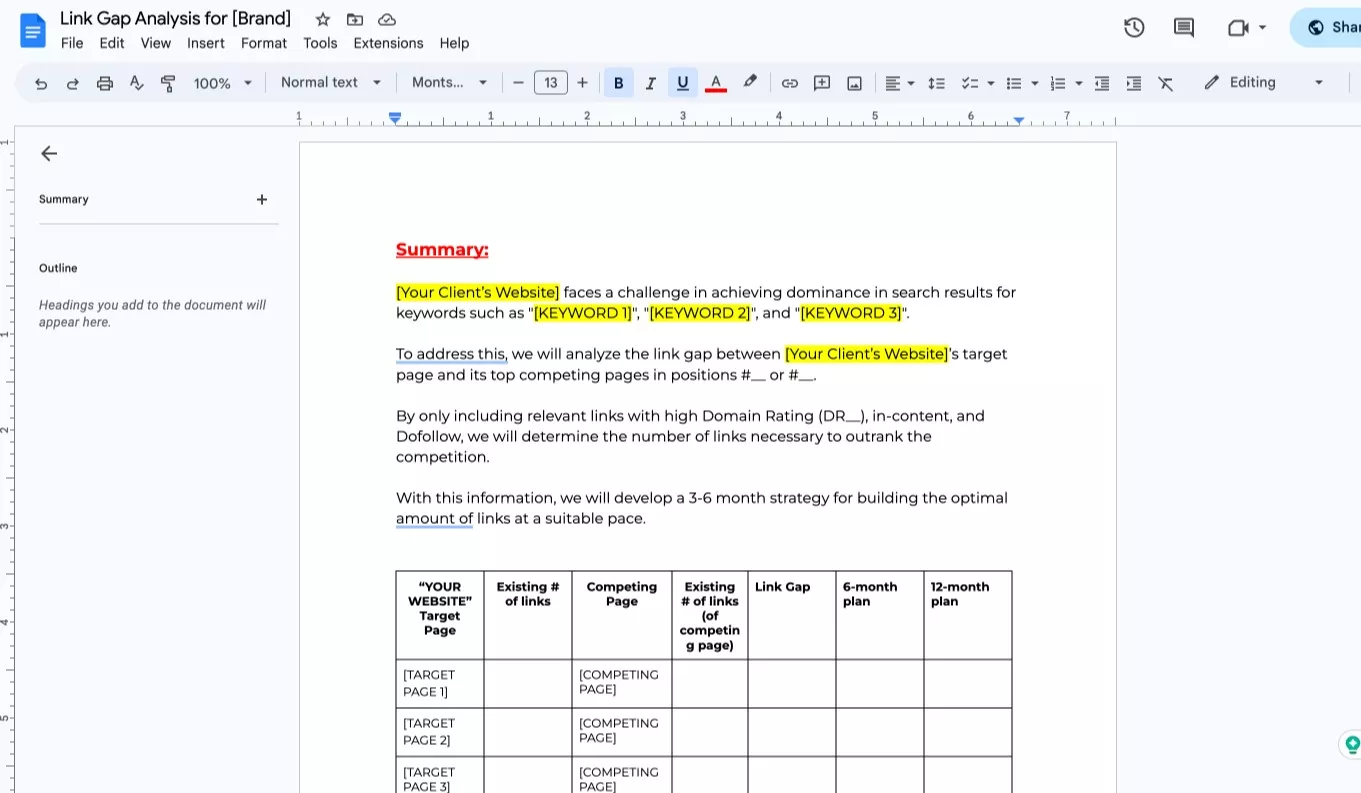

Executive Summary
[Your Client’s Website] faces a challenge in achieving dominance in search results for keywords such as "[KEYWORD 1]", "[KEYWORD 2]", and "[KEYWORD 3]".
We will analyze the link gap between [Your Client’s Website]’s target page and its top competing pages in positions #__ or #__.
By only including relevant links with high Domain Rating (DR__), in-content, and Dofollow, we will determine the number of links necessary to outrank the competition.
With this information, we will develop a 3-6 month strategy for building the optimal backlinks at a suitable pace.
| “YOUR WEBSITE” Target Page | Existing # of links | Competing Page | Existing # of links (of competing page) | Link Gap | 6-month plan | 12-month plan |
| [TARGET PAGE 1] | [COMPETING PAGE] | |||||
| [TARGET PAGE 2] | [COMPETING PAGE] | |||||
| [TARGET PAGE 3] | [COMPETING PAGE] |
[YOUR PAGE 1 TITLE]
[Your Client’s Website] has a high Domain Rating (DR__) and is competitive with top-ranking pages [Competing Page 1] (DR__) and [Competing Page 2] (DR__).
We have assessed [Your Client’s Website]'s ranking against [Competing Page], which currently has a high Domain Rating (DR__) and ___ links with DR__+, Dofollow, and In-content (excluding navigation, sitewide, and footer links).
Strategy:
[Your Client’s Website] currently has __ links while [Competing Page] has ___ links, resulting in a significant link gap of ___ links. Our strategy includes building __ or more links within 6 months and __ links within 12 months to close this gap and improve [Your Client’s Website]'s ranking.
How to rank first page with fewer backlinks?
As I’ve mentioned earlier, there are situations where you don’t need hundreds of backlinks to dominate the first three spots in SERPs.
Here are some techniques to rank first page with fewer backlinks.
Build topical authority
Much has been said about topical authority, particularly from Matt Diggity, who coined this term.
What is topical authority?
Topical authority refers to the website’s perceived expertise in a specific niche or subject, establishing trust by covering in-depth topics.
But topical authority isn’t just mainstream. When you have it on your site, Google trusts you, and it’s now easier to rank for new pages that your competitors would require to build more links just to be on page 1.
After publishing coffee business blog content, your pages can show on the first page results after indexing.
Here are quick, actionable tips for building your site’s topical authority:
- Create a topical map to allocate resources for a single topic or subject.
- Don’t ignore low search volume (10 or 1-10) but semantically-related keywords. You’ll get compounding traffic by targeting hundreds of low-search volume topics.
- Add FAQs at the end of the article and answer many questions about your topic. Use the latest feature of Detailed to scrape deep levels of People Also Ask questions.


Satisfy users with comprehensive content.
Identify the search intent and content structure of every topic.
You can easily judge how the content structure by looking at Ahrefs data. But you’ll find missing pieces on what Google favors pages to rank for each keyword.
One of the good examples of Ross Hudgens is for the query, “Hubspot alternatives.” You can easily create a page solely talking about your product features compared to another product (in this case, Hubspot).
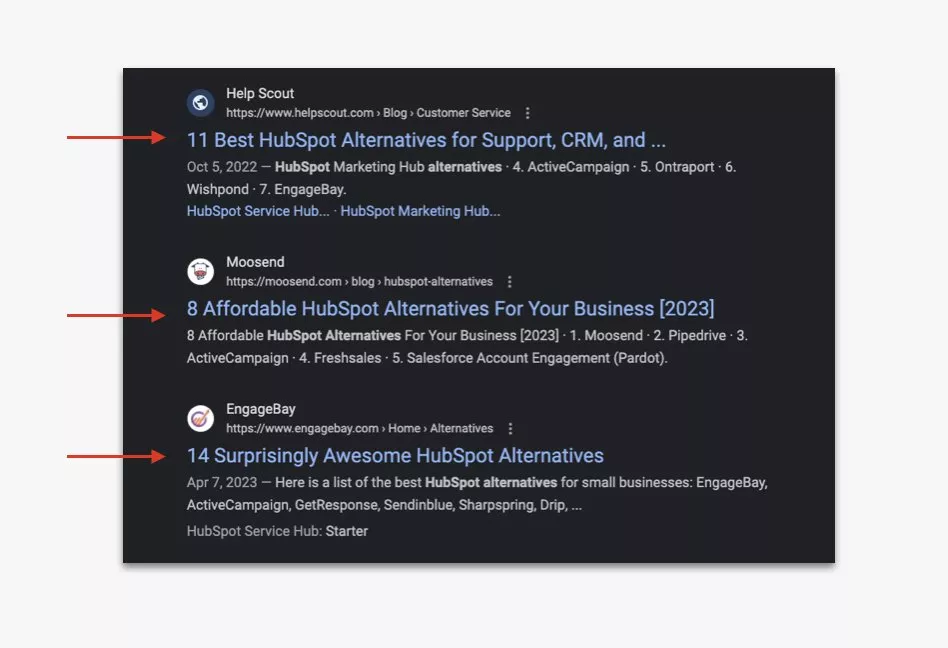

You’ll end up not ranking as the SERPs have ranking pages for list types of content, showing a variety of product alternatives.
This is just one example of how you should attack every content. Do a Google search for your target topic and analyze how the creators structure the top-ranking pages. Different keywords may yield different content structures.
From here, you’ll also have to analyze how to make your content better than the competing blog content in terms of word count, basic on-page optimizations, and questions being answered at the end of the article.
In today’s EEAT for content, it’s essential to make your content comprehensive enough by adding unique experiences. If you’re writing for affiliate niche sites, trying out the product before reviewing it is much more favorable.
You can also ask your internal team or other industry experts to contribute insights to your content for different publications.
All these while ensuring you put basic on-page optimizations on your content.
Include a new page in your site’s navigation menu.
We’ve been working with more eCommerce brands lately, and one of the missing ingredients eCom SEOs is for every page to be indexed fast by Google.
One best way to ensure that is by including your newly published page in your site’s navigation menu.
If it’s a resource guide, you can include it in your blog’s/hub/resource/learn menu, or if it’s a new collection page (for Shopify), best to have it as part of your category menu.
This basic SEO technique allows for faster indexing and crawling of Google on your site’s new pages.
Build more internal links.
While we’re a big proponent of building inbound backlinks to every site, we can’t ignore internal links to flow the site’s link equity to other pages.
If you don’t think of a page to build internal links to, you can check pages of your site sitting on positions 6 to 20. These pages may require more internal links to boost their ranking positions.
Use Ahrefs to find these lower-ranking pages.
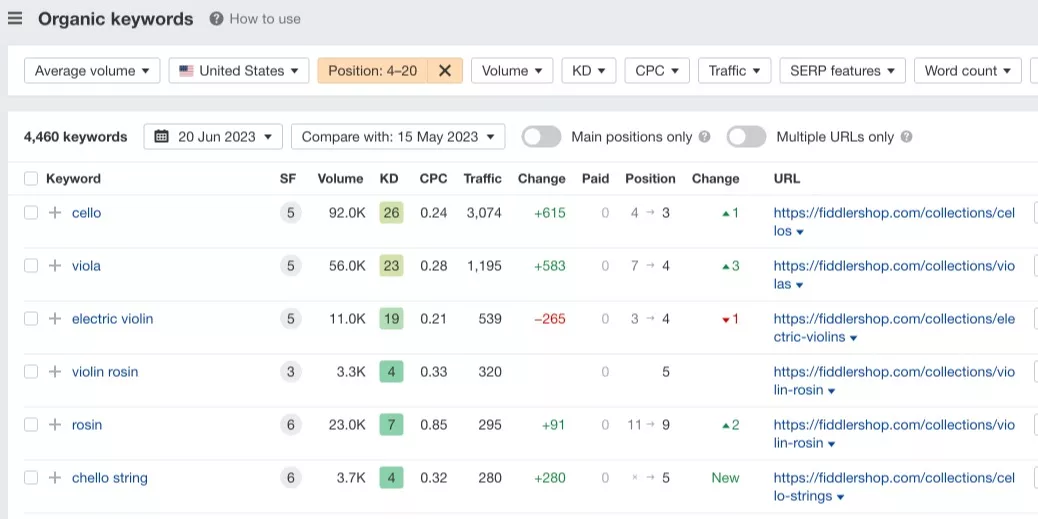

Then, find blog content that has acquired backlinks (top linking pages). Edit your pages and include internal links to your content.
Frequently Asked Questions:
How many backlinks per month is good?
There is no specific number of backlinks per month. It varies depending on your site’s target keyword, topical authority, and your keyword’s search engine results pages (SERPs).
How many backlinks should I create per day?
For starting websites, you should build at least 4 to 6 monthly backlinks.
For larger sites, it can vary up to 50+ backlinks every month (so that’s an 1 to 2 backlinks per day).
Consider looking at your competitors and seeing the average number of backlinks they build monthly. This would give you a rough estimate of your monthly target backlinks.
Is getting 100 backlinks from 100 different websites better?
Yes. Getting backlinks from hundreds of unique referring domains can have a huge impact on your site’s rankings. However, building backlinks from websites that linked to you also conveys trust, that domains refer to your website more often.
How many links should I build a month?
There is no specific number of backlinks you should build in a month.
It is best to analyze your competing pages for your target keyword. See how many links they’ve built and benchmark it against your page. Get the difference between your site’s total # of links vs. your competitors' average # of links. This would give you a rough estimate of the number of backlinks to build for that specific page.
Do more backlinks need to be fixed?
Yes, if it is with high velocity. No, if you are building backlinks to your website gradually. While as you grow your content, you also increase the number of target backlinks to create for your pages.
Winning with Customer Reviews: 7 Practical Ways to Get More Reviews for Your Local Business
Customer testimonials and product reviews are some of the best sales tools any business can hope for. Statistics from Bright Local show that 76% of online consumers read Google reviews regularly before shopping at a local business.
This goes to show that consumers are more likely to buy from businesses with product ratings.
The presence of social proof can go a long way toward reassuring a hesitant shopper. It assists in providing additional context, thereby reducing returns by ensuring that customers feel satisfied with their purchases.
If you’re ready to instill some trust into your business, below are tips to guide you on how to get more reviews for your local business. When used wisely, these tips will enable you to create meaningful social proof and assist in building a brand that people will love.
7 Tips To Follow For More Online Reviews
1. Start by Familiarizing Yourself with the Process
How long does it take a customer to leave a review or testimonial? A minute? Maybe more? Before they can post how they feel about your products or brand, customers will need to first go through certain steps. They have to:
- Go to their search engine and pull up Google Maps
- Locate your brand.
- Tap on it to display your Google Business Profile information.
- Scroll until they find the reviews section.
- Type their review.
Try to shorten this process to encourage more customers to leave a review. Send them a link via email.
2. Collect Email Addresses During the Billing Process
Requesting a buyer’s email address and other contact data during the billing process is a significant step to getting them to leave a review. Generally, if a customer is willing to share this information with you, it indicates they have had a rewarding experience.
This type of customer is more likely to go online and share their experience with their followers.
Having collected their email address, you can send them a friendly follow-up email a few days later, asking them for a review. Ask them to provide an honest account of their experience with your product(s) and brand.
If you can, try to use local citation software to track your business mentions online.
3. Sign Up to the Same Sites as Your Buyers
There is no better way to get honest feedback than by being social and accessible to your shoppers. Go to your social media accounts and confirm they are easily accessible from your eCommerce store.
Set them up so those with questions and comments can easily reach you. If you happen to have a brick-and-mortar store, create a profile for it on platforms such as Google Places and Yelp.
4. Claim Ownership of Your Online Profiles
No one knows the industry you’re in better than you. Thus, when signing up to review sites, confirm that these review sites can accomplish the following:
- The sites make sense for your brand and speciality area
- Results pop up whenever you Google your brand or business name
- These review sites attract dedicated users (For example, Yelp has over 224 million reviews today)
Once you’re done creating a short list of review sites to target, get around to setting them up. If, for any reason, you’re unable to do so, consider seeking help from a professional SEO agency. Failure to claim ownership can lead to missed opportunities and many inaccuracies.
Also, claiming ownership of your business profile will give you more control over how your brand is represented online. It’s the surest way to guarantee that it will be represented accurately and in a manner that benefits it.
5. Incentivize Buyers to Leave a Review
Sometimes, even the most loyal and satisfied shoppers will need some incentive to take time out of their busy schedules to post a review. Providing an incentive to such shoppers is an excellent way to show appreciation for what they’re doing for you.
When making your offer, ensure the offer you make is for posting a review and not for leaving an exemplary review. These two phrases are quite different, as anyone who understands Google Shopping Campaigns will tell you.
Introducing monthly giveaways, where reviewers get chosen randomly, is an ideal way to get started on incentivizing shoppers. What’s more, with such getaways, there exists no semblance of a transaction that pertains to buying reviews.
6. Reply to All Online Reviews
Whenever you request buyers to review your products or brand online, you automatically open yourself up to receiving bad reviews as well. And while these aren’t necessarily good for your platform, they are encouraged to prove honesty and improve feedback.
All you must do is remember to respond to all the reviews made online. In your responses, you’ll need to use a calm and helpful approach that will attempt to convert a poor review into a more positive experience.
The key factor here is that you must respond to all reviews –negative or positive. Responding to all reviews shows other potential shoppers that your brand has an active online presence and that it values its clientele.
According to a study published in the Harvard Business Review, taking your time to respond to customer reviews often leads to better overall ratings. In the long run, this will translate to better feedback, especially when management shows that it listens to the grievances raised.
7. Consider Running a Google Review Email Campaign
Whether run as a large blanket campaign or via personalized messages, an email marketing campaign can enable you to get more Google business reviews. To improve its efficiency, don’t try to coerce shoppers to leave a review or sugar-coat your intentions.
Come out clearly and ask your customers to do something that can assist future shoppers in making an informed buying decision. Often, your customers will be more than happy to hop online and leave a review for you, especially if they are satisfied with your services.
Just make sure that the process is short, easy to complete, and mapped out. Remember, your clientele leads busy lives and will likely walk away if they find the review process to be too long or too complicated.
Conclusion
Online reviews have the potential to change the direction of your business. They are the perfect way to become dialled into the happenings in your business, collect customer feedback, and expand your clientele.
And this holds for all online reviews!
Positive reviews tell potential clients about your services and products and why they should shop with you. Negative ones, on the other hand, provide an opportunity to identify your shortcomings, take accountability, and learn from your mistakes.
Every business today can benefit from online reviews. The seven tips discussed above will help you to get started on getting more reviews. Combine this with any other information your SEO agency recommends, and you should note a spike in your overall review numbers in no time.
Online Reviews Frequently Asked Questions
Why Are Online Reviews So Important?
Online reviews are important as they serve as tiebreakers for customers struggling to decide between several similar products. That’s why a customer is more likely to choose your merchandise over another alternative if you have more positive online reviews than your competitor.
These testimonials also give you an open communication channel with your customers. They help you identify faults in your products, allowing you to make the necessary changes to ensure your brand stays competitive in the market.
What is the Best Online Review Platform?
Here are the best online review platforms for your business:
- Google My Business
- Yelp
- Bing
- OpenTable
- TripAdvisor
- Foursquare
- Manta
- BBB (Better Business Bureau)
The success of an online review platform depends on how well-suited it is for your business. So, here are a few things to consider before you choose one of these platforms;
- Can the platform guarantee me genuine reviews from real customers?
- What extra resources does the platform offer to improve the collection of reviews?
- Does the platform allow the sharing of reviews to other online platforms?
- Can I reply to customer reviews through the platform?
How to Ask for Online Reviews?
Here are a few proven ways to ask for online reviews without sounding pushy;
- Send personalised emails to customers and ask them to leave a comment on your review platform
- Include a link to your review platform on the business page
- Verbally ask your customers to leave a review on your online platforms
- Create a review template for customers who do not have time to frame a review of their own
- Offer incentives in exchange for reviews
How to Respond to Online Reviews?
Responding to both negative and positive reviews can help build loyalty and solidify your online reputation. Here are some of the best practices for replying to online reviews;
- Always thank the customer for taking the time to leave the review
- Be timely with your response
- Listen to the customer and get more details (especially if they have a complaint)
- Apologise whenever necessary
- Always signoff using your real name or initials to display authenticity
- Keep the interaction professional at all times
How to Handle Negative Reviews?
Asking clients to leave comments regarding their experiences with your business opens doors for both positive and negative reviews. That’s why it is essential to learn how to handle them. Here are a few steps for handling negative customer reviews:
- Thank the customer for the review
- Apologise for the poor customer experience
- Listen to customer complaints and get the details
- Show you are willing to go the extra mile to rectify the situation
7 Content Writing Tools for SEO in 2023 (Pricing and Review)
Content writing is an essential part of SEO, helping you to create efficient copy that resonates with your target audience. But as the Internet marketing industry continues to evolve and competition increases, staying ahead of the curve can be difficult.
Marketers like us have tried several paid and free tools over the years, but none of them has been able to provide us with the comprehensive solutions that many SEO campaigns require.
For this reason, we decided to take a closer look at the 7 best content writing tools for SEO in 2023 and their associated pricing and review scores.
Before we do that, let us first define what content writing is.
If you're an online customer, what's the first thing you do when you stumble upon a website or product? You read! And this is the same principle that content writing follows.
Content writing is an essential part of SEO because it helps to accurately convey your message, engage potential customers and increase visibility in search engine rankings.
Remarkably, almost three-quarters of online activities start by utilizing a search engine. Before making an informed buying decision, over half of all customers read 3-5 pieces of content about the product or service.
This demonstrates that buyers are researching and seeking out reliable sources before engaging with sellers.
So by definition, content writing is the creation of content that is published online. It includes blogs, articles, web copy, product descriptions, and more.
To be effective in SEO, your content must meet certain criteria: it should be relevant to the topic you’re targeting, it should provide value to readers; and it should be optimized with keywords to ensure that it appears in search engine results.
Now, let’s take a look at the 7 content writing tools for SEO that we have selected for 2023:
1. Ahrefs Keyword Explorer
Ahrefs Keyword Explorer is a user-friendly content-writing tool that helps writers and marketers find the right keywords to target. It enables them to quickly identify the most profitable phrases and optimize their content for maximum visibility in search results.
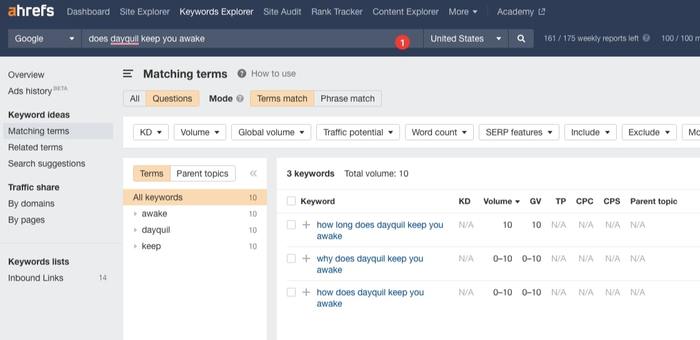
How to Use Ahrefs Keyword Explorer:
- Utilize the keyword explorer to enter your desired term and uncover related keywords!
- Select the country for your research
- Press “search.”
- Modify filters to narrow down the list of results according to your preferences. Search for content ideas related to your found keywords and determine if the topics are relevant.
Pricing: Ahrefs offers four plans ranging from $99 - $999 per month. The basic plan starts at $99.
It's an all-SEO tool that delivers powerful insights and workflow automation, making it a great choice for those who want to get the most out of their content writing efforts.
2. Hemingway App
Hemingway App is an excellent tool for content creators who want to improve the clarity and flow of their copy. It highlights passive voice, jargon, and other writing issues that can weaken your content and make it difficult to read.
How to Use Hemingway App:
- Copy the text you want to edit into the online editor.
- Hemingway App will analyze your writing quality by giving it a readability score out of 100, highlighting any errors or weak spots.
- Make changes accordingly to improve the quality of your writing
Pricing: Hemingway App is free to use, although you can upgrade to a premium version for $19.99/year, including extra features such as team collaboration and document exporting.
3. Robinize
Robinize is a powerful content optimization tool that helps SEO professionals to get the most out of their content. It offers real-time insights into how well your content performs and provides suggestions for improving it.
How to Use Robinize:
- Enter the URL of the page you want to optimize
- Robinize will analyze the page and provide a score based on factors like readability, keyword optimization, internal linking, etc.
- Make any necessary changes to your content to improve the score.
Pricing: Those interested in trying Robinize offer a free plan with 3 reports. Content writers can also choose from our 19$ package with 10 included reports or a 49$ option for 50 included reports.
4. Paraphrasingtool.ai
Paraphrasingtool.ai is a great tool for content writers who want to quickly and easily rewrite existing content to make it more unique and SEO-friendly. It can help you create original content without having to start from scratch.
On top of that, the tool also provides users grammar checker, plagiarism checker, and summarizer.
How to Use Paraphrasingtool.ai:
- Copy the text that you want to be paraphrased into the tool
- Paraphrasingtool.ai will analyze your text and generate a unique version
- Make any necessary changes to ensure that the new version still conveys the same meaning as the original
Pricing: Paraphrasingtool.ai is free to use, making it a go-to tool for writers who want to create unique content quickly.
5. Semrush SEO Writing Assistant
Semrush SEO Writing Assistant is an excellent tool for content writers who want to optimize their copy for search engines. It suggests improving your content’s readability and structure and searching for relevant keywords and phrases that will help you rank higher in SERPs.
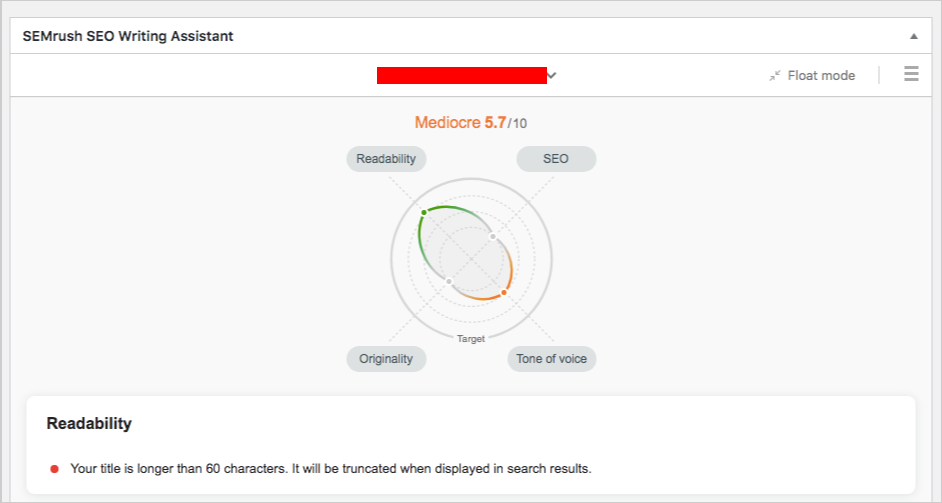
How to Use Semrush SEO Writing Assistant:
- To access the SEO Writing Assistant extension, go to Google Marketplace.
- Click “Install”
- Select your Google account to begin signing in, and you're ready to start exploring!
- Grant Semrush permission to view and manage your documents by selecting "Allow".
Pricing: Semrush SEO Writing Assistant is a paid tool.
If you want Semrush Guru's complete features, then be sure to subscribe and get the most out of your monthly or annual plan! The cost for a single month is $229.95, but if you choose the yearly option - it'll only run you $191.62 per month total!
With its 7-day free trial, Semrush allows you to try out its features and conduct your research in no time. Put it to the test today and take advantage of all that Semrush offers!
6. A WordPress SEO plugin
Using a WordPress SEO plugin is a no-brainer if you publish content on a WordPress site. A good SEO plugin will help you optimize every piece of content for search engines and ensure your website is mobile-friendly and secure.
The most popular WordPress SEO plugin is Yoast SEO, which offers easy-to-understand settings for users of all levels.
How to Use Yoast SEO:
- Download the plugin from WordPress.org and install it on your WordPress site.
- Head to "SEO" in the left-hand sidebar of your WordPress dashboard.
- Under “General”, add a meta description for all your web pages and posts.
- Under “Page Analysis,” you can optimize the content of each page or post.
Pricing: Yoast SEO is free to use; however, premium features are available for $99 per year. The premium version includes extra features such as unlimited keyword optimization and internal linking suggestions.
7. Ubersuggest
If you're familiar with Neil Patel (I know you are!), you've probably heard of Ubersuggest. It's a fantastic tool for content writers looking to optimize their copy for SEO. Neil Patel created this tool to monitor search engine algorithm changes and help writers craft content optimized for their target audience.
Ubersuggest provides keyword suggestions, competitor analysis, and SEO audit reports that can help content writers create more comprehensive and SEO-friendly pieces.
How to Use Ubersuggest:
- Head over to Ubersuggest and select the language you want to search in.
- Enter your keyword into the search field.
- Ubersuggest will generate related keywords and ideas and estimate each term's search volume.
Pricing: If you need more than three daily searches, the paid plan is just right for your needs. You will be able to conduct comprehensive keyword research and competitor and backlink analysis with ease. Ubersuggest provides a competitively priced yet powerful SEO toolkit unrivaled by Moz, Ahrefs, and Semrush. Best of all - you can manage up to three websites for only $12 monthly!
These are just some of the tools available for content writers in 2023. As technology advances, so do the possibilities for optimizing content and improving its online visibility. With these seven tools, you can take your content writing game to a new level!
How to Select the SEO Content Writing Tool For You
Choosing the right SEO content writing tool is a critical content marketing tip for any content writer. When selecting the best SEO tool for your needs, budget, time, and desired outcomes should be considered. Consider how these seven tools can help you achieve your content marketing goals, then decide which will give you the most bang for your buck.
It's also important to remember that no single tool can do everything for content marketing. For example, while Ubersuggest may be great for researching keywords, it will not give you the same insights as a dedicated backlink analysis tool like Ahrefs or Semrush.
It’s also worth noting that some tools offer free plans and/or discounted rates for students and non-profits, which is a helpful content marketing tip to save money.
Ultimately, the best SEO content writing tool is the one that saves you time and money while helping you reach your content marketing and SEO goals. With so many great tools available, now is a great time to optimize your content.
7 Best Practices For SEO Content Writing
Now that you have the right tools, it’s time to start writing SEO-friendly content. Here are seven best practices for SEO content writing that can help you reach your goals:
1. Boost your website visibility and increase search engine rankings by strategically incorporating target keywords into your meta titles and descriptions.
This will help search engine crawlers quickly understand and rank the content accordingly.
Crafting an attention-grabbing and SEO-optimized meta title and description is essential, seeing as users view it before even arriving at your website. When included in search engine results, this concise preview will significantly impact the number of visitors that click through.
Limit your meta titles to a maximum of 62 characters, whereas the length of your meta description can span up to an impressive 170 characters!
2. Focus on quality
Quality content is essential to SEO success. Ensure your writing is clear, concise, and contains no grammar or spelling errors. That's why using tools such as Grammarly, ProWritingAid, and Hemingway Editor is important to double-check your work.
Make sure to keep your content up to date. Outdated or irrelevant content will not rank high in search engine results pages. Strive to keep your content fresh by regularly updating it with new information or statistics as needed.
3. Utilize headings and subheadings
Using descriptive headings and subheadings helps make your content easier to read and understand.
It also helps break up the text and makes it easier for readers to skim. Use keywords in headings and subheadings whenever possible, boosting your content's search engine rankings.
4. Be smart about including internal and external links
Linking to relevant content on your website helps readers find more information and can help with SEO rankings. Not only that, but it also encourages readers to explore your website further and stay longer. According to studies, the average user spends 88% more time on a website with internal links.
In utilizing external links, link only to related, reliable, and trustworthy websites. Doing so will show your readers you know what you're talking about and will help boost the credibility of your content.
Linking to other authoritative websites can benefit SEO if the sources are reliable and relevant.
5. Optimize image files
Search engines can’t read images, so using descriptive titles, captions, and alternative tags for every picture you include will help search engine crawlers better understand your content's context.
Doing so will give your images a boost in the rankings, thus bringing more traffic to your website.
6. Write long-form content
Longer pieces of content rank higher than shorter ones in search engine results pages, as they are considered higher quality and provide more value to readers.
Strive for at least 1000 words for every piece of content. Doing so will make it easier to include target keywords without sacrificing quality and help you reach a broader audience.
7. Get your content shared
Social media is an effective tool for spreading the word about your content. Ensure that all pieces are correctly optimized for social media sharing, greatly impacting their visibility.
Also, don’t be afraid to reach out to influencers in your industry who may be interested in sharing your content with their followers. The more people share and talk about your content, the higher it ranks in search engine results pages.
In addition to social media, guest posting is another effective content marketing tip for spreading the word about your content. Consider reaching out to websites and blogs in your industry that accept guest posts, as this can help you reach a wider audience and build backlinks to your site.
Following these SEO tips can help ensure your content reaches its maximum potential! Remember, SEO optimization is ongoing, so stay up-to-date with the latest trends, tools, and best practices.
21 Must-Listen and Actionable Content Marketing Podcasts
Podcasting has become increasingly popular in the last few years, and for a good reason. The beauty of podcasting is that it allows you to tell stories and have conversations with people from all walks of life, no matter where they are. It’s a great way to dive deeper into a subject, hear personal stories, and get to know experts in the field.
Not only does podcasting provide an interesting platform for storytelling and conversations, but it also allows you to build a community with your listeners. Podcasting is a great way to connect with people interested in the same topics as you, creating an opportunity to share information and collaborate.
Podcasting also allows you to reach a broader audience than many other mediums. With podcasts, there’s no need for expensive production costs, long hours of editing, or geographical constraints. All you need is an idea and a microphone — anyone with access to the internet can listen in on your podcast from anywhere in the world.
In this article, we will explore why podcasting matters in today’s digital landscape and list content marketing podcasts worth checking out. So, let’s dive right in!
Benefits of Podcasting
Podcasting has many benefits, making it an invaluable tool for content marketers and digital entrepreneurs. Here are some of the key advantages of podcasting:
1. Reach a wide audience.
Podcasts can easily be shared across multiple platforms, which allows you to reach a wider audience than many other mediums. In fact, On average, US podcast fans tune in to 6 podcasts each week, providing an immense opportunity for radio hosts and creators, according to Infinite Dial.
2. Build relationships.
Podcasting is an effective way to connect with people who share your interests and build relationships over time.
3. Increase engagement.
Engaging with listeners is easier when they can hear your voice and feel the emotion in your conversations.
4. Drive traffic.
Podcasts can help drive more website traffic and lead to increased sales. With over 2 million podcasts online daily, the competition is fierce, but the rewards are great.
5. Cost effective.
It’s a relatively inexpensive way to spread the word about your business or content. Statista has released astonishing figures, with the total revenue generated through podcast ads skyrocketing to an incredible $1.3 billion in 2021 - a staggering increase of nearly half a billion dollars from 2020! This immense figure is expected to keep rising precipitously over the coming years.
6. Flexibility
Podcasting allows for the content format, length, and frequency flexibility. As a content writer, you can create a show that is tailored to your specific needs and preferences and easily incorporate it into your overall content strategy.
21 Content Marketing Podcasts Worth Checking Out:
1. This Old Marketing
Hosted by Joe Pulizzi and Robert Rose, this podcast is all about content marketing tips and best practices. In every episode, Joe and Robert engage in a lively debate on the current content marketing topics while sharing ruminations on industry trends.


Frequency: Weekly
Episode Length: Average of 60 minutes
Recommended Episode: Is AI Content a Race to the Bottom?
2. Copyblogger FM
Hosted by Sonia Simone and Robert Bruce, this podcast is all about content marketing, copywriting, and getting your message out into the world. It features interviews with top industry experts and practical tips on creating an effective content that will get you noticed.


Frequency: Weekly
Episode Length: Average of 30 minutes
Recommended Episode: How to Write Content That Resonates
3. Content and Conversation
Developed by our Siege Media experts, Content and Conversation is an exclusive podcast featuring founder Ross Hudgens and director of marketing Drew Page as they discuss everything from content marketing to SEO to email outreach. If you want deep insights into mastering online promotion - this is the perfect listen!


This podcast is designed for content marketers who want to gain in-depth field knowledge and achieve maximum success.
Frequency: Weekly
Episode Length: Average of 30 minutes
Recommended Episode: Why You Can’t “Test” Content Marketing
4. Social Pros Podcast
If you want to make your content more engaging and discover new ideas to leverage social media, this is the perfect podcast! Hosted by Anna Hrach and Daniel Lemin, this podcast features interviews with some of the best minds in the social media industry.
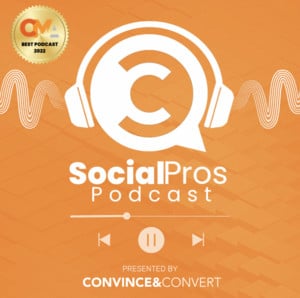

Frequency: Weekly
Episode Length: Average of 60 minutes
Recommended Episode: Greatest Hits: How AI Impacts Social Media
5. The Marketing Book Podcast
This is a great podcast for content marketers who want to stay up-to-date with industry trends. Host Douglas Burdett brings you engaging conversations with best-selling authors in the marketing field and explores some of the most relevant topics.
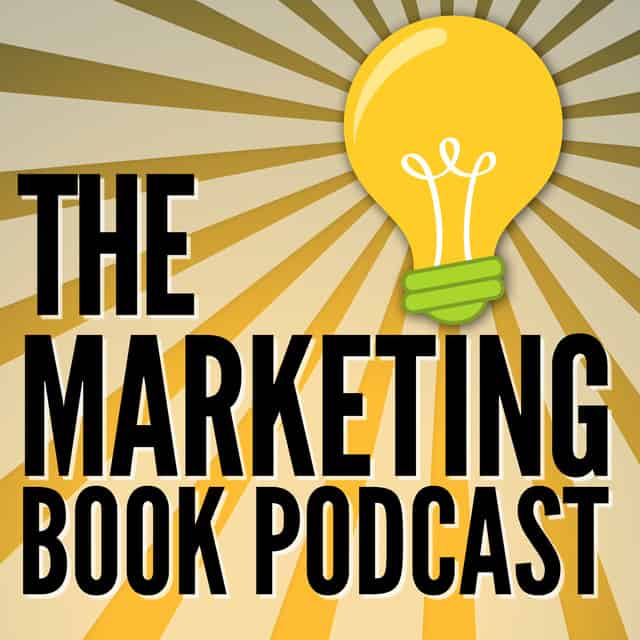

Frequency: Monthly
Episode Length: Average of 60 minutes
Recommended Episode: Content Chemistry by Andy Crestodina
6. Content, Inc.
This podcast is hosted by Joe Pulizzi and is all about content marketing strategies and insights. With each episode, you’ll learn how to use content to create value in your business and develop an effective content strategy that will drive leads and sales.
Joe draws from his experiences and those around him to provide deep, insightful reflections about the entrepreneurial world. By sharing these stories of success and failure, Joe helps us understand how to overcome life's challenges with determination and resilience.


Frequency: Bi-weekly
Episode Length: Average of 5–15 minutes
Recommended Episode: Stop “The Hustle” and Start “The Focus”
7. We Earn Media
With each episode, host Britt and Jackie bring you the latest news and insights on content marketing. Hear from some of the best minds in the industry as they discuss all things related to content creation, storytelling, and more!


Frequency: Weekly
Episode Length: Average of 30 minutes
Recommended Episode: Automated cars are good, but automated emails are bad!
8. The Animalz Content Marketing Podcast
This podcast is designed for content marketers who want to stay ahead of the curve. Hosted by Ryan Law, Director of Marketing, and Devin Bramhall, CEO, each episode features interviews with top professionals from the content marketing industry and provides actionable tips on improving your content strategy.


Frequency: Weekly
Episode Length: Average of 30 minutes
Recommended Episode: The Copycat Content Crisis
9. Noah Kagan Presents
This podcast is all about marketing, business, and lifestyle. Hosted by entrepreneur Noah Kagan, it features interviews with experienced entrepreneurs who share their insights on success, failure, and everything.
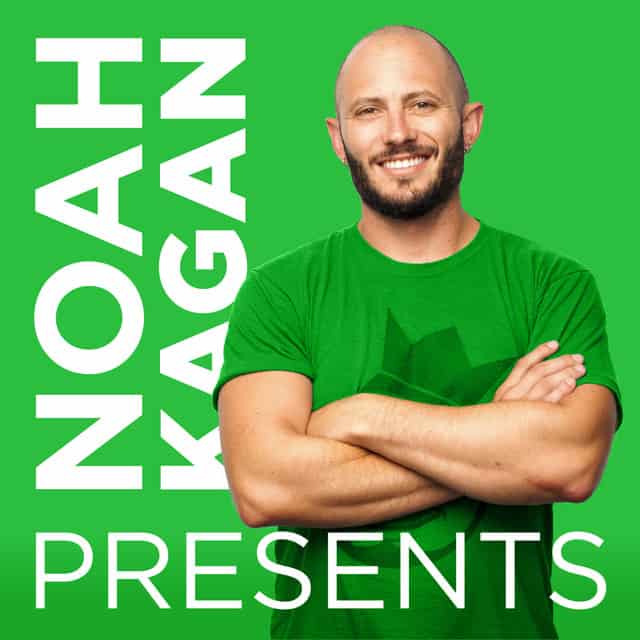

Frequency: Weekly
Episode Length: Average of 30 minutes
Recommended Episode: How to Start a Billion Dollar “Boring” Business (w/ Paul Orfalea)
10. SEO Podcast: The Unknown Secrets of Internet Marketing
Hosts Chris Burres and Matt Bertram share tips, tricks, and ideas for content marketing success. Listen to this podcast to learn how to get more traffic through search engine optimization (SEO) and other internet marketing tactics.
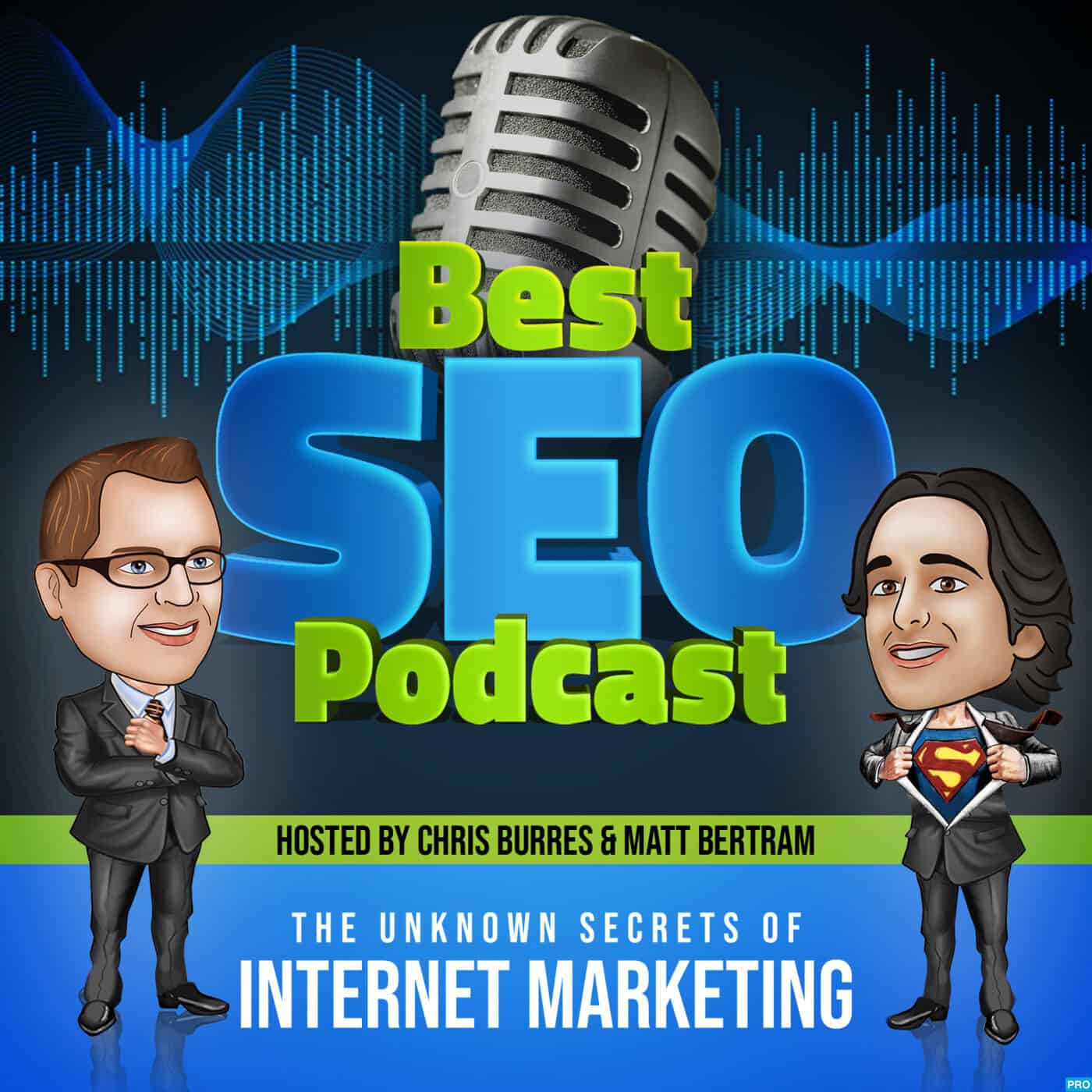

Frequency: Weekly
Episode Length: Average of 45 minutes
Recommended Episode: 10 Content Marketing Skills You Need to Master
11. Marketing Companion
Mark Schaefer and Brooke Sellas host Marketing Companion, a podcast that strives to bring fun back into marketing. Each episode's lively dialogue is chock-full of hilarious jokes yet peppered with interesting marketing insights - you'll never tire from listening!


Frequency: Weekly
Episode Length: Average of 45 minutes
Recommended Episode: Is there still a place for blogging?
12. Marketing School
If you're looking for a no-nonsense, actionable podcast with quick and easy marketing tips, this is the one for you. Hosted by Neil Patel and Eric Siu, each episode contains information that will help you become a better marketer. With the knowledge and experiences gathered throughout their separate yet flourishing content marketing journeys, the two hosts are equipped to pass on valuable lessons to help marketers - whether seasoned or newbies - flourish.


Episode Length: Average of 10 minutes
Recommended Episode: How to Skyrocket Your Search Traffic Without Spending a Cent
13. The Blogging Millionaire
The host of this podcast, Brandon Gaille has been blogging for over a decade and has made millions in the process. Each episode discusses topics related to growing your blog or online business, including content creation strategies, email marketing tactics, SEO tips, and more.
Frequency: Weekly
Episode Length: Average of 30 minutes
Recommended Episode: Optimizing Your Research and Writing Time
14. The Business of Story
This podcast is a must-listen for anyone interested in content creation and storytelling. Hosted by Park Howell, each episode features interviews with successful entrepreneurs, filmmakers, authors, and other creatives. The podcast explores the power of storytelling and how it can be used to grow businesses in the digital age. He aims to help companies engage with their public through meaningful and powerful content.
Frequency: Weekly
Episode Length: Average of 30 minutes
Recommended Episode: How to Grow Your Business With Bewitching Brand Storytelling
15. Experts on the Wire
In Experts on the Wire, Dan Shure dives deep into SEO while exploring related topics like content marketing, social media, and ranking. He hosts various industry specialists to share their insights into these areas, making it a great source of information for anyone interested in digital trends.
Frequency: Bi-Monthly
Episode Length: Average of 45 minutes
Recommended Episode: How to Escape Content Mediocrity
16. Online Marketing Made Easy
Podcast host Amy Porterfield provides actionable advice and strategies to help you build an online business. With topics ranging from email marketing, webinars, content creation, and more - this podcast is a great resource for entrepreneurs looking to level up their digital presence.
Frequency: Weekly
Episode Length: Average of 45 minutes
Recommended Episode: How to Create a Profit-Driven Lead Magnet to Boost Sales
17. Social Media Examiner Podcast
Hosted by Michael Stelzner, this podcast covers the latest trends and news related to social media and how businesses can leverage it for their products. With in-depth interviews with experts and industry leaders, you’ll be sure to pick up some useful tips on optimizing your social media presence.
Frequency: Weekly
Episode Length: Average of 60 minutes
Recommended Episode: Search Engine Optimization: How to Rank Number One on Google
18. The Tim Ferriss Show
Hosted by the author of The 4-Hour Workweek, this podcast is centered around deconstructing world-class performers. Through conversations with some of the most interesting minds, Ferriss uncovers their tips and tricks on productivity, success, longevity and more.
Frequency: Weekly
Episode Length: Average of 90 minutes
Recommended Episode: Tools of Titans - The Tactics, Routines, and Habits of Billionaires, Icons, and World-Class Performers
19. The Science Of Social Media
Popular with its social media tool, Buffer, this podcast dives into topics focusing on the science behind successful social media campaigns. The episodes are packed with actionable advice covering everything from content strategy to analytics.
Frequency: Weekly
Episode Length: Average of 45 minutes
Recommended Episode: How to Get Organic Reach Back On Social Media Platforms Even After Algorithm
20. Marketing Scoop Podcast by Semrush
Get the latest insights and trends in digital marketing from this weekly podcast. With topics that cover SEO, content marketing, influencer marketing, and more - it’s a great source of information for growing your online business.
Frequency: Weekly
Episode Length: Average of 30 minutes
Recommended Episode: How to Maximize Your Content
21. Marketing Over Coffee
Marketing Over Coffee is a valuable resource for anyone looking to stay on top of the latest trends in marketing. It covers everything you need, from social networks and SEO to copywriting and offline campaigns.
Whether you're a beginner or an experienced marketer, there's something new for everyone! Plus, it keeps your skills sharp by providing practical advice that can be implemented right away.
Hosts Christopher S. Penn and John J. Wall provide a humorous and informative take on digital marketing.
Frequency: Weekly
Episode Length: 30 minutes
Recommended Episode: Simon Sinek: Start With Why
Now that you have a good idea of the top digital marketing podcasts, you can choose one or two to start listening to. If you're looking for actionable advice, in-depth interviews with industry experts, and the latest trends, these are the perfect resource for sharpening your digital marketing skills!
Event Schema Markup - The Newbie Friendly Guide
Google and other search engines are constantly evolving, adding new features and ways to deliver more relevant results to users. Search engines can now understand the context of queries and the user's intent, making it possible to provide more relevant results.
One way that search engines can provide more relevant results is by understanding the meaning of entities on a web page, and how those entities are related to each other. This understanding is made possible through the use of structured data markup.
What is Structured Data Markup?
Structured data markup is a code that is added to a web page to help search engines understand the content of the page. It is also used by other applications, such as Google News, to display information more meaningfully.
One of the most important uses of structured data markup is to markup events. Events are a type of entity that can be found on a website and are often associated with a particular date and time. By marking up events using structured data, search engines can understand the context of the event and provide more relevant results to users.
In this article, we will take a look at how to markup events using the Event Schema. We will also provide a few examples of how this markup can be used to improve the visibility of your website in search results.
What is Event Schema?
The Event Schema is a type of structured data that can be used to markup events on a web page. It is a set of code that can be added to a page to help search engines understand the content of the page.
The Event Schema is made up of a number of different properties, each of which describes a different aspect of the event. These properties include the name of the event, the location, the date and time, the type of event, and more.
Including an even schema reaps different benefits:
1) Helps Google and other search engines understand your event.
2) Helps your event appear in Rich Snippets in SERPs.
3) Gives you a chance to be included in Google's Local Pack and Maps.
4) It may help your click-through rate (CTR).
5) Can be used to markup both physical and virtual events.
The Event Schema is part of the larger schema.org initiative, which is a joint effort by Google, Microsoft, Yahoo!, and Yandex to create a shared vocabulary for structured data markup.
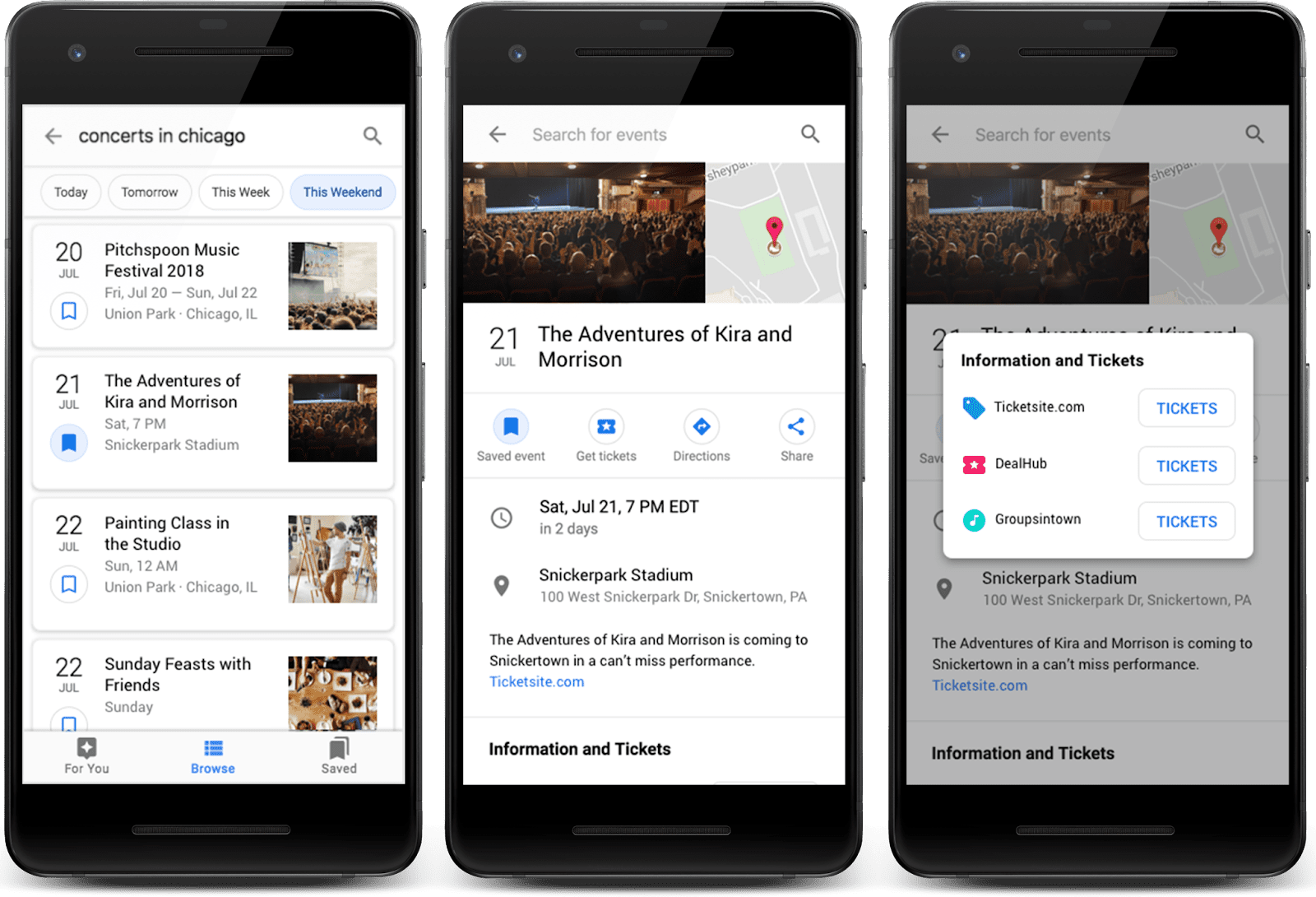

Why Use the Event Schema?
The Event Schema is a great way to help search engines understand the content of your web page. You provide search engines with additional information about your event by including structured data markup on your page. This information can be used to improve the visibility of your event in search results.
In addition to helping search engines understand your event, the Event Schema can also be used to display Rich Snippets in search results. Rich Snippets are special tags that are used to display additional information about a result in search results.
For events, Rich Snippets can include the date and time of the event, the location, and other important information. Including Rich Snippets on your event listing can help your click-through rate (CTR) by making your listing more relevant and informative.
Another benefit of using the Event Schema is that it can be used to markup both physical and virtual events. This is important for businesses that are looking to reach a wider audience with their event listings.
Lastly, the Event Schema is part of the larger schema.org initiative. This means that it is well-supported by major search engines and constantly updated with new features and properties.
Event Schema Properties
The Event Schema is made up of many different properties, each of which describes a different aspect of the event. These properties include the name of the event, the location, the date and time, the type of event, and more.
Here is a complete list of the properties that can be used in the Event Schema:
Required:
* name - The name of the event.
* url - The URL of the page that contains the event listing.
* startDate - The date and time that the event starts.
* endDate - The date and time that the event ends.
* location - The location of the event.
Recommended:
- name: The name of the event.
- url: The URL of the page that contains the event listing.
- description: A brief description of the event.
- image: An image associated with the event.
- startDate: The date and time when the event starts.
- endDate: The date and time when the event ends.
- location: The location of the event.
- organizer: The organization or person that is organizing the event.
- performance: A performance that is part of the event.
- eventStatus: The status of the event (e.g., upcoming, cancelled, etc.).
- offers: An offer associated with the event.
- eventAttendanceMode: The attendance mode for the event (e.g., online, offline, etc.).
- eventSchedule: The schedule of the event.
- previousStartDate: The start date of a previous instance of the event.
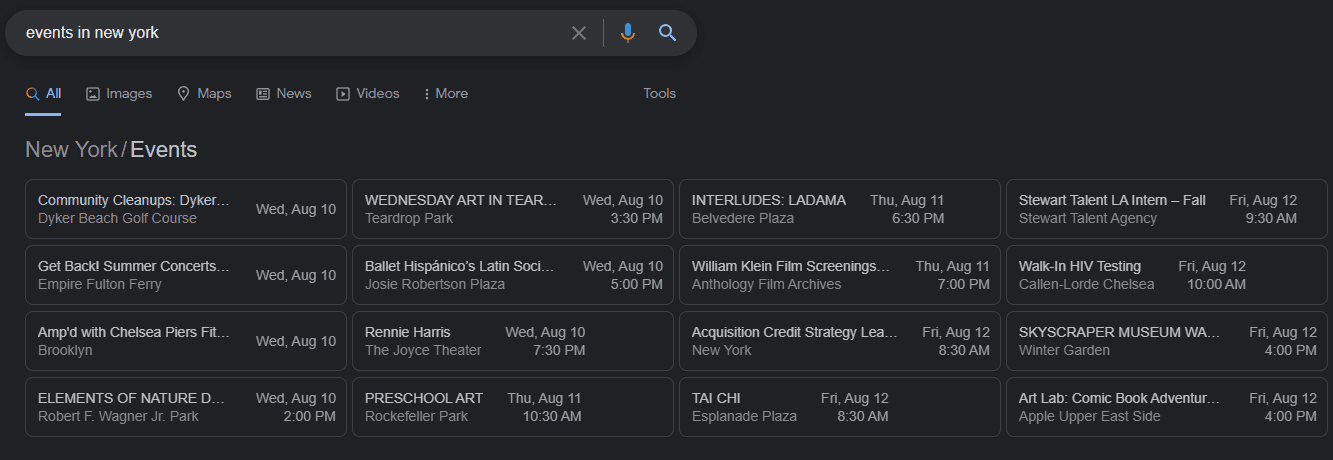
How Do You Create an Event Schema
There are a few different ways to implement the Event Schema on your website - through schema.org markup, using Google Tag Manager, and via WordPress plugin.
The most common way is to use schema.org markup, a type of code that can be added to your page to help search engines understand the page's content.
Another way to implement the Event Schema is to use Google Tag Manager. Google Tag Manager is a tool that allows you to manage and deploy code on your website. With Google Tag Manager, you can add the Event Schema code to your website without editing your site's code.
Finally, you can also use a WordPress plugin to implement the Event Schema on your WordPress site. There are a number of different plugins that you can use, each of which has its own set of features and options.
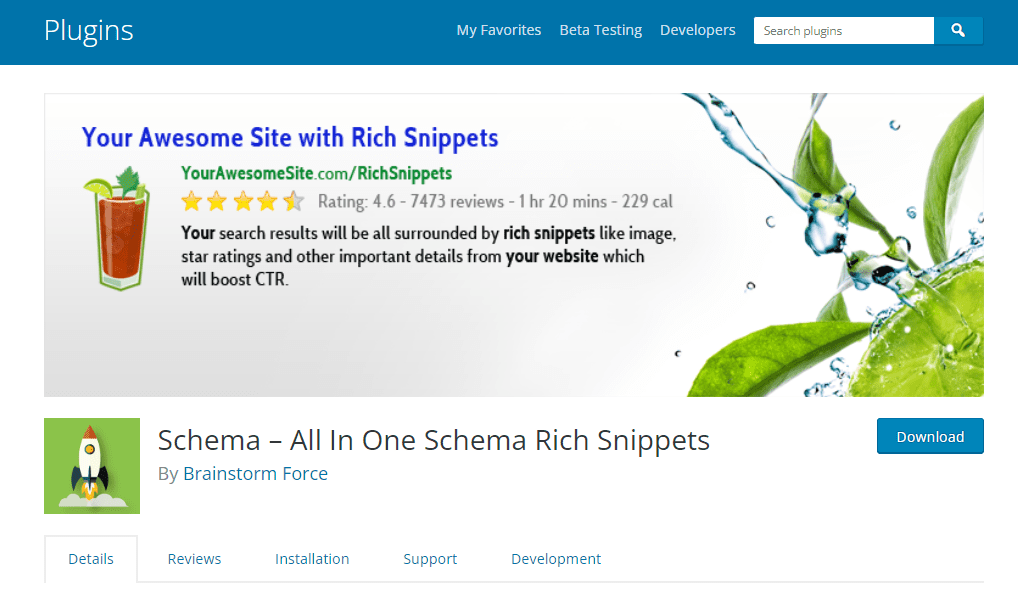

Some plugins include:
Choosing the right method for implementing the Event Schema will depend on your level of technical expertise and the tools that you have available.
No matter your chosen method, it is important to test your implementation before going live. This will help ensure that the Event Schema code is working properly and that your event listings are being displayed correctly in search results.
Event Schema Examples
Here are a few examples of how the Event Schema can be used:
- A concert listing on a ticketing website.
- An event listing on a hotel website.
- A conference listing on a conference website.
Because of its simplicity, Google considers it the most popular structured data format. You can achieve this by adding a JSON-LD structured data snippet to the beginning or <head> section of your event's page. If you're running an online event for free, it might appear as follows:
<html>
<head>
<title>Our Big Event</title>
<script type="application/ld+json">
{
"@context": "https://schema.org",
"@type": "Event",
"name": "The Big Company Event 2020",
"startDate": "2020-07-21T09:00:00-07:00",
"endDate": "2020-07-21T17:00-07:00",
"eventStatus": "https://schema.org/EventScheduled",
"eventAttendanceMode": "https://schema.org/OnlineEventAttendanceMode",
"location": {
"@type": "VirtualLocation",
"url": "https://theurlwhereattendeescanjoin.com/"
},
"image": [
"https://example.com/photos/1x1/photo.jpg",
"https://example.com/photos/4x3/photo.jpg",
"https://example.com/photos/16x9/photo.jpg"
],
"description": "Join us for our big 2020 event!",
"isAccessibleForFree": true,
"organizer": {
"@type": "Organization",
"name": "Your company name",
"url": "https://www.companyhomepage.com"
}
}
</script>
</head>
<body>
</body>
</html>
Event Schema Generators
If you don't want to write the Event Schema code yourself, you can use several generators to create the code for you. These generators will ask you for information about your events, such as the name, date, location, and description, and then they will generate the code for you.
Some of the most popular Event Schema generators include:
- Google's Structured Data Markup Helper
- Merkle's Event Rich Snippet Generator
- Schema.org's Event Creator Tool
After generating the code, you can add it to your website. Be sure to test your implementation before going live to ensure everything is working correctly.
How to Test Your Event Schema Markup
After adding the Event Schema code to your website, you can use Google's Structured Data Testing Tool to test your implementation. To use the tool, simply enter the URL of the page where you've added the code, and Google will analyze the page and tell you if there are any errors or warnings.
If there are no errors or warnings, then your Event Schema code is working correctly, and your event listings should start appearing in search results. If there are errors or warnings, you'll need to fix them before your listings appear.
Key Takeaway:
Event Schema is a code that you can add to your website to help search engines understand your event listings. There are several different ways to add the code to your website, and there are a number of different generators you can use to create the code for you.
The events industry has continued to evolve over the years, and using schema markup is one way to ensure your events are being discovered by potential guests.
Event Schema - Frequently Asked Questions
What are the different types of schema?
- Review Schema
- FAQ Schema
- HowTo Schema
- Local Business Schema
- Logo Schema
- Product Schema
- Event Schema
- Article Schema
- Course Schema
- Job Posting Scheme
- Recipe Scheme
What is event schema in SEO?
In SEO, event schema is a type of structured data that can be added to a website to help search engines understand the information on the page. An event schema can be used to mark up events, such as concerts, conferences, and hotel bookings. Adding event schema to a page can help it rank higher in search results for relevant queries.
How to mark an entire event website with one schema code?
To mark an entire event website with one schema code, you can add the code to the website's <head> section. This will ensure that all the site pages are marked up with the event schema code.
How to use event schema for multiple dates?
If you have an event that spans multiple dates, you can use the event schema code to mark up each individual date. This will help search engines understand the information on the page and provide users with more relevant results.
It will be ideal to use EventSeries, as recommended by SchemaOrg.
"An EventSeries is a collection of events that share some unifying characteristic. For example, "The Olympic Games" is a series, which is repeated regularly. The "2012 London Olympics" can be presented both as an Event in the series "Olympic Games", and as an EventSeries that included a number of sporting competitions as Events.
The nature of the association between the events in an EventSeries can vary, but typical examples could include a thematic event series (e.g. topical meetups or classes), or a series of regular events that share a location, attendee group and/or organizers."
Example:
<script type="application/ld+json">
[{
"@context" : "http://schema.org",
"@type" : "EventSeries",
"@id" : "http://www.olympic.org/olympic-games",
"name" : "Olympic Games",
"subEvent" : "http://www.olympic.org/rio-2016-summer-olympics",
"subEvent" : "http://www.olympic.org/london-2012-summer-olympics"
},
{
"@context" : "http://schema.org",
"@type" : "Event",
"@id" : "http://www.olympic.org/rio-2016-summer-olympics",
"name" : "The Rio 2016 Summer Olympics",
"startDate" : "2016-08-05",
"endDate" : "2016-08-21",
"url" : "http://www.rio2016.com",
"offers" : {
"@type" : "Offer",
"url" : "http://www.rio2016.com/en/tourist-information"
},
"superEvent" : "http://www.olympic.org/olympic-games",
"subEvent" : "http://www.rio2016.com/en/rowing"
},
{
"@context" : "http://schema.org",
"@type" : "Event",
"@id" : "http://www.rio2016.com/en/rowing",
"location" : {
"@type" : "Place",
"name" : "Lagoa Stadium",
"address" : "Av. Borges de Medeiros, 1524 - Lagoa, Rio de Janeiro - RJ, 22470-003, Brazil"
},
"startDate" : "2016-08-06",
"endDate" : "2016-08-13",
"superEvent": "http://www.olympic.org/rio-2016-summer-olympics"
},
{
"@context" : "http://schema.org",
"@type": "Event",
"@id" : "http://www.olympic.org/london-2012-summer-olympics",
"name" : "The London 2012 Summer Olympics",
"startDate" : "2012-07-27",
"endDate" : "2012-08-12",
"superEvent" : "http://www.olympic.org/olympic-games"
}]
</script>
Can I use Event Schema Markup for past events?
It is generally not recommended to use Event Schema Markup for past events, as the primary purpose of the markup is to provide information about upcoming events. However, if you have a website that includes information about past events and you want to provide additional context and detail about those events, you can use Event Schema Markup to do so.
It is important to note that using Event Schema Markup for past events may not be as effective as using it for upcoming events, as the markup is primarily designed to provide information about events that are yet to occur.
Additionally, using Event Schema Markup for past events may not be as useful for users, as the event has already occurred and the information provided by the markup may not be relevant.
If you do choose to use Event Schema Markup for past events, it is important to use accurate and up-to-date information and to test the markup using Google's Structured Data Testing Tool to ensure it is correct and valid.
Can I use Event Schema Markup for events that are not ticketed?
Yes, you can use Event Schema Markup for events that are not ticketed. When adding Event Schema Markup for a free event, you should include information about whether or not registration is required and any other relevant details.
To use Event Schema Markup for a free event, you can include the "offers" property in your markup and set the "availability" property to "InStock" and the "price" property to "0". For example:
"offers": {
"@type": "Offer",
"availability": "InStock",
"price": "0",
"priceCurrency": "USD"
}
It is important to note that using Event Schema Markup for a free event may not be as effective as using it for ticketed events, as the markup is primarily designed to provide information about events that require a ticket or admission fee. Additionally, using Event Schema Markup for a free event may not be as useful for users, as there is no cost associated with attending the event.
If you do choose to use Event Schema Markup for a free event, it is important to use accurate and up-to-date information and to test the markup using Google's Structured Data Testing Tool to ensure it is correct and valid.
Can I use Event Schema Markup in conjunction with other types of structured data?
Yes, you can use Event Schema Markup in conjunction with other types of structured data, such as Product Schema Markup or Local Business Schema Markup. This can help search engines understand the context and content of your website more accurately and improve the visibility of your website in search results.
For example, you could use Event Schema Markup to provide detailed information about an event being held at a local business, and use Local Business Schema Markup to provide information about the business itself. Or, you could use Event Schema Markup to provide information about a product launch event, and use Product Schema Markup to provide information about the product being launched.
To use Event Schema Markup in conjunction with other types of structured data, you will need to include both sets of markup in the HTML code of your website. It is important to ensure that the markup is valid and accurately reflects the content of your website, and to test the markup using Google's Structured Data Testing Tool to ensure it is correct and valid.
Is it necessary to use Event Schema Markup on all pages that contain information about an event?
It is generally recommended to use Event Schema Markup on all pages that contain information about an event, as the markup provides detailed information about the event and can help search engines understand the context and content of your website more accurately. However, it is not strictly necessary to use Event Schema Markup on every page that mentions an event, especially if the event is mentioned only briefly or in passing.
Using Event Schema Markup on pages that contain detailed information about an event can help improve the visibility of those pages in search results, particularly for searches related to the event. It can also provide a better user experience, as users can find more detailed and accurate information about the event.
If you do choose to use Event Schema Markup on pages that contain information about an event, it is important to use accurate and up-to-date information and to test the markup using Google's Structured Data Testing Tool to ensure it is correct and valid.
What is Link Equity? and How Does It Work? [+Examples]
It's 2022 and link building has become more complex than ever before. In order to rank, you need not only great content, but also be strategical about the links you're building to that content.
It's no longer enough to create great content and hope people will link to it; you need to actively seek out links, and ensure that they're of the highest quality. With these backlinks, you need to make sure that you are maximizing your link equity.
Link equity is the term used to describe the value that a backlink passes on to your website. This value is directly related to the quality of the linking website, as well as a few other factors.
In this post, we'll explain everything you need to know about link equity: what it is, how to calculate it, and how to use it to improve your link building strategy.
What is link equity in SEO?
Link equity or mostly referred to as "link juice" is the value that a website passes on to another site through a link. This value is then used by search engines as a ranking factor when determining where a website should rank in search results.
Link equity is determined by many factors, but the most important factor is the quality of the linking website. A high-quality website will pass more link equity than a low-quality website.
The purpose of link equity is to help search engines determine the quality of websites. By looking at the link equity that a website has, search engines can tell if a website is worth ranking highly in search results.
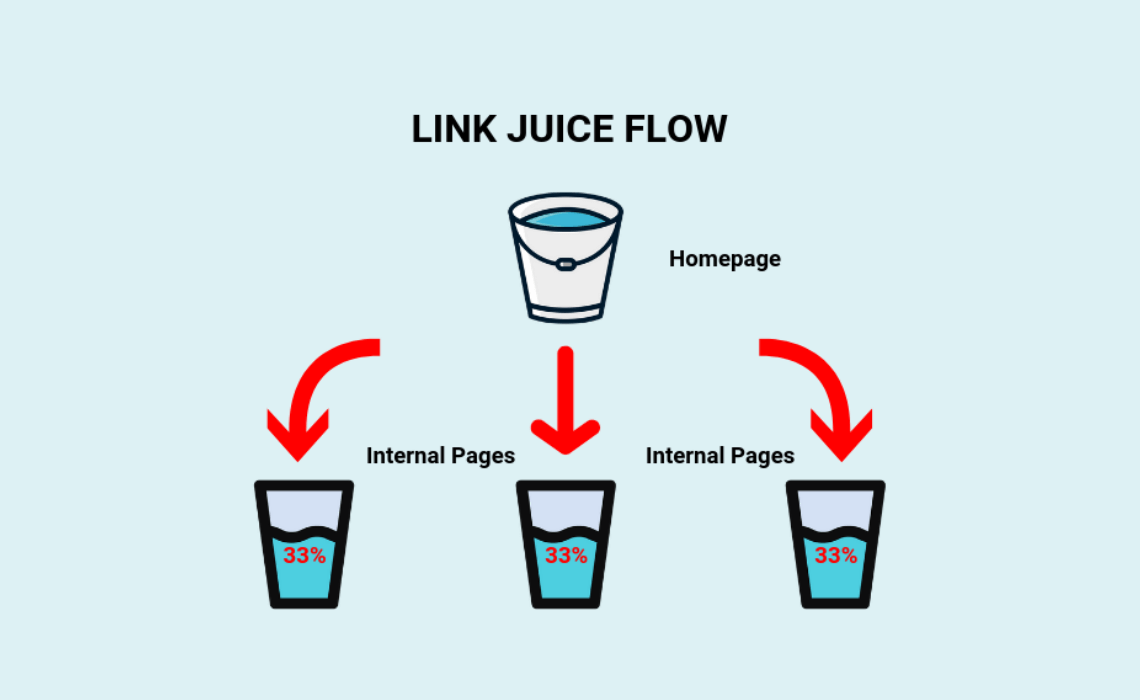

How does link equity work?
Link equity can be calculated using many different methods. The most common method is to use the PageRank algorithm.
The PageRank algorithm was created by Google and is used to determine the quality of a website. The algorithm looks at the number and quality of links pointing to a website to determine its PageRank score.
The higher the PageRank score, the more link equity a website has.
Another method for calculating link equity is Moz's Domain Authority (DA) metric. Domain Authority is similar to PageRank in that it looks at the number and quality of links pointing to a website.
However, Domain Authority also takes into account other factors, such as the age of the domain and the quality of the linking websites.
Domain Authority is a good metric to use when comparing the link equity of two websites.
How do you increase link equity?
There are a few ways to increase the link equity of your website:
1. Publish high-quality content.
This is the most important way to increase the link equity of your website. By publishing great content, you will naturally attract links from other websites. Remember, external links provide more ranking value compared to internal links. With that being said, focus on publishing great content that other websites will want to link to.
2. Determine the quality of the linking website.
Not all links are created equal. A link from a high-quality website will pass more link equity than a link from a low-quality website.
Therefore, it's important to determine the quality of the linking website before you build a link. You can do this by looking at the PageRank or Domain Authority score of the website.
3. Don't forget your internal links.
Internal links are also important for passing link equity. Make sure to include internal links in your content to other pages on your website. This will help increase the link equity of those pages.
Conduct a google site search of your website by using the following query on google: site:[yourdomain.com] + "keyword" to see what pages are being linked to the most, or to find content relevant to your target keyword that you can add internal links to.
4. Reclaim your broken links.
A broken link is a link that points to a page that no longer exists. These links are often the result of a change in website structure or a URL change.
If you find broken links on other websites, you can contact the website owner and ask them to replace the link with a link to your website. This is an easy way to get high-quality links from websites.
5. Delete or disavow low-quality links.
Low-quality links are links from spammy or low-quality websites. These links can hurt your website's ranking in search results.
If you find low-quality links pointing to your website, you can either contact the website owner and ask them to remove the link or use Google's disavow tool to disavow the link.
How do I get link juice?
In the past, getting link juice could simply be done by buying links from other websites. However, this is no longer the case.
Today, the best way to get link juice is to publish great content and build high-quality links naturally. By doing this, you will increase the link equity of your website, which will help improve your website's ranking in search results.
There are a few things to keep in mind when trying to get link juice:
- Quality over quantity: It's better to have a few high-quality links than a bunch of low-quality links.
- Avoid link farms: Link farms are websites that exist solely for the purpose of selling links. These websites often sell links for very low prices, which can hurt your website's ranking.
- Publish great content: As mentioned before, the best way to get link juice is to publish high-quality content that other websites will want to link to.
- Monitor your links: It's important to monitor the links pointing to your website. This will help you identify any low-quality links that could be hurting your website's ranking.
- Use different types of content: In addition to writing great blog posts, you can also get link juice by creating infographics, videos, podcasts, or other types of content that other websites will want to link to.
- Reach out to unlinked brand mentions: If you find that other websites are mentioning your brand but not linking to your website, you can reach out to them and ask them to link to your website. Check out this link reclamation guide.
- Broken link building: If you found a good page that is no longer available, you can reach out to the website owner and ask them to link to your website or content instead. Further reading on broken link building.
- Guest blogging: One of the best ways to get high-quality links is to guest blog on other websites. This is a great way to build relationships with other bloggers in your industry while also getting your name and website in front of a new audience. Learn more about guest post service.
- Infographics: People love visual content, and infographics are a great way to get link juice. Not only do they get shared a lot on social media, but they also tend to be linked to from other websites.
- The Skyscraper Technique: The Skyscraper Technique is a method of link building that involves finding content that is already popular and creating something even better. This is a great way to get links from other websites because you are offering something new and valuable.
- Resource Page Link Building: Resource pages are pages on a website that lists all of the resources related to a certain topic. If you have a piece of content that would be a good fit for a resource page, you can reach out to the website owner and ask them to link to your content.
- Wikipedia link building: Wikipedia is one of the most popular websites in the world, and it's also a great way to get high-quality links. If you have a piece of content that would be a good fit for Wikipedia, you can submit it to the site. Wikipedia will add links in the footnotes and references section, which will help improve your website's ranking.
- Local link building: If you have a local business, you can get links from other local businesses in your area. This is a great way to build relationships with other businesses while also getting your website in front of a new audience.
- Profile link building: Profile link building is a great way to get links from other websites. You can create profiles on social media sites, directory sites, and forums, and include a link to your website in your profile.
- Directory link building: Directory link building is a great way to get links from other websites. You can submit your website to online directories, and include a link to your website in your profile.
- Forum link building: Forum link building is a great way to get links from other websites. You can participate in forums related to your industry, and include a link to your website in your signature.
- Reach out to links will no-follow tags: If you find a link to your website that has a no-follow tag, you can reach out to the website owner and ask them to remove the tag and make a follow attribute.
Generally, website owners are happy to do this if you provide them with value such as a link back to their website from an equally good website.
Frequently Asked Questions
How long does it take link equity to affect a site?
There is no definitive answer to this question, as it can vary depending on a number of factors. However, it is generally agreed that it can take anywhere from a few weeks to a few months for link equity to have an impact on a website's ranking.
How to find out which blog posts have the most link equity?
There are a number of ways to find out which blog posts have the most link equity. One way is to use a tool like Moz's Open Site Explorer, which allows you to see how many links each page on your website has.
Another way is to use a tool like BuzzSumo, which allows you to see how popular each piece of content on your website is.
Finally, you can also ask Google which pages on your website have the most link equity by using the "link:" operator.
How to maintain link equity when updating taxonomy?
When updating your website's taxonomy, it is important to maintain the link equity of your existing pages. One way to do this is to use a tool like Screaming Frog, which allows you to find all of the links on your website and redirect them to the new pages.
Another way to maintain link equity is to use a 301 redirect, which permanently redirects visitors from one page to another.
Finally, you can also use a rel="canonical" tag, which tells search engines that a certain page is the preferred version of a page with duplicate content.
How do links to your site help you?
Links to your website can help improve your website's ranking in search engines, as well as increase traffic to your website.
Links can also help build relationships with other websites, which can lead to opportunities for guest posting, joint ventures, and other partnerships.
How is link equity determined?
Link equity is determined by a number of factors, including the number of links pointing to a page, the quality of the links, and the anchor text of the links.
Here's a quick checklist on determining the value of a link:
1) Is it relevant?
2) Is it coming from a high-quality, authoritative website?
3) Is the link a follow link?
4) Is the link surrounded by other links?
5) Does the status code of the page return a 200 OK?
6) Is the link an exact match to the keyword you're targeting?
7) Is the link surrounded by other links with the same anchor text?
8) Is the link from a website that is in the same country as your target audience?
9) Is the link from a website that is in the same language as your target audience?
10) Does the website linking to you have a similar theme as your website?
If you answered "yes" to all of these questions, then the link is likely to be valuable.
Which types of links are the most valuable?
The most valuable links are those that come from high-quality websites that are relevant to your website.
Links from directories and forums are also valuable, as they can help increase the visibility of your website.
Can I lose link equity if a linking website goes down or removes the link?
Yes, if a linking website goes down or removes the link to your website, you may lose some of the link equity that you gained from that link. Link equity is a measure of the strength or value of a webpage based on the number and quality of the links pointing to it. When a linking website goes down or removes the link, it can negatively impact the link equity of the linked webpage.
This is because the inbound link is no longer available to pass value to the webpage. It is important to monitor the health and quality of your inbound links to ensure that they are helping rather than hindering your search rankings.
Can I transfer link equity from one webpage to another on my website?
Yes, you can transfer link equity from one webpage to another within your website through the use of internal linking. Internal linking is the process of linking from one webpage on your website to another webpage on the same website. This can help to distribute link equity and authority throughout your website, and can also help search engines to better understand the structure and content of your website.
To transfer link equity through internal linking, you can use hyperlinks to link from one webpage to another within your website. The link equity of the linking webpage will be passed to the linked webpage, helping to improve its ranking in search results. It is important to use relevant and high-quality internal links to ensure that the link equity is being passed effectively and to avoid diluting the link equity of your website.
In addition to transferring link equity, internal linking can also help to improve the user experience by making it easier for visitors to navigate your website and find the content they are looking for. It can also help to increase the crawlability of your website by providing search engines with more pathways to discover and index your content.
Can I lose link equity if I change the URL of a webpage?
Yes, if you change the URL of a webpage, you may lose some of the link equity that the page had previously accumulated. Link equity is a measure of the strength or value of a webpage based on the number and quality of the links pointing to it. When you change the URL of a webpage, the inbound links that were pointing to the old URL will no longer be pointing to the page, and the page will need to start building link equity from scratch.
To minimize the loss of link equity when changing the URL of a webpage, it is important to use a 301 redirect. A 301 redirect is a permanent redirect that tells search engines that the old URL has been permanently moved to the new URL. This helps to preserve the link equity of the page by transferring the value of the inbound links from the old URL to the new URL.
It is important to note that changing the URL of a webpage can also have an impact on the ranking of the page in search results. This is because search engines use the URL of a webpage as one of the factors in determining its ranking. As a result, it is important to carefully consider the impact of changing the URL on both the link equity and the ranking of the page.
Can I gain link equity from a nofollow link?
A nofollow link is a type of hyperlink that tells search engines not to follow or count the link as a vote of endorsement for the linked webpage. While nofollow links do not pass link equity in the same way as dofollow links, they can still be valuable for a number of reasons.
One reason is that nofollow links can help to drive traffic to your website. When a user clicks on a nofollow link, they will be directed to your website, which can help to increase your traffic and visibility.
Another reason is that nofollow links can indicate to search engines that your website is being mentioned or referenced by other websites. This can help to improve the credibility and authority of your website, which can in turn help to improve its ranking in search results.
It is important to note that while nofollow links may not directly contribute to link equity, they can still be valuable for other aspects of search engine optimization. As a result, it is important to consider the value of nofollow links in the context of your overall SEO strategy.
Link Exchange: The Proper Way To Do Reciprocal Linking
What is a link exchange?
Link exchange is a process where two websites agree to place each other's links on their respective websites in order to improve their search engine rankings and drive more traffic to their sites.
Though this practice has been abused for many years, e.g. a webmaster tries to rank for terms like “car insurance Australia” will find other webmasters in the same/different industry who would be interested in doing link exchanges.
The approach is to link to another website with exact match anchor text (another webmaster is trying to rank for) and get a link from that other website (for a target keyword he is trying to rank for as well).
Google itself instructed SEOs and webmasters about this approach of trying to manipulate Google search rankings.
“ Excessive link exchanges ("Link to me and I'll link to you") or partner pages exclusively for the sake of cross-linking. “
Does that mean, link exchange isn’t effective anymore these days?
The Rise Of Thematic Link Exchange
I’m sure many SEOs and bloggers will disagree with me that thematic link exchange still works up to this date.
Thematic link exchange is a relationship-based link building strategy that involves intentional or unintentional linking and getting a link to and from another webmaster in the same industry who isn’t a direct competitor of the business.
Here are four thematic link exchange methods that work pretty well in most industries, especially those that are sitting in very competitive ones.
1. Relationship-based Link Acquisition
Link exchange often occurs in an unintentional way. For example, I’ve been blogging for many years now with my first blog and here at SharpRocket.
I’ve built relationships with industry friends who also blog about SEO and link building.
By acknowledging their work through linking to their content assets that serve as additional references or resources in my existing posts, it’s an added value initiated to build trust which strengthens the open relationship with them.
For instance, I linked to Rohit Palit’s post on tiered link building. After a few months, he gave me a backlink pointing to my content creation and promotion guide in his article about increasing the domain authority of a website.
We’re not direct competitors, as he is not accepting sole link building services as his website client offering.
But here’s another case where one of my direct competitors linked to me.
PageOnePower is a link building company that has been in the industry since 2010, they blog about the same topic I’m passionate about.
Here are a few backlinks I gave to PageOnePower.


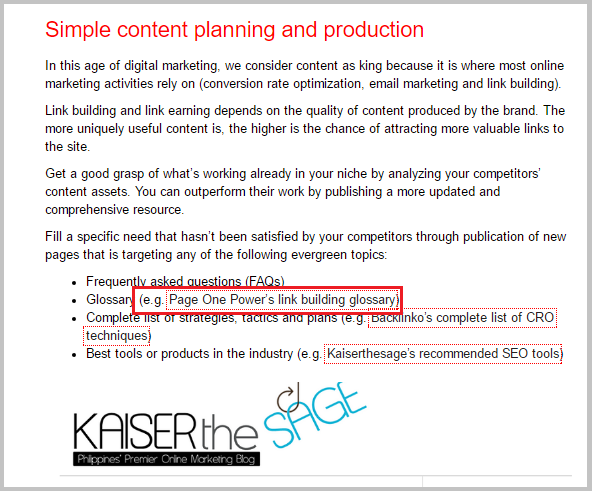

Relationships take time to get some returns. Guys from PageOnePower have give contextual backlinks to DigitalPhilippines many times.
These are backlinks not built through manual outreach, but simply because they’ve known our brand, we have already given them and have established an authority in the link building scene. These backlinks are naturally earned.
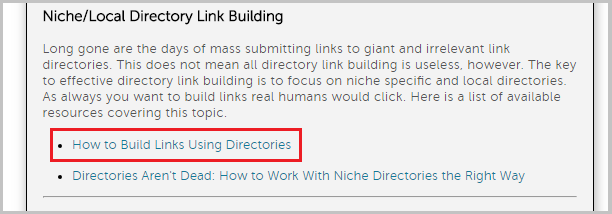

Here is another example of how relationships can be effective for link exchanges. It is a conversation between Rohit Palit and Patrick Coombe.
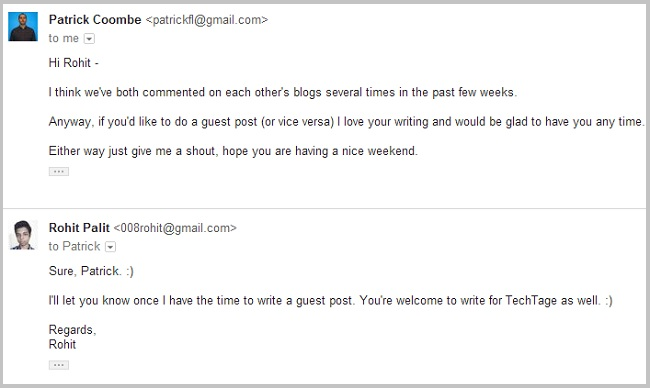

Both have provided value to each other, as they’ve been commenting on each other’s blogs many times (see image above).
If you’re wondering how you can start building relationships with other industry bloggers, here are a few tips you can apply:
- Start showing yourself in the blogosphere. Comment on other people’s blogs. It’d only take you 3 to 5 minutes for each comment per post (only look for relevant content you can give valuable insights to). If each blogger posts once every week, it won’t consume much of your time.
- Send a “thank you” email for sharing his actionable tips on his blog or find a similar interest both of you can relate with. For example, I often receive responses that they’ve visited Manila or some other parts of the country, so I asked them how’s their vacation experience here. It starts a smooth flow of conversation.
- Share other bloggers’ content on other blogs. Don’t use the default Twitter share: TITLE OF POST by TWITTER HANDLE. Add descriptive call-to-actions to let your followers click on the page and start reading it – it’s way to add more value than the simply doing a default Twitter share.
2. Content Swap
Guest posting is still one of the mainstream link building method these days because it’s pretty scalable and can really help skyrocket one website’s traffic even in just a short period. Combined with other link building tactics, it is a robust link building strategy one can ever wish to implement and see results for themselves.
However, there’s one problem I’ve seen with many guest posting inquiries these days -- they aren’t giving any value. Even if the content they intend to provide is relevant to my blog, I won’t see that as high value.
Content swap is the solution. It is a link acquisition process where both bloggers will provide high-value content to each other, with the goal of bringing exposure to a new reading audience for both sides.
This is very helpful when building links to websites in difficult industries like legal.
You can actualize this process by prospecting for a list of local opportunities, where most legal industries focus on local marketing/branding.
You can try Google searches for “Miami” “legal” for example, then find any company websites that have recent blog updates so you’ll know if they are publishing content on a regular basis. Make sure that you don’t include link prospects that are not in direct competition with you – it’ll be close to impossible to get links from them.
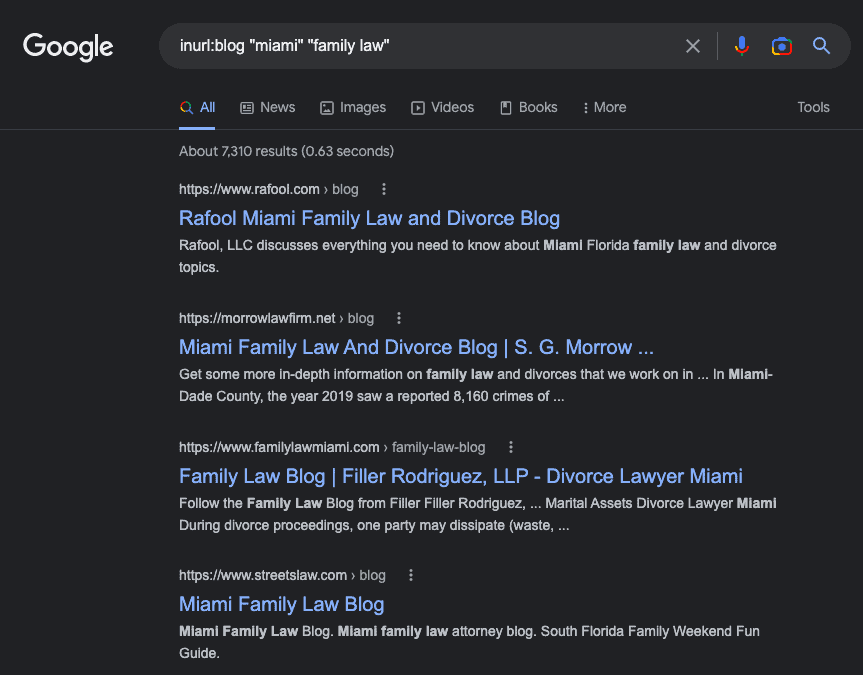

Once you have a list of local industry bloggers, it’s time to reach out to them.
Here’s a template that I used for content swap outreach.
Subject: Content swap for your legal blog, %Name%
Hi %Name%,
My name is Tiffanny Chappels, an immigration lawyer and legal blogger based in Miami.
I came across your website and really like what you recently published. I would like both of our blogs to grow website traffic and would like to know if you'd be interested for a content exchange - I write for your blog, you write for mine.
I'd love to write a post for your blog related to child custody or family law.
If it needs to be in a conversational tone, I'd be happy to do that.
Let me know if your thoughts.
All the best,
Tiffany
A few things why this pitch works:
- Industry-to-industry-based outreach emails is much more effective as they become more relevant to the recipient of the email.
- Adding where you’re located as a company adds a quick connection, with that, you can use a corporate email of your client.
- Propose added value by sharing customized content for your guest post – conversational tone. This helps you get a higher conversion rate.
3. Content Partnership
Another ethical backlink exchange strategy that works is a content partnership, originally discussed by Jason Acidre on his SEO blog.
I’ve found that this is not scalable to all industries, especially in niches where there are no active bloggers.
But the key to making this link building method work is making yourself familiar with the brand you’re reaching out to. After all, you want a partnership that can generate consistent results for both ends.
The difference with this link building technique compared to content swap is that you can offer different types/formats of content based on each party’s needs, options such as:
Conducting a back-to-back interview. See this example at SEO Hacker and Kaiserthesage.
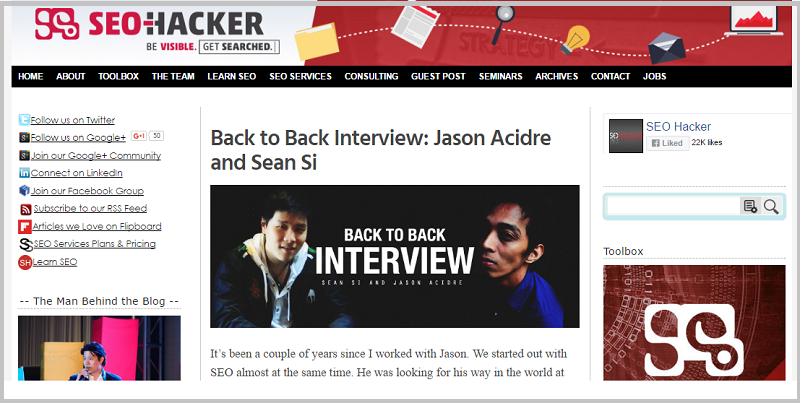

Inviting your content partner to write a guest blog on your site and writing content for them as well (see this guest post at GotchSEO and Webris).
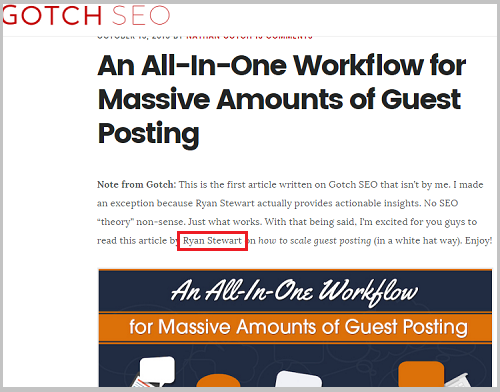

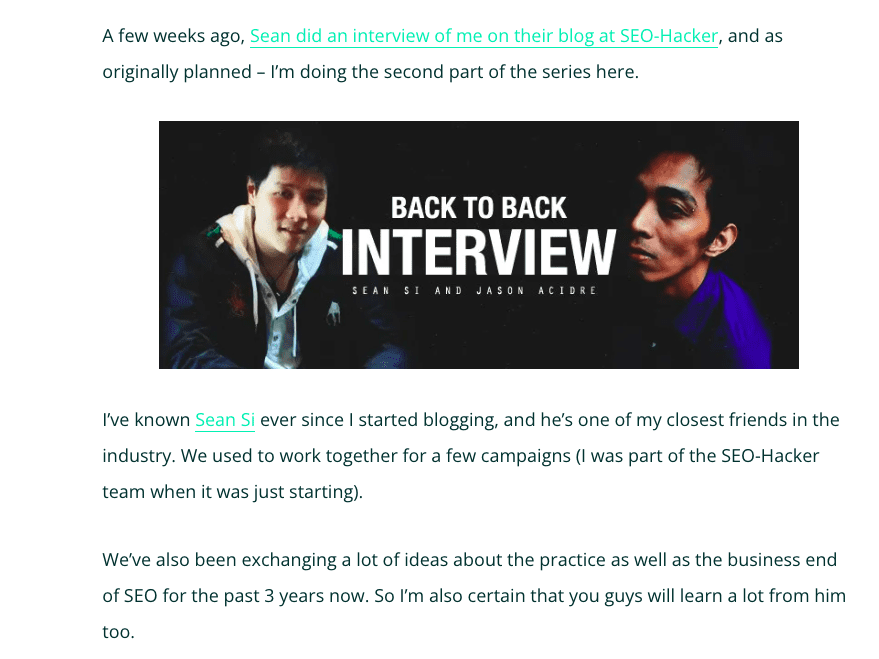

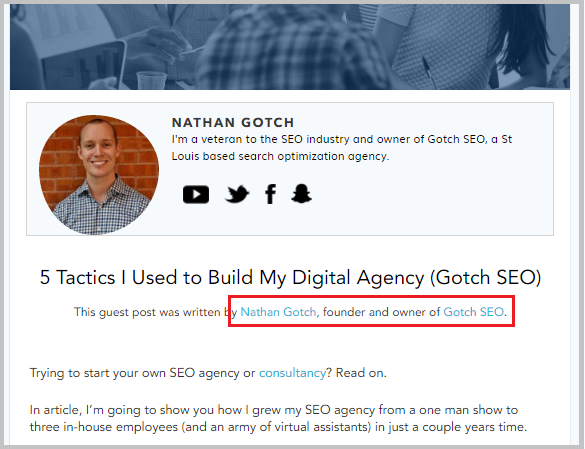

Offering an exclusive write-up or promotion/sponsored post on his site and in exchange, making him as your media partner. I wrote a promotional post for my previous startup workshop for Tycoon, in return, I added him as my media partner for my book.


For the outreach phase, here is an example pitch Jason sent to one of his content partners. You can make variations of it based on the value proposition you’d like to provide to your targeted content partners.
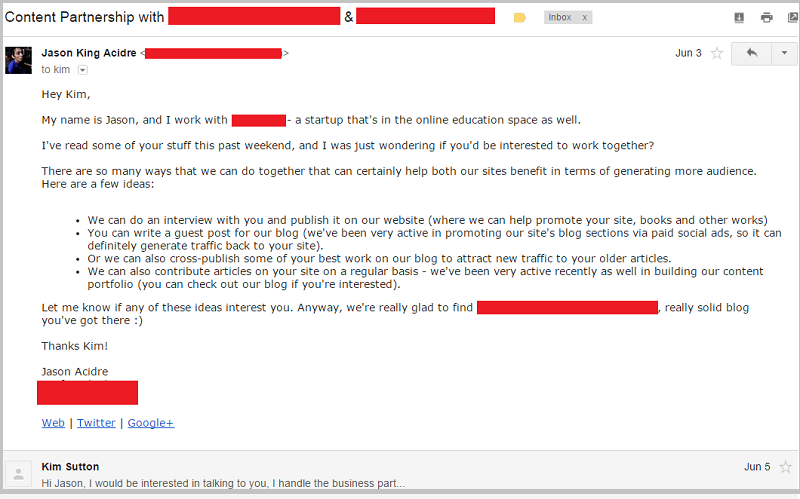

The value of this thematic link exchange strategy is far more beneficial than a single link you’ll get from the typical link exchange, because this content partnership can help generate leads for both parties (of course they shouldn’t be competing with each other), referral traffic, expanded branded exposure/influence and additional following for both social accounts.
Now It’s Your Turn…
Do you have a thematic link exchange strategy that works for you?
Or maybe you have a question about implementing any of the tactics in our above list?
Either way, leave a quick comment below.
I'll be more than happy to reply to comments and answer questions.
Frequently Asked Questions About Link Exchange
Is link exchange still effective for SEO?
Link exchange was once a popular technique for improving search engine rankings, but it is now generally considered to be less effective than it was in the past. This is because search engines have become more sophisticated and can now more easily identify and penalize websites that engage in link exchange solely for the purpose of manipulating search engine rankings.
It's important to note that links from other websites can still be a valuable part of a comprehensive search engine optimization (SEO) strategy, but they should be earned through high-quality content and natural outreach efforts rather than through link exchange agreements.
Search engines like Google use complex algorithms to evaluate the quality and relevance of websites and assign them a ranking in search results. While links from other websites can be one factor that is considered in these algorithms, they are just one of many factors, and they are not as important as they once were.
In general, it is more effective to focus on creating high-quality, informative content that will naturally attract links from other websites rather than trying to manipulate search engine rankings through link exchange. This will provide more value to your website's visitors and will be more sustainable over the long term.
Is link exchange considered spam?
Link exchange is not necessarily considered spam, but it can be if it is done in a way that is considered to be manipulative or deceptive. For example, if a website engages in link exchange with other websites solely for the purpose of boosting its search engine rankings, it could be considered spam.
In general, search engines do not look favorably upon practices that are intended to manipulate search engine rankings or deceive users. This includes link exchange schemes that are designed solely for the purpose of manipulating search engine rankings, rather than for the purpose of providing value to users.
It's important to note that participating in link exchange can be a legitimate and valuable part of a comprehensive SEO strategy, as long as it is done in a way that is transparent and provides value to users. This might include participating in link exchange with other websites in your industry or niche, or creating valuable resources that other websites will want to link to.
However, it's important to avoid participating in link exchange schemes that are designed solely for the purpose of manipulating search engine rankings, as this can be considered spam and could result in penalties from search engines.
What are some alternatives to link exchange?
There are several alternatives to link exchange that can be more effective for improving search engine rankings and driving traffic to your website. These include:
- Creating high-quality, informative content: One of the most effective ways to attract natural links from other websites is to create content that is valuable and informative to your target audience. This might include blog posts, articles, infographics, videos, or other types of content that provide value to your visitors.
- Earning links through public relations and marketing efforts: Another way to earn links is to engage in public relations and marketing efforts that can help to promote your website and its content to a wider audience. This might include guest blogging, speaking at conferences, or participating in industry events.
- Participating in relevant online communities and forums: Building relationships with other professionals and experts in your industry or niche can be a great way to earn links. This can be done by participating in relevant online communities and forums, such as LinkedIn groups or industry-specific forums.
- Building relationships with influencers: Influencer marketing can be a powerful way to earn links and drive traffic to your website. This involves building relationships with influencers in your industry or niche and working with them to promote your website and its content to their followers.
- Using social media to promote your content: Social media platforms like Facebook, Twitter, and Instagram can be powerful tools for promoting your content and earning links. By regularly posting high-quality content and engaging with your followers, you can drive traffic to your website and earn natural links from other websites.
How can I find websites to participate in link exchange with?
There are several ways to find websites to participate in link exchange with:
- Search for websites in your industry or niche: One way to find websites to participate in link exchange with is to search for websites in your industry or niche that may be interested in link exchange. You can use search engines like Google or specialized link exchange directories to find potential partners.
- Use link analysis tools: Tools like Ahrefs or Majestic can help you identify websites that are already linking to similar websites in your industry or niche. You can use these tools to find potential link exchange partners and reach out to them to see if they would be interested in linking to your website as well.
- Join a link exchange network: Another option is to join a link exchange network, which is a group of websites that agree to link to each other in order to improve their search engine rankings. Link exchange networks can be a good way to find potential partners, but it's important to be cautious and make sure that the websites in the network are of high quality and relevant to your own website.
- Consider other types of partnerships: In addition to link exchange, there are other types of partnerships that you can pursue in order to improve your search engine rankings and drive traffic to your website. This might include guest blogging, content syndication, or cross-promotion with other websites.
How do I measure the success of a link exchange?
- Track traffic from the linked website: One way to measure the success of a link exchange is to track the traffic that you receive from the linked website using tools like Google Analytics. By looking at the referral traffic from the linked website, you can get a sense of how effective the link exchange is in driving traffic to your website.
- Check your search engine rankings: Another way to measure the success of a link exchange is to track the search engine rankings of your website and see if there is an improvement after participating in the link exchange. You can use tools like Ahrefs or SEMrush to track your rankings and see if they have improved as a result of the link exchange.
- Check your Domain Authority (DA) and Page Authority (PA): Domain Authority (DA) and Page Authority (PA) are measures of the strength and quality of a website or web page, respectively. Higher scores indicate that a website or page is more likely to rank well in search results. You can use tools like Ahrefs or Moz to check your website's DA and PA and see if they have improved as a result of the link exchange.
- Monitor your website's overall performance: In addition to tracking specific metrics like traffic and search engine rankings, it's also important to monitor your website's overall performance and see if the link exchange is having a positive impact. This might include looking at metrics like website traffic, user engagement, and conversions.
Can I participate in link exchange with websites in different languages?
Yes, you can participate in link exchange with websites in different languages. This can be a good way to reach a wider audience and drive traffic to your website from other countries. However, you should be aware that search engines may treat links from websites in different languages differently, so it's important to carefully consider the potential impact on your search engine rankings before participating in link exchange with websites in different languages.
It's also important to consider the language and cultural differences when participating in link exchange with websites in other countries. For example, you should make sure that the content on your website is appropriate and relevant for the target audience, and that the link exchange is transparent and provides value to users.
Finally, it's a good idea to use a translation tool or professional translation service to ensure that any communication with the website owner or webmaster is clear and accurate. This will help to ensure that the link exchange process goes smoothly and that both parties are able to benefit from the arrangement.
19 Actionable SaaS Link Building Strategies For 2023 [Free Checklist & Templates]
This is the most detailed guide to SaaS link building online.
So if you want to:
- Build scalable backlinks to your SaaS blog and landing pages
- See examples of the world's best SaaS link building campaigns
- Increase new demos and trials from new customers
You'll love detailed strategies in today's guide.
Click on any link below to jump to a section.
Table of Contents
Let's get started.
Steal Your Competitors Best Keywords Using Capterra
Capterra has the most number of software reviews on the web.
As of now, their "Software Categories" contain 850+ different categories.
That's a lot!
And you can take advantage of what they're currently doing.
How?
First, if you don't know who your competitors are, or if you're looking for additional ones to do research on, go through the list of SaaS companies in Capterra.
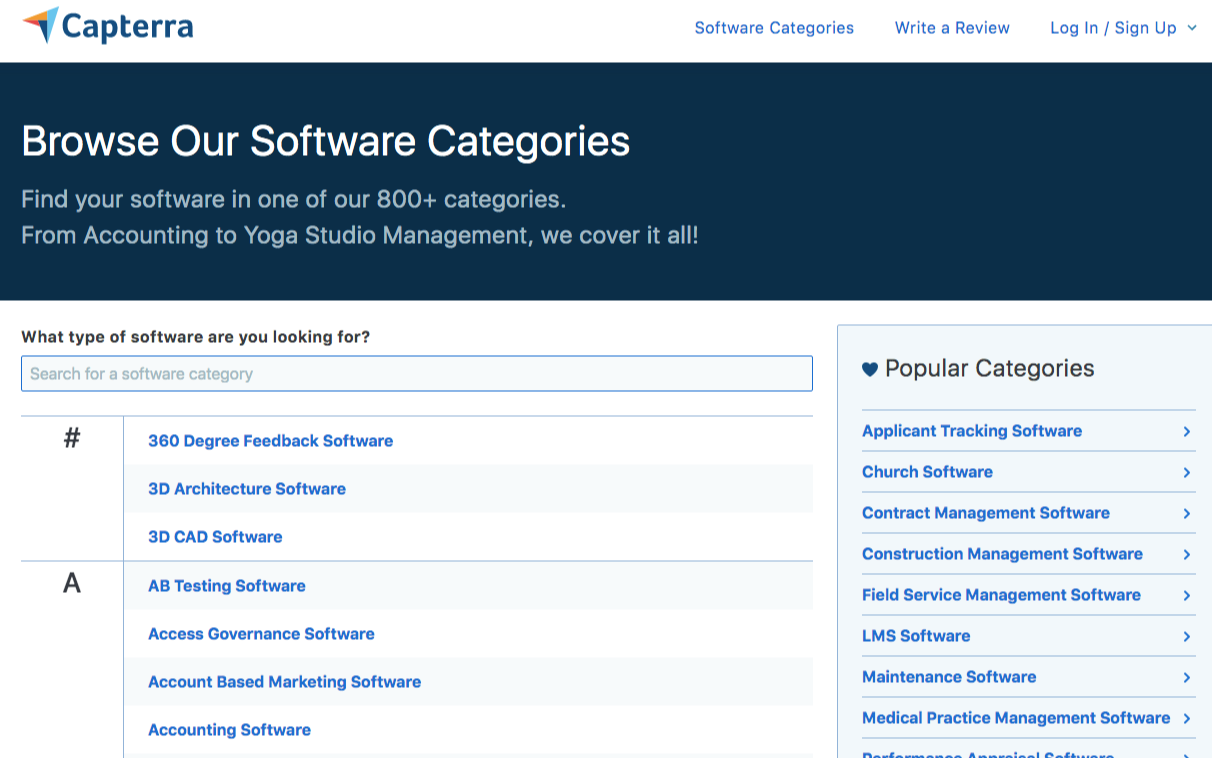

Once you find these related software businesses, you can check their backlink profiles using Ahrefs.
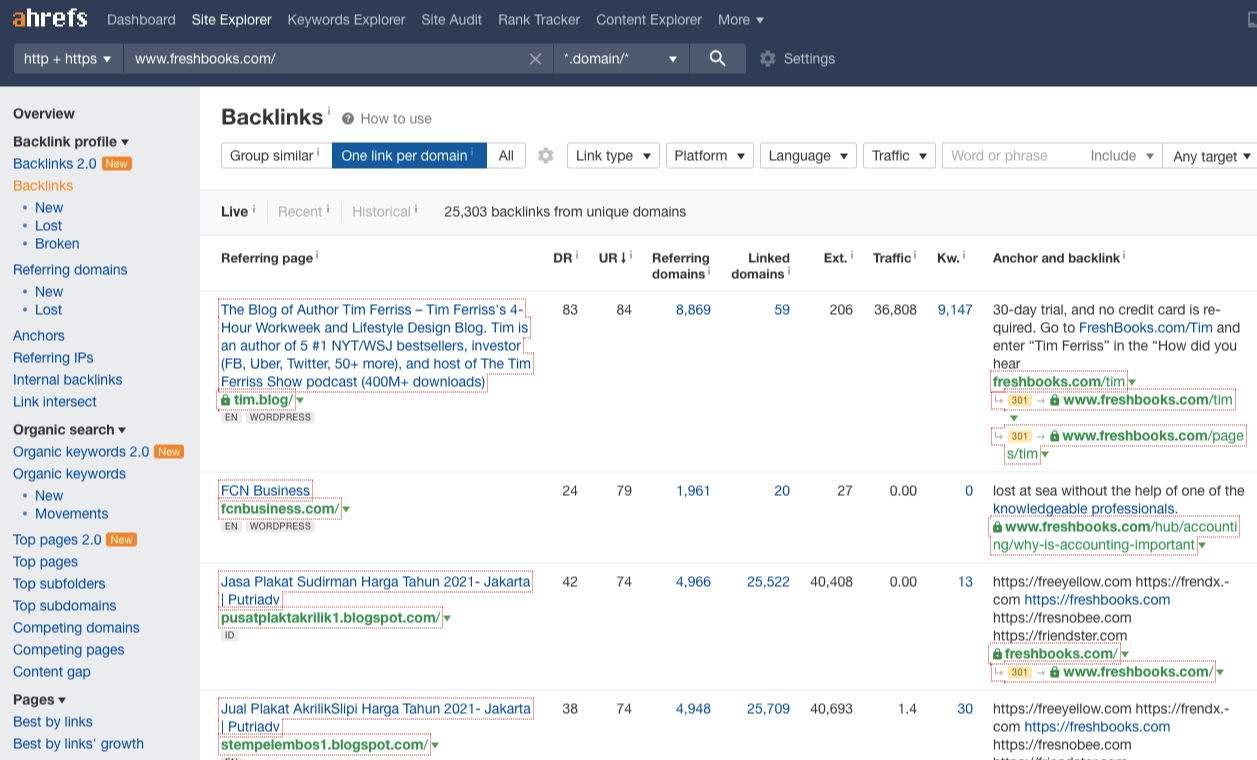

This can give you an idea of what types of backlinks they get for their SaaS website. And what niche-specific link building strategies they're using to get more targeted backlinks.
Secondly, get keyword insights from Capterra.
Most SaaS companies have the challenge of determining what best keywords to target for their landing pages.
Take EnsoData for example. They offer artificial intelligence (AI) scoring and analysis for sleep technicians. They have clear service offerings, but they're not targeting any specific niche keywords for their pages.


This happens mostly for SaaS with very specific core offerings.
The way to solve them is to let Capterra do the keyword research for you.
By looking at their Capterra page, you can easily find some core keywords.
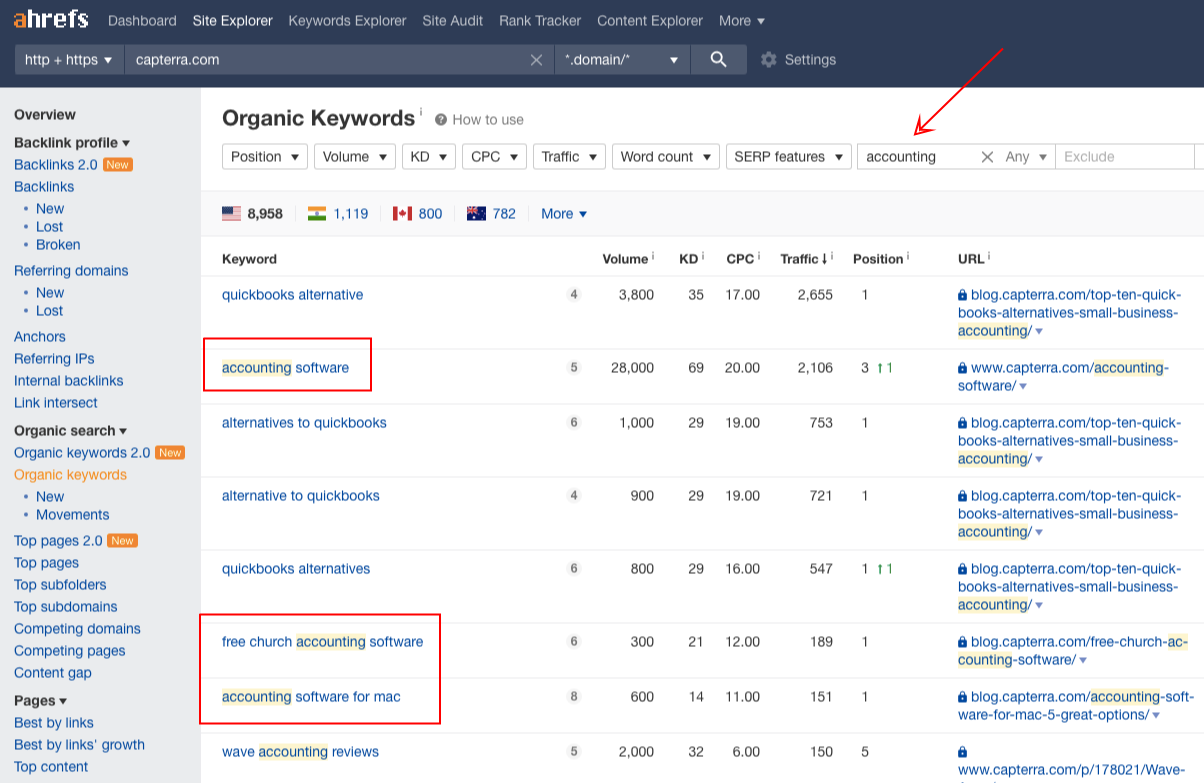

By doing these two things: finding competitors on Capterra's software categories and discovering the best keywords on Capterra pages, you can publish content assets that are likely to rank and earn links along the way.
Use Help Center To Earn Fresh Links
You build trust from new customers when you help people with their problems.
That increases demos and trials for your SaaS.
One way to achieve that is to use the Help Center of Knowledge Base.
Take a look at Hubspot and Uber. Both these two SaaS companies effectively use Help Centers for many purposes:
Show their existing customers how to use their products and their features to solve their problems.
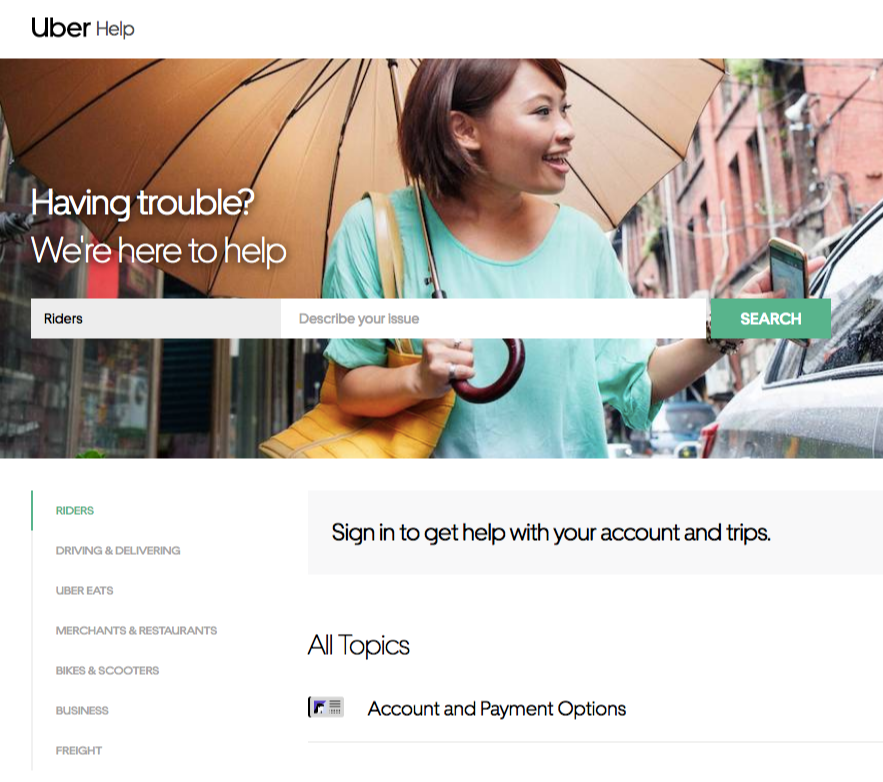

Provide tips from certified experts and industry practitioners.
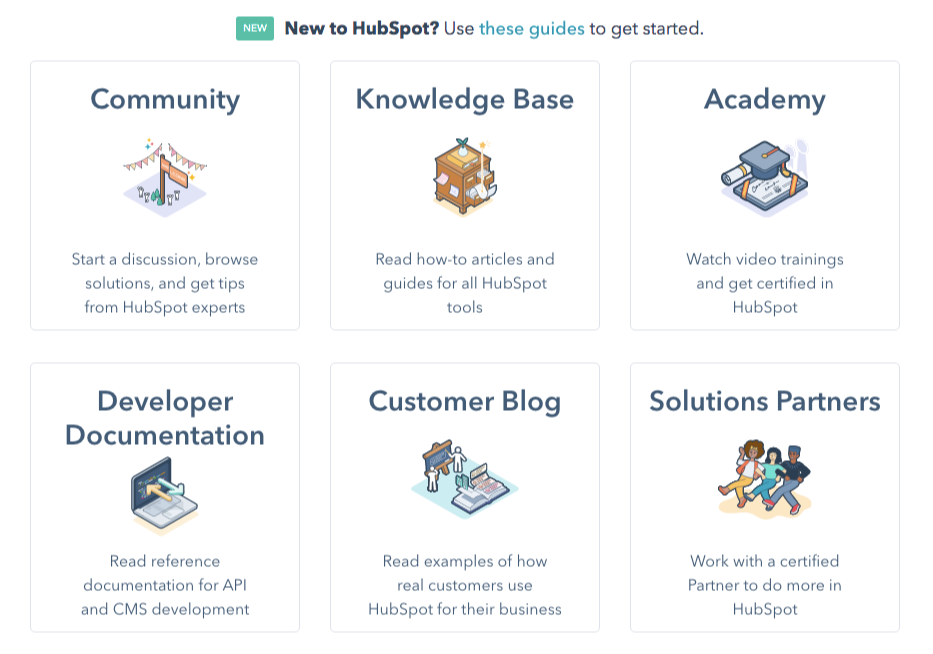

You earn fresh links from people you've helped. They will talk about it on forums and on blogs.
The reason is simple:
They found your guides, tips, and product features helpful for them for their communities.
See the number of links Hubspot and Uber earned with their Help Centers.




You can check out our link building services and SEO services for SaaS.
Discover Untapped Link Opportunities From Google Play
If you have created an app for your SaaS, this is for you.
Take a look at the people who linked to your app in Google Play.
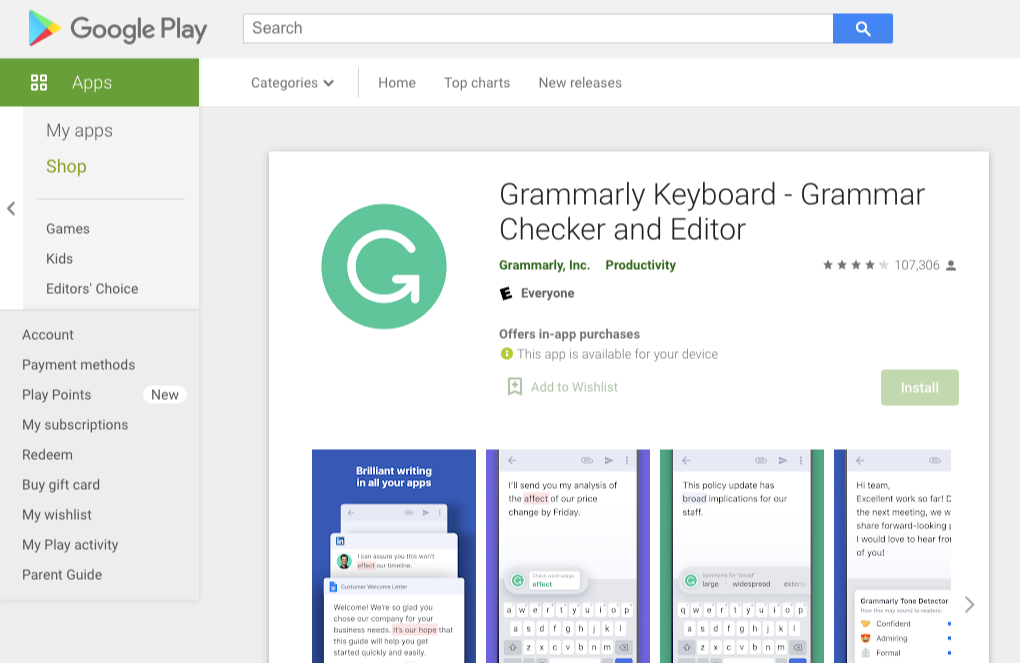

Then see if it makes sense to have another opportunity to get backlinks from them.


If they mention and link to you, they are familiar with your SaaS brand.
It makes sense to reach out again and offer another value in terms of content.
Make a list of all people who linked to your app — who can be your backlink prospects for another link building campaign - i.e. guest posting.
Execute another link building campaign for your new list of backlink opportunities.
[optin-monster slug="eb0peyi0atyximzovsgv"]
Use Product Hunt To Earn Branded Links
Product Hunt is your go-to website when finding the best new software in the market.
It's also a great way to get feedback from SaaS founders, marketers, and the tech community.
If you want more new customers for your software, launch it on Product Hunt.
As you get traction, you earn eyeballs from publishers, tech content creators, and linkers on different websites.
That way, you earn new links to your SaaS brand.
Take LeadForms for example:
After launching their software product to Product Hunt, here's what they got:
- Generated over $10,000 ARR in the pipeline (some super highly qualified leads)
- Close to 2,000 unique page views
- A couple of backlink opportunities
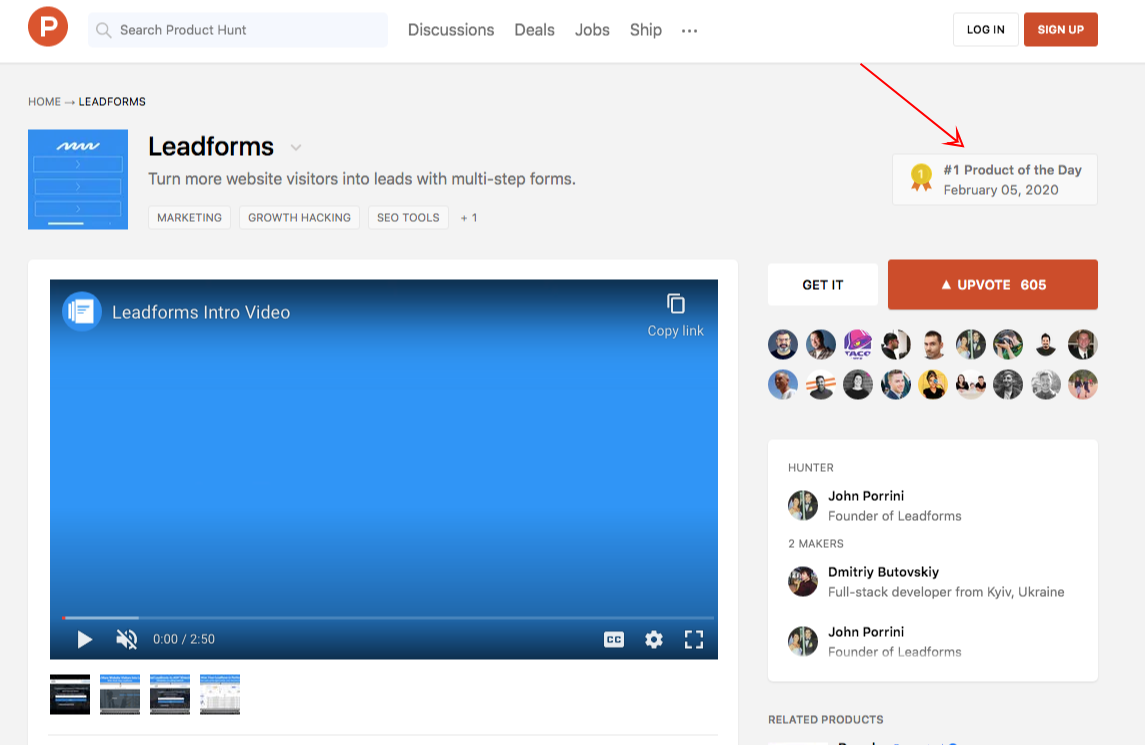

If you want to get more demos and trials, and increase your MRR, submit your SaaS strategically on Product Hunt.
You don't spam people. You don't force them to upvote and support your product launches.
Product Launch is a community. So, contributing value first should be your utmost priority.
You build your own community long before the launch. So when you start launching your software, you'll already have a bunch of people to support you.
Here are some examples of successful Product Hunt launches:
Flawless
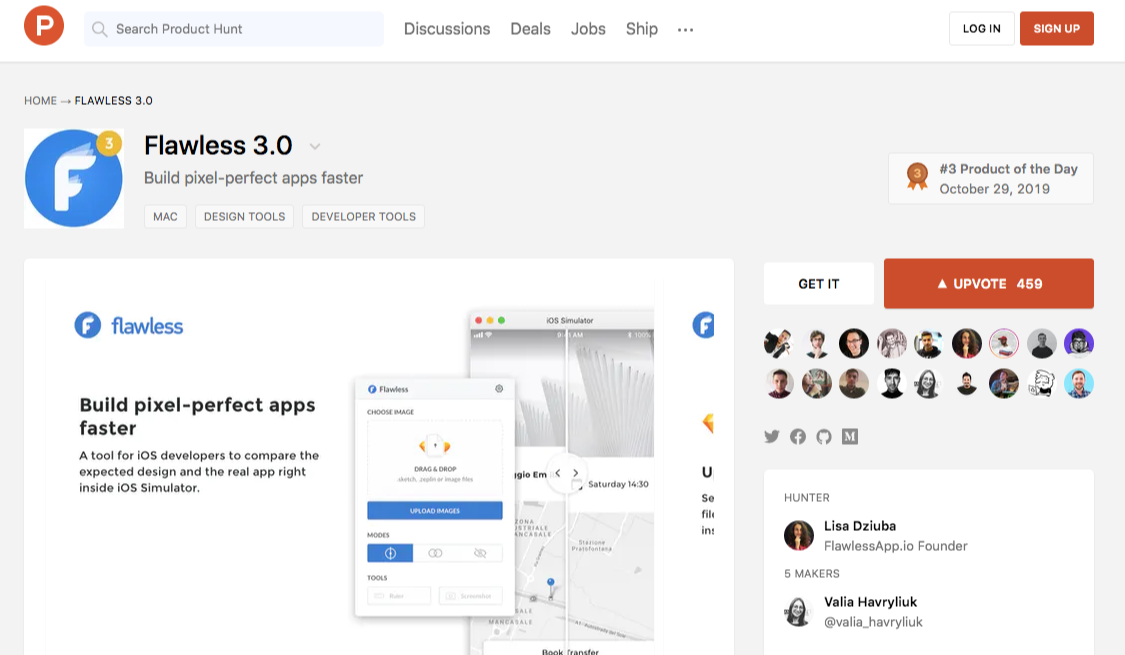

Quokka
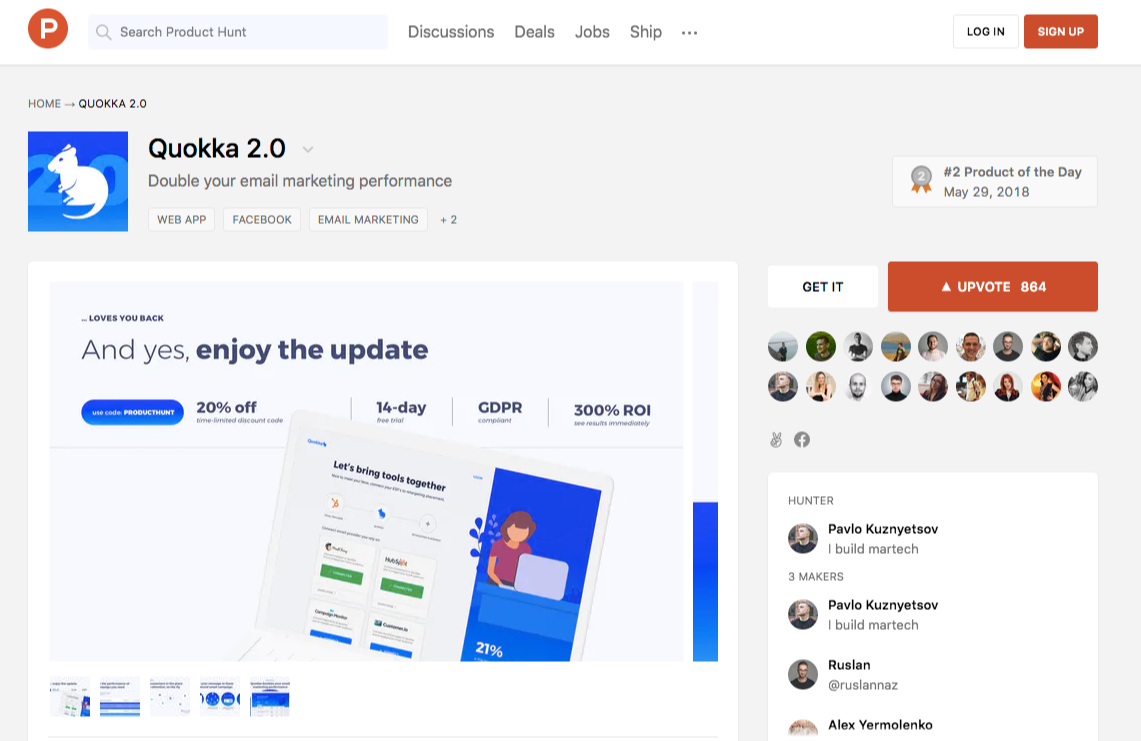

Weblium
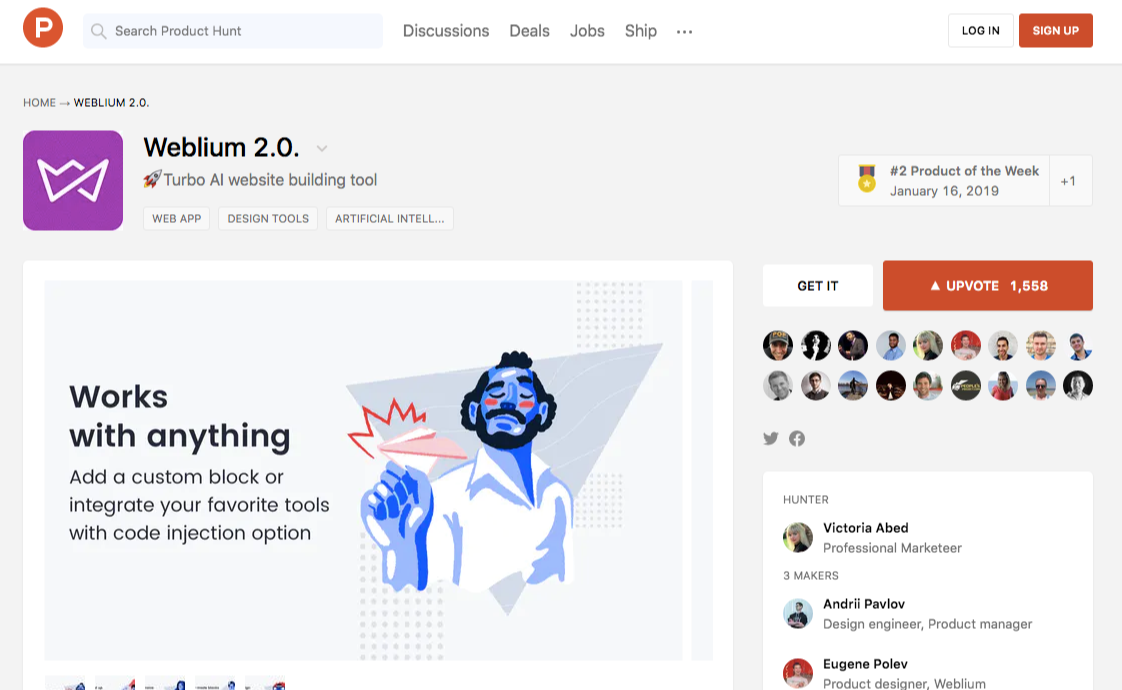

Optimize Your SaaS Landing Pages To Increase Linkability
Not all landing pages of SaaS are linkable. People don't normally link to sales pages unless it is worth citing.
If you have SaaS landing pages, you have to make them linkable.
How is that possible?
You include citable elements to your SaaS sales pages.
Add any of these micro content to your landing pages:
- Data or “findings.”
- Direct quotation of a source.
- Defining jargon and industry terminology for the layperson (aka definitions).
- Pricing Guides or Generalized Pricing Information.
- Images, Videos, Widgets, Downloadables.
- Detailed, Multi-Faceted Metrics-Based Reviews.
- Tips/Advice Directly Related to Products/Services on the Page.
- The Origin Story.
- Supplemental Outbound Resource Links
These are content pieces to increase the linkability of your sales pages. The more you have them, the easier for you to persuade publishers, bloggers, and industry content creators to link to your page because your content is worth referencing.
For example, Proposify added new free templates to their website for potential customers. These have been branded assets that generated hundreds of links.
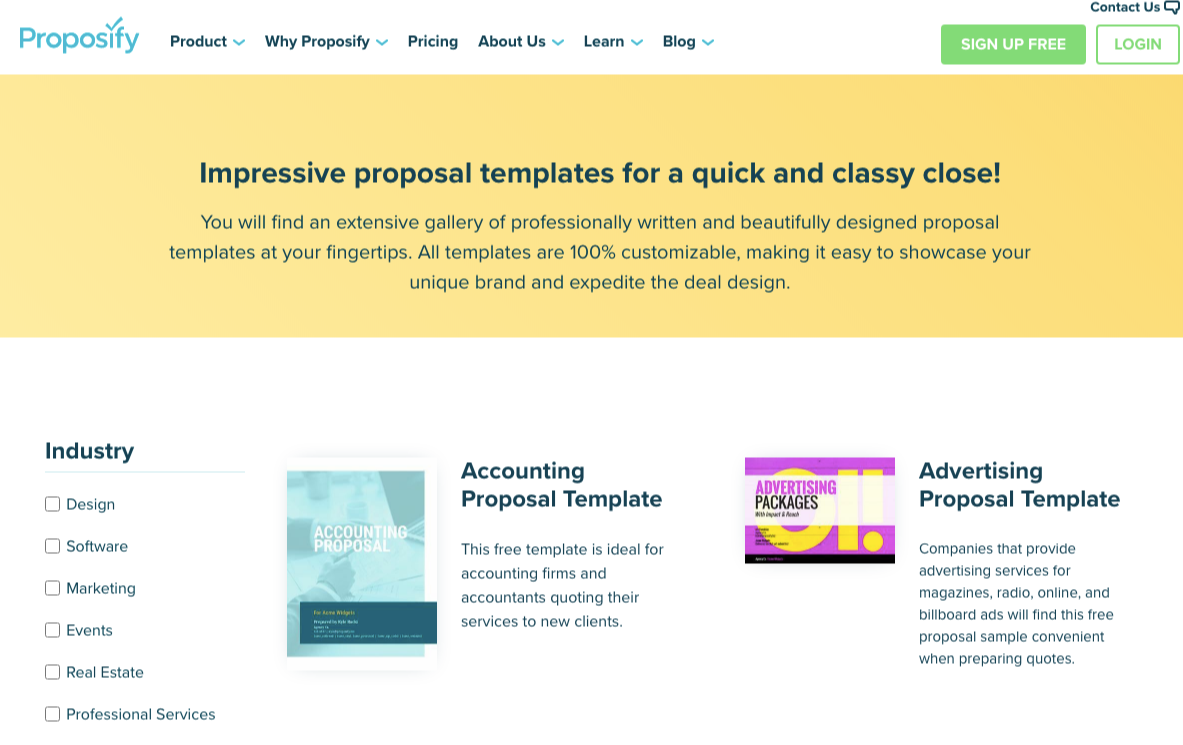

Another example is Quickbooks Sales Tax:
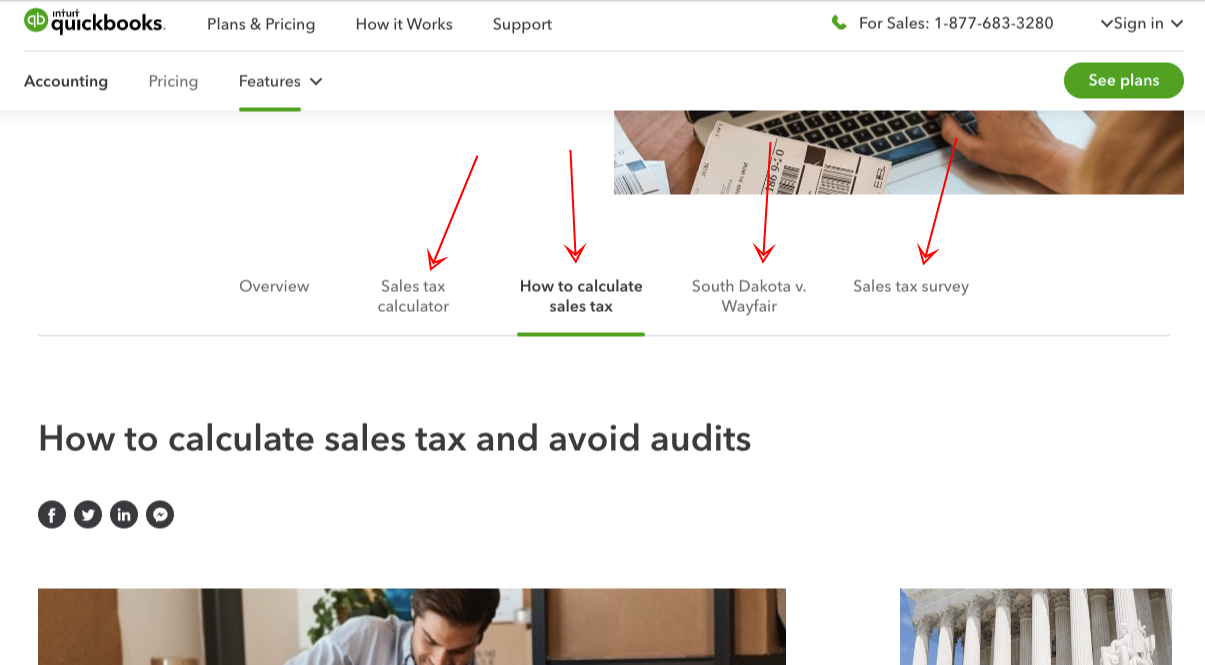

You see that they have "sales tax calculator", "how to calculate sales tax", and "sales tax survey".
These are all citable elements that will give publishers a reason to link to your sales page.
The next part is:
Reach out to people who might be interested to link to your sales pages. And expect to increase backlinks to your SaaS website.
Make Your CEO A Hero In Stories
Every software as a service brand has a story to tell to the world. And that's a huge advantage.
Journalists and reporters are hungry for interesting stories. They're looking for success stories of tech founders who've grown their startups to thousands of customers.
They also ask for quotes, tips, and advice from industry practitioners.
Here's the thing:
if you have stories, you can get more visibility and links for your SaaS website.
Plus, you'll get new customers by being featured on top publications — if these publishers bring referral traffic to your website.
Does your SaaS have any interesting founding story?
What about unique problems your tech product was able to solve on its own?
If you want to get great coverage on major publications, think about stories as your product.
Here is one example.
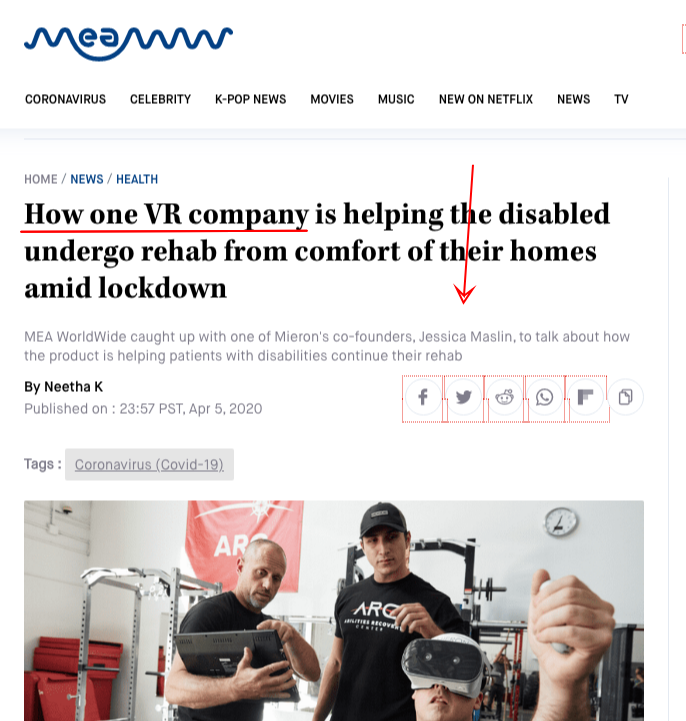

If you don't have a partnered PR agency, you can get your stories known using HARO.
You can check out this step-by-step guide on how to use HARO.
[optin-monster slug="eb0peyi0atyximzovsgv"]
Create A WordPress Plugin
Most webmasters use WordPress as their CMS.
For ease, most content managers and publishers want to use plugins to integrate tech products useful for their websites.
The best thing?
Create a WordPress plugin.
If your SaaS has logical benefits for ease of integration with WordPress, that's a big plus for your customers.
The next big thing is you get backlinks from WordPress users and tech publishers.
One more: you get new customers searching when your plugin is featured in the WordPress directory.
Take Hubspot again as an example.
They've created a WordPress plugin to integrate their software products inside the WordPress website.
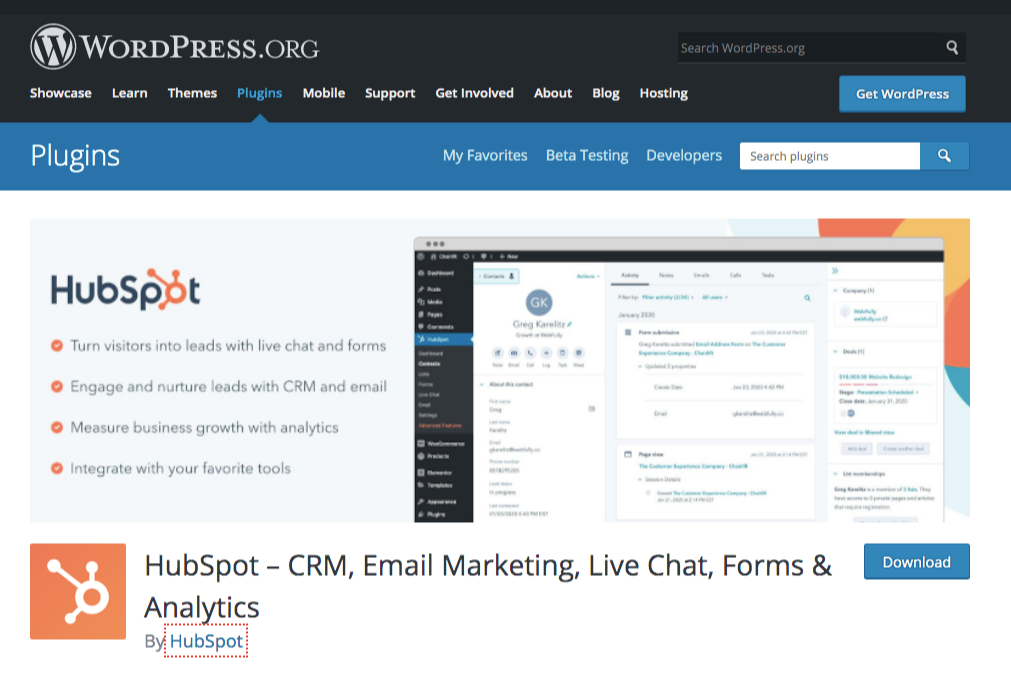

Built natively into WordPress, their customers can do meaningful tasks in CRM, email marketing, and analytics.
As of now, their Hubspot WordPress page earned over 1800 links.


Use Your Affiliate Program To Increase More Links
Affiliate programs are one of the best ways to grow your customers.
And the best part: you increase your backlinks by creating an affiliate program.
If you already have one, you just need to find bloggers and content creators who publish reviews and articles about niche products on their websites.
These are industry publishers who can write reviews about your product.
Of course, you get links from those product reviews.
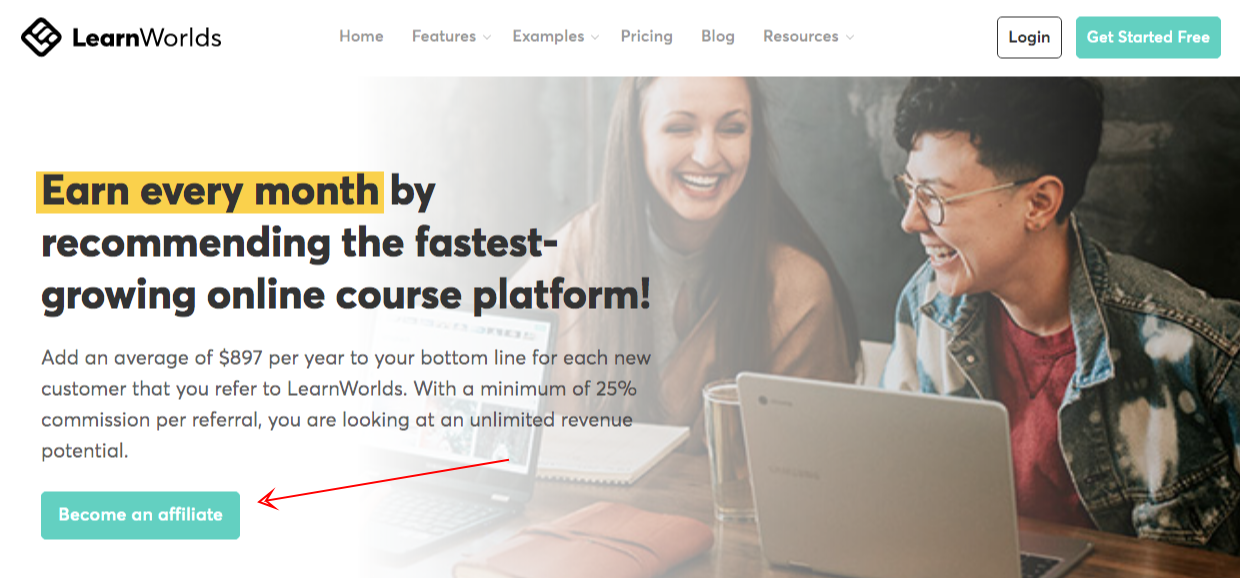

Here's how you do it:
Try to search for "your competitor" + "review" on Google.
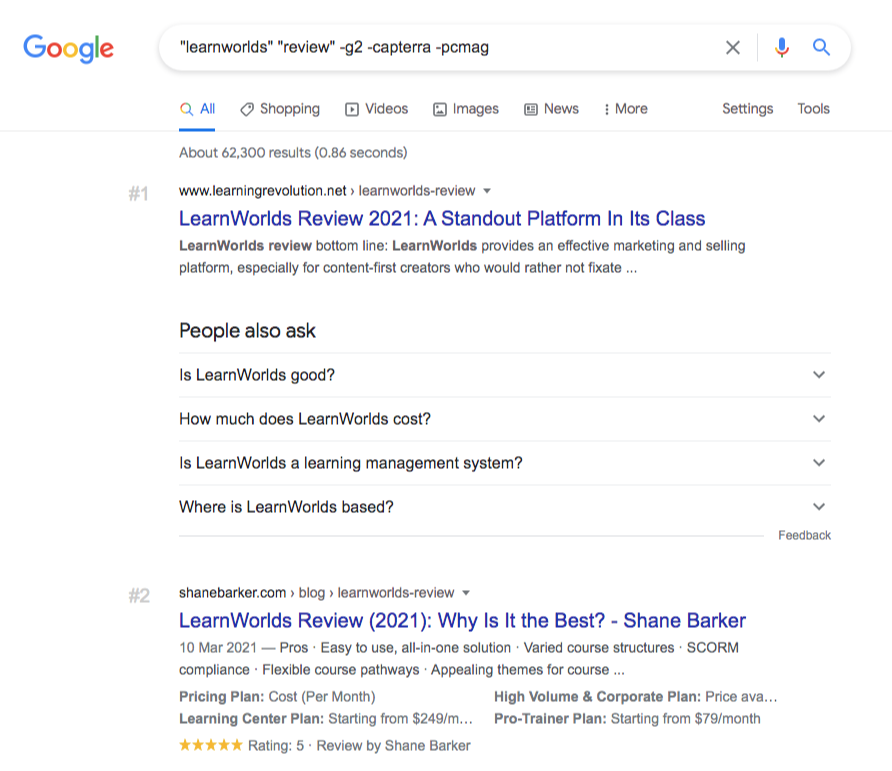

You'll surface a bunch of review articles of your competitors.
Leave the review websites like Capterra, G2, PCmag, etc..
For bloggers and publishers who write product reviews for your competitors? Reach out to them.
Publish Learn Hubs To Increase More (Targeted) Traffic
Read these statistics:
85% of large Saas businesses own a blog.
36% of SaaS companies use their blog to share content that educates. (SaaSX)
More and more software companies understand the power of content marketing in generating new customers, trials, and demos.
That said, how can you make sure your blog stands out?
Instead of doing what everyone is doing.
You do this:
You create what we call, "Learn Hub".
Learn Hubs are basically resource or knowledge centers.
Basically, you create an online library wherein you publish different pages that systematically target keywords within a topic.
The catch here?
You keep readers engaged on your site because each content piece lives closer together.
And because the entire "learn hubs" consists fully of highly valuable content assets, it's much more linkable than other competing individual pages.
For example, Canva's Learn Hub on design has generated over 3,000 backlinks and is currently ranking #1 for the key phrase: "free design".


Another example is from Freshbooks. Its Small Business Resource Hub is one of the top resource centers on accounting and invoicing for small businesses.
Freshhooks' "Learn Hub" ranks for over 355,000 keywords, with 3,200+ backlinks pointed to it.

Use High-Quality Custom Tools To Generate Links
Here's the good thing with tools:
It helps in automation and simplicity of work.
And for the most part, generating high-quality backlinks to your website.
For example, Gusto has a full library of different payroll and HR tools that currently generates over 2,000 backlinks and over 40,000 monthly sessions, according to Ahrefs.
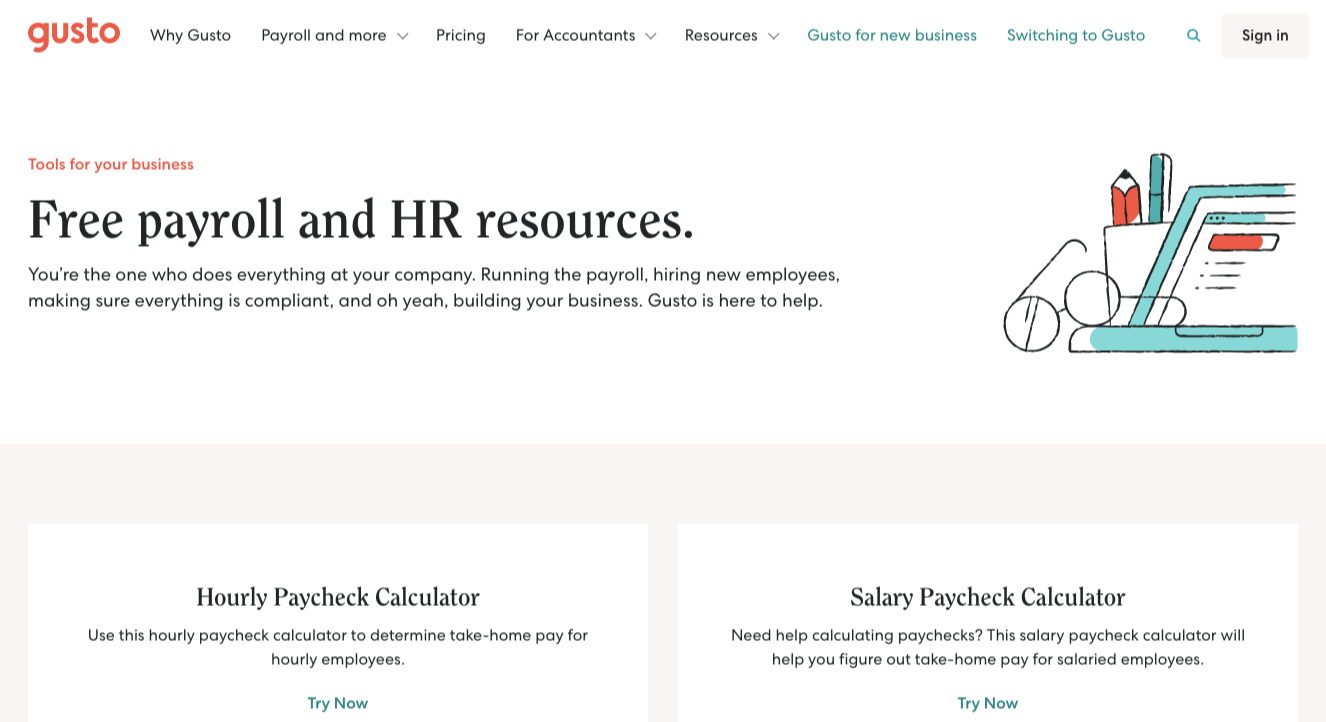

Software companies like you, won't have a hard time creating custom tools.
You do this as a product team.
Are there any estimated calculations your potential customers must make to arrive at a decision to purchase your SaaS product?
Do you have in-house spreadsheets that you can share with your audience to increase their efficiency on certain tasks?
Start with one tool. Then promote it massively to your target audience.
Add another tool to your /tools section. Promote it again to your audience.
You build a momentum of link earning as you build sets of custom tools for your audience.
Submit Your Website To Software Directories
You can't ignore the basic stuff:
Submitting your SaaS website to software directories.
You simply have to submit details about your brand, and some other information needed for submission.
Here is a free list of software directories.
[optin-monster slug="d8inb7n79yg0nnusgjag"]
Discover Content Patterns In Your Industry
The #1 mistake content marketers make is:
Not doing enough research before creating the content…
The reason why they don't get enough results when they start to promote their content assets.
One content strategy that gets you backlinks is discovering content patterns.
These are patterns — types and formats of content that already have worked in your industry.
How can you do that?
Start to reverse engineer top publications in your target industry.
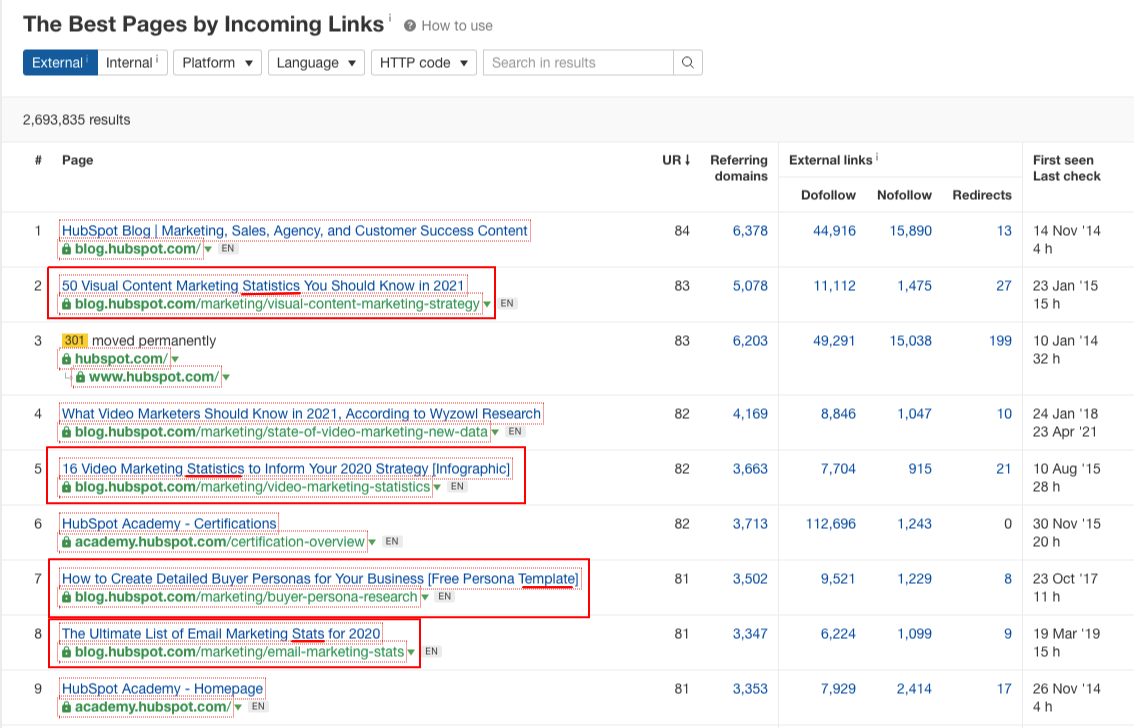

And see what types of content they consistently publish on their blog.
Model the same format in your SaaS blog and have a higher success rate in backlinks.
Use Tangential Topics To Discover Guest Post Prospects
Guest posting is one of the scalable link building strategies online.
But what's more interesting is:
Guest posting drives more traffic and more potential trials and demos to your software website.
Think about it:
If you write an article for an industry blog, and one of its readers read your content. You build trust among these readers.
They like you, and they'll buy from you.
But how can you know what industry blogs to target for guest posts?
The answer is to think about the specific problems your SaaS solves in your market.
We call as "tangential topics".
These are not the main core topics in your software blog.
But they're related to the solutions your SaaS is trying to solve.
Examples are:
Project management software helping freelancers do remote work.
Workflow software helping HR departments grow their businesses.
Productivity software helping small business owners manage their remote workers.
You see:
So you don't just limit your guest posting strategy with your main target audience.
But you're thinking about who are other audiences who might benefit from the solutions you're trying to solve in your space.
How?
Start with Google search
Use intitle search operator to find blogs with your target tangential topics.
See the example below:
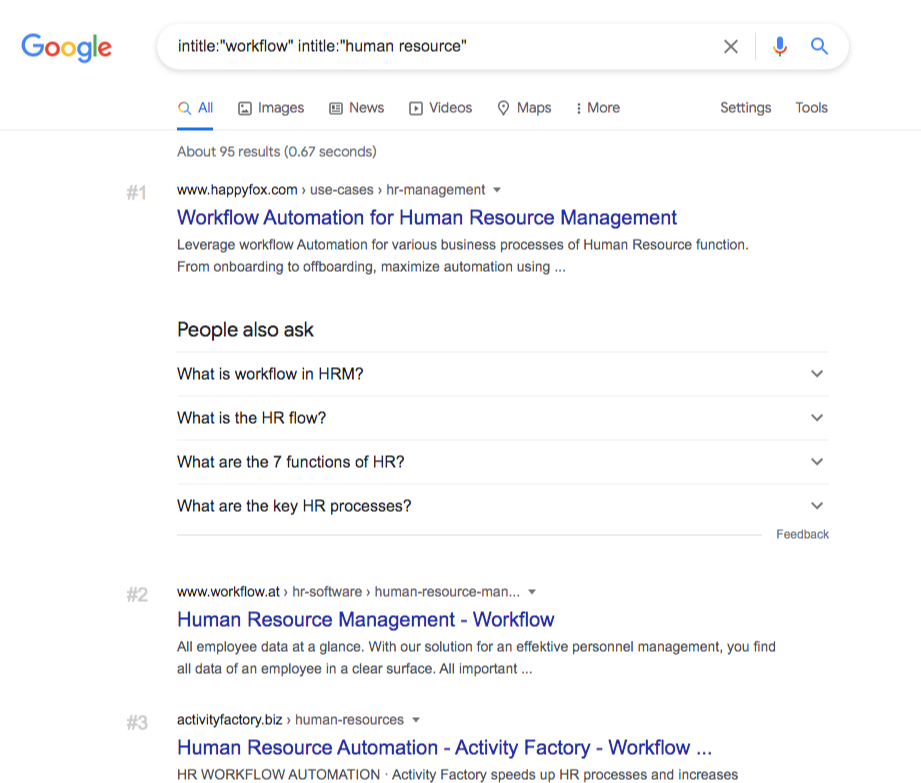

Make a list of all these industry blogs and target them as your guest post prospects.
Do this again after a couple of months. And you'll never run of your target guest blogs.
Publish Industries Pages
Do you want more trials and demos?
I'm sure you do.
It's only possible if:
You're not just niche-targeting, but also widening opportunities in targeting industries.
That's the best thing for software companies.
You can target different audiences.
For example, SimpleTexting created several "Industries" pages for their SaaS.
Text messaging for Car Dealerships:
Text messaging for Property Management and Landlords:


Text messaging for Fitness Centers and Gyms:
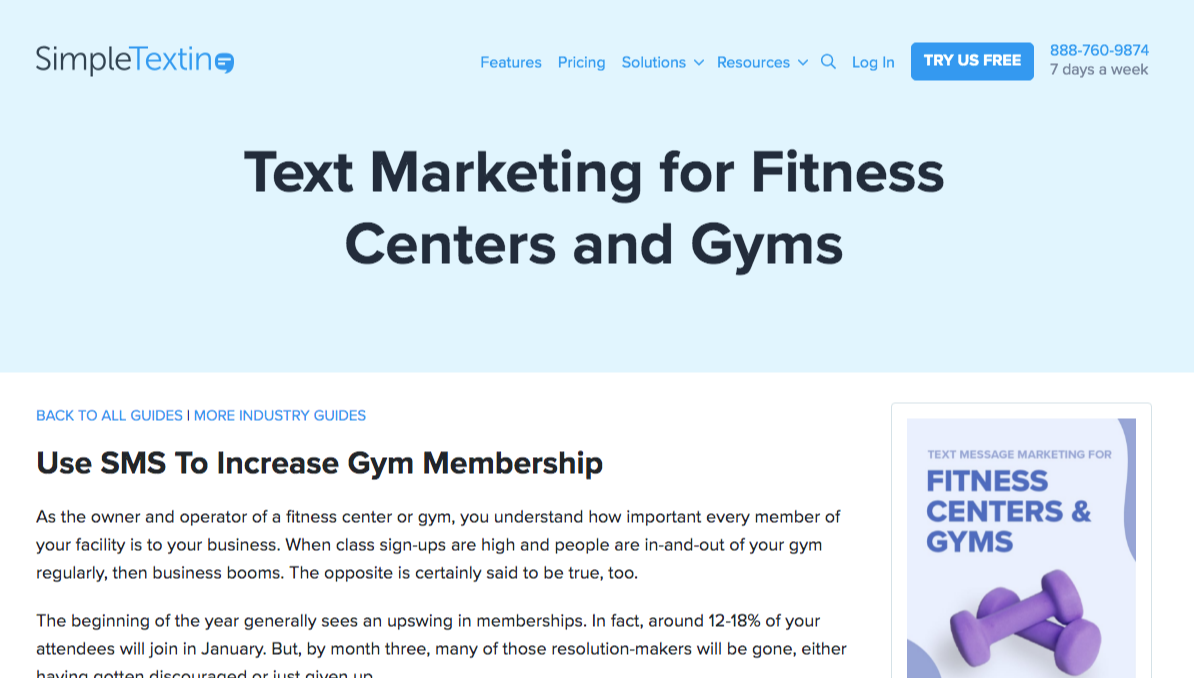

Industry pages work well in helping you drive audience-specific links.
In our given example, Simple Texting can reach out to car dealership blogs, property management blogs, and fitness blogs.
That translates to tons of links rather than just focusing on one niche.
Build Easy Links From List Posts & Comparison Guides
What's the common buying pattern of your potential customers?
Simple: They look through different solutions, choose which product they think that they can solve their needs, and decide for a trial or demo.
The reason why:
There are a lot of list posts (sometimes called, "listicles") and comparison guides in the software industry.
Bloggers, publishers, and content creators have "top 10 for [insert solution" articles.
You know what?
You can take advantage of these listicles and comparison guides to get links.
But you first have to start discovering them. How?
Plug in your competitor's website in Ahrefs to see who linked to them.
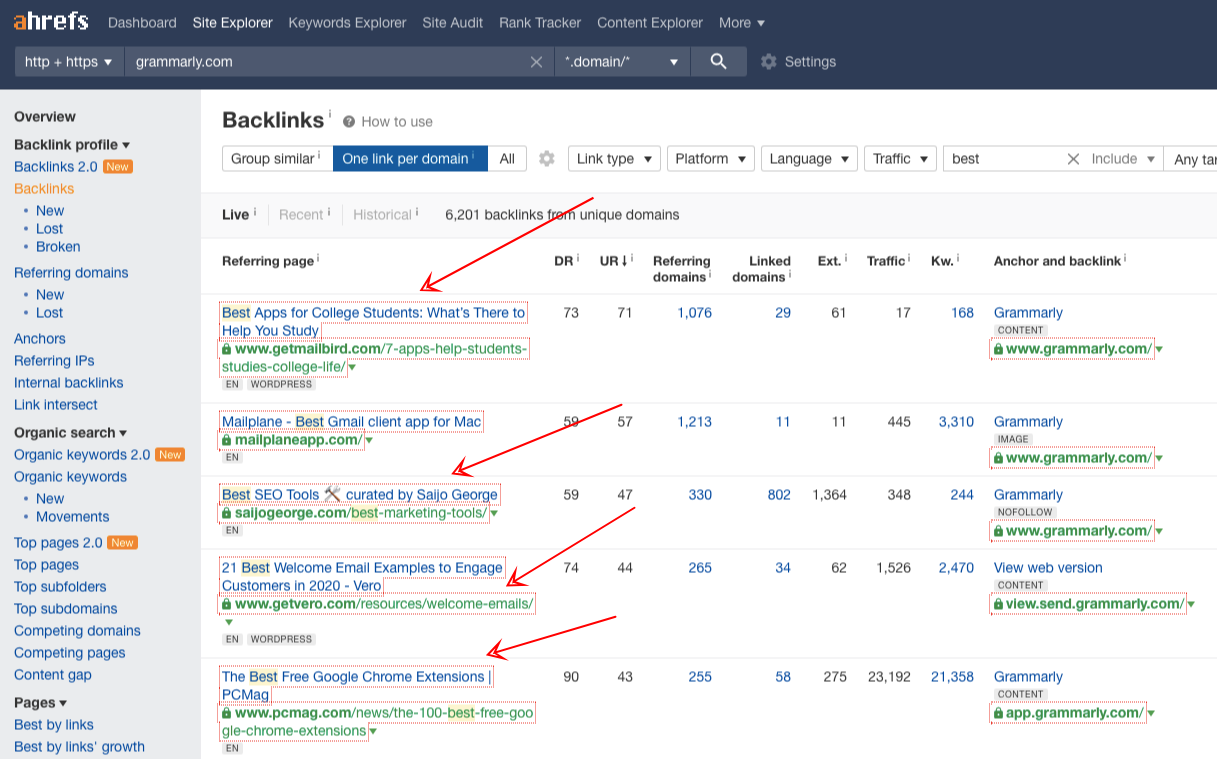

Go to the Backlinks section.
Add filter keywords such as:
- Best
- Top
- Tools
- Software
These will give you results of pages with any of these keywords in page titles.
Reach out to them and request your SaaS to get featured.
Pro Tip: Offer basic or premium account access to your online software to increase your link placement rate.
[optin-monster slug="eb0peyi0atyximzovsgv"]
Turn Brand Mentions Into Product Page Links
Most SaaS websites have lots of homepage links.
It's a good thing but:
If you want to maximize results in link building, you need more relevant more targeted links.
What can you do?
Turn your brand mentions of products into product page links.
Step 1: Look for brand mentions.
You can use Ahrefs to track them easily.
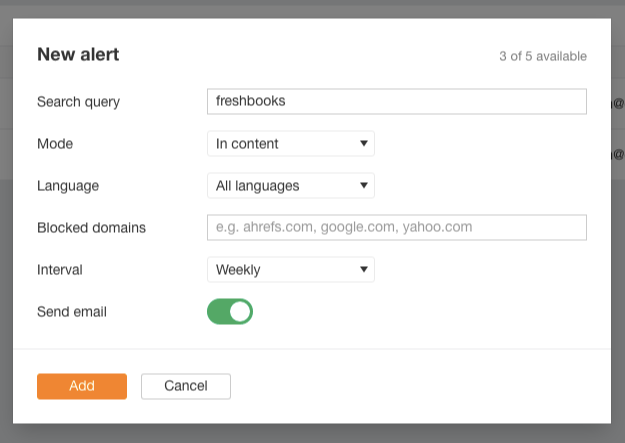

Or use Google Alerts to find these blogs that mentioned your SaaS.
Step 2: Reach out and ask to update their links to a more relevant page.
Given they have mentioned your online software in their articles, a simple request for change of links to a more specific page (your product or template page) is doable. for webmasters.
Here is a simple email outreach script that you can use:
Subject Line: Quick question for your [Name]
Hey [Name],
It’s [Your Name] here from [Their Website].
I was just looking through my backlinks and noticed you mentioned me in this post: [Link of the page where you got the link]
However, I noticed that although you mention a particular blog post of mine [Topic of the page that mentioned your
website], you actually linked to my homepage rather than the blog post itself.Any chance it would be possible to swap the link out for a link directly to the blog post instead?
No worries if not, I just think it’d make more sense in the overall context of the post (as people may be interested to
read that post).Either way, have a great week!
Thanks,
[Your Name]
Publish Statistics Page In Your Industry
People want to know different things.
They do Google search for "how many people are X", "what is the number of people in X", how many users are using X".
These are numbers. Some pages have statistics to show off.
It's good for users. It's also good for link building.
Your software brand has data and numbers that might be valuable to your audience.
And is a powerful asset for backlinks from authority sites.
Many SaaS websites publish "statistics" pages.
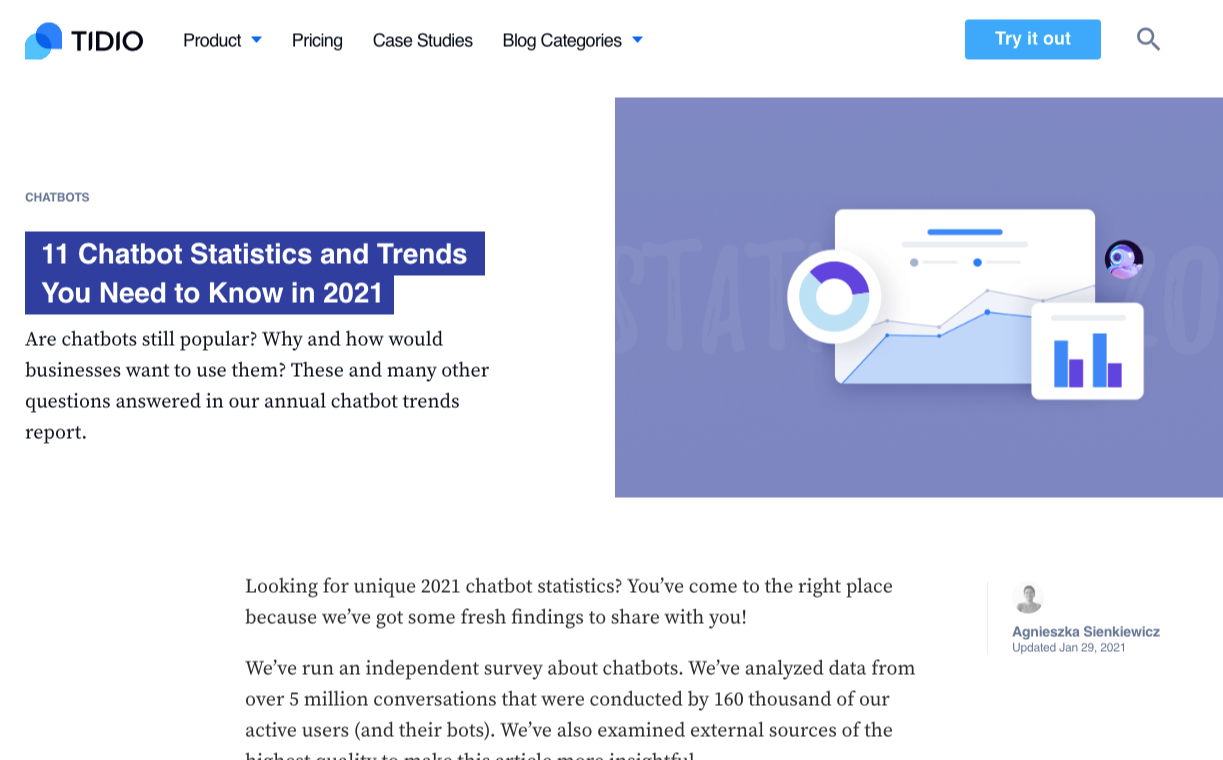

Hubspot Content Marketing Statistics:
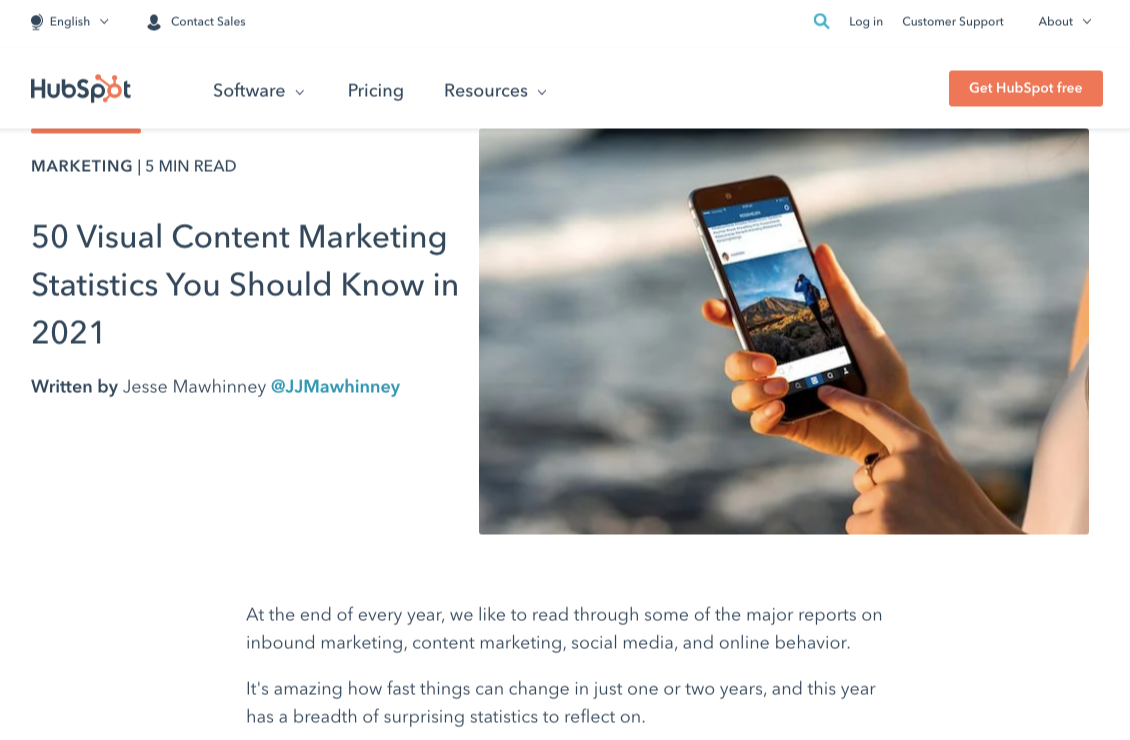

Simple Texting Remote Work Statistics:
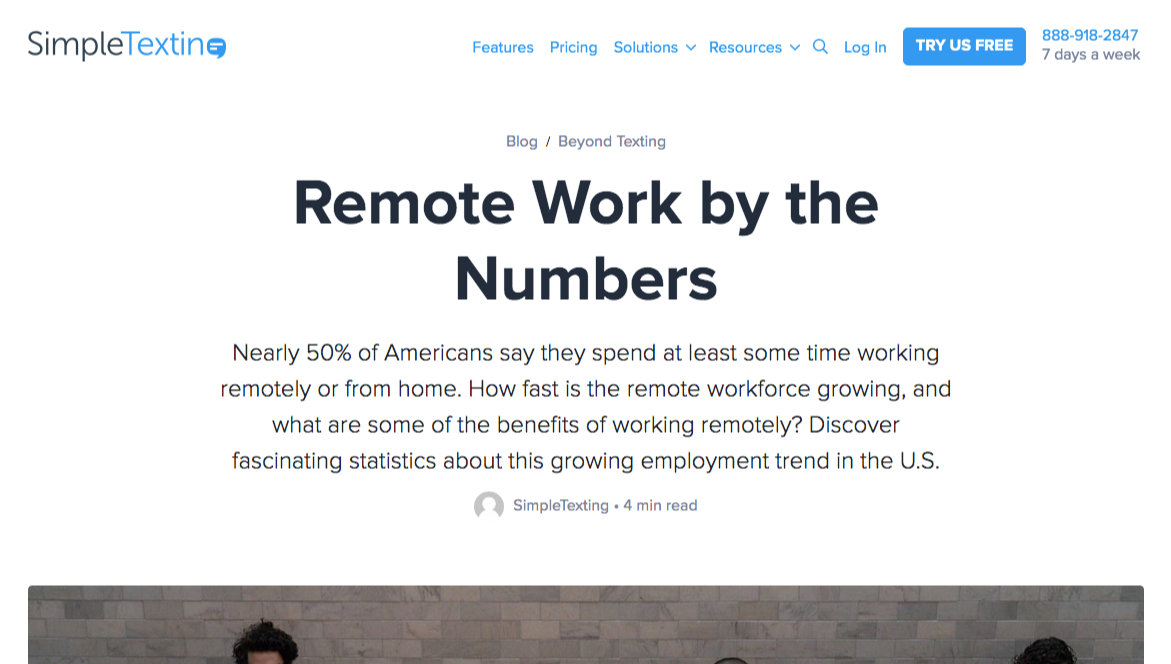

Publish your own statistics page.
Get information from your internal data in your company.
Or get data from top statistical sources such as:
Once publish, you reach out to people who might be interested in linking to the page.
Start with people who have previously linked to statistics related to yours.
Use Ahrefs to discover blogs, publishers, and websites that linked to your similar statistics page.
Go to the Backlinks section. Make a list of these backlink targets.
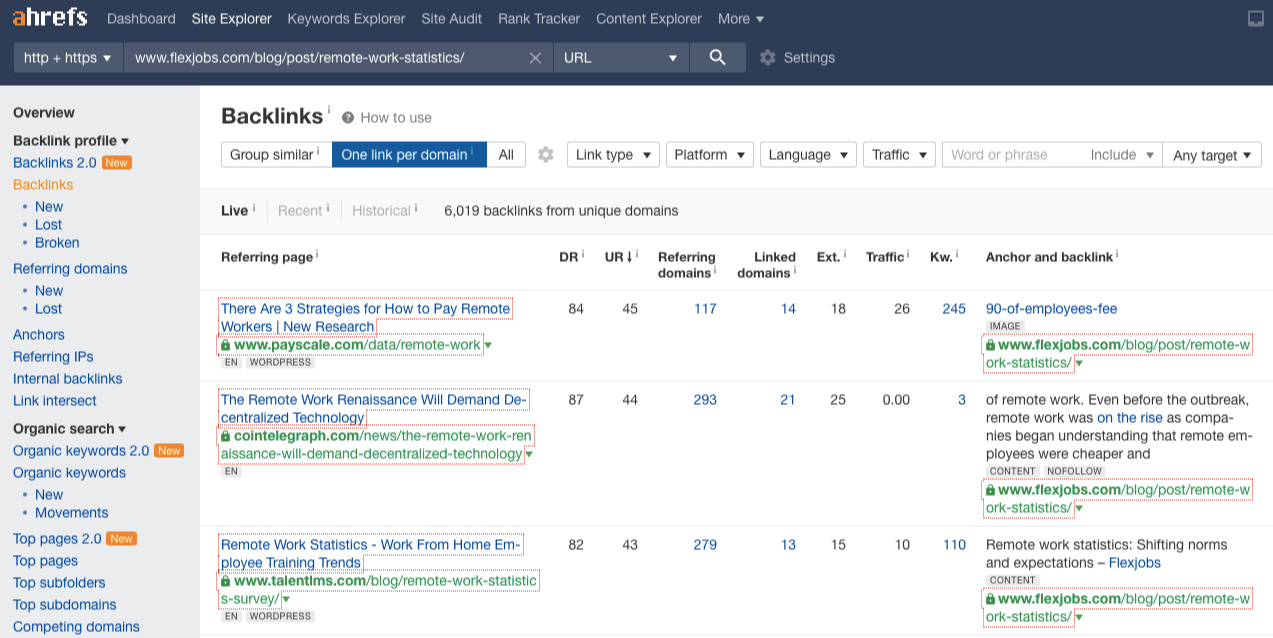

Reach out to them and promote your statistics content.
Hunt How-To Tutorials On Youtube
You should probably know that publishing Youtube videos is a great way to generate brand awareness and drive new customers to your SaaS website.
But there's one more thing with Youtube videos:
It helps software companies to bring new inbound links to their websites.
How?
By publishing tutorials on how to use your product for meaningful tasks.
For example, Trello has tons of videos on how to be productive using their tools.
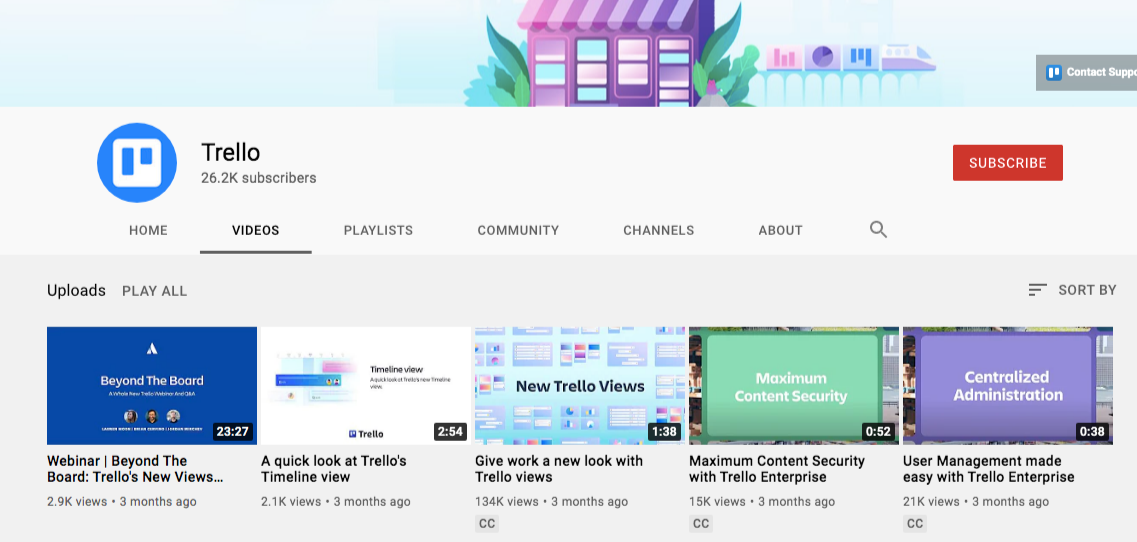

Instead of putting out an article on how to use Trello, a better demonstration of their SaaS features is through how-to videos.
Another example is putting out videos of app integration with your software.
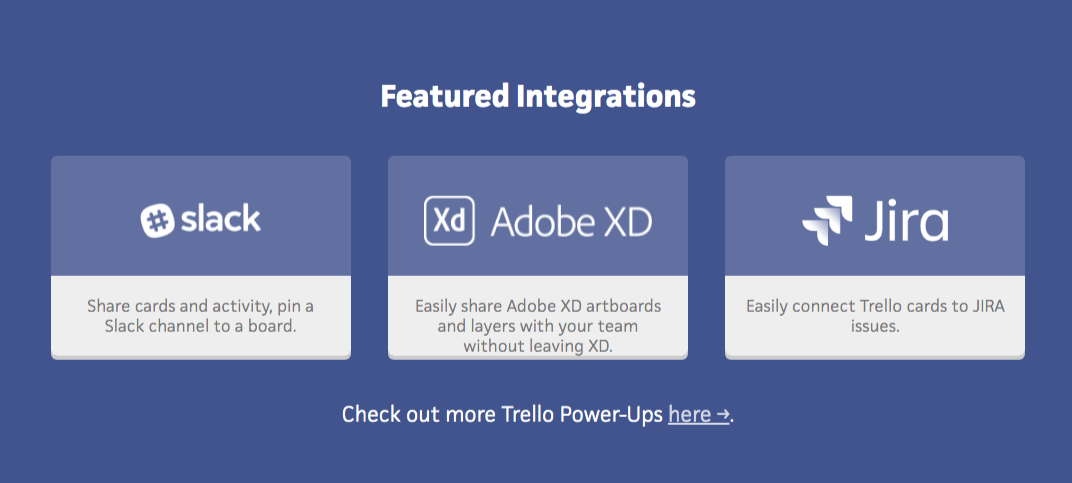

This helps your brand get in front of people using those integrated apps.
Those are link opportunities at hand.
You can track blogs that mentioned your SaaS along with the integrated app.
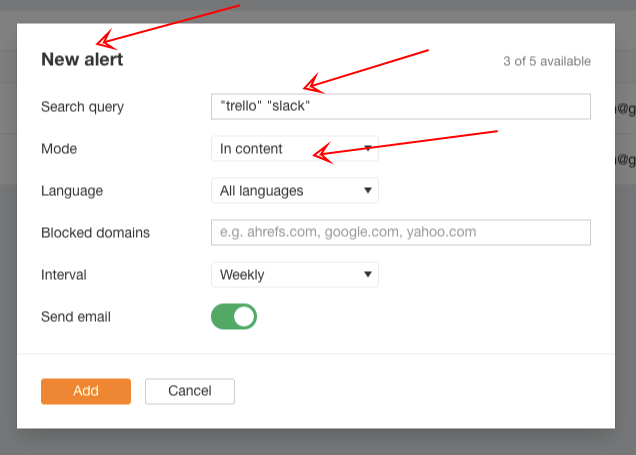

And even reach out to content publishers who've written a post on a topic of your Youtube video.
By sharing that it adds more value to their readers, if there's a how-to video that showcases the exact way of doing the task, you're likely to increase the chances of getting backlinks to your website.
Appeal To Sales People With Your Software
Audience-first link building.
It is your ability to think first of your audience, as it dictates what link building strategy to use for your software website.
Besides your main audience for your SaaS blog:
HR people, CIOs, small business owners…
…you can also target salespeople
Salespeople have high intent in social sharing and referencing valuable resources.
For what reason?
Simple: They get more money by doing so.
If they want more sales, they have to educate more their audience, especially if their offers have a longer sales cycle (e.g. 3 to 6 months before a person purchases their offers).
Trigger the emotions of salespeople by appealing to them with your SaaS content.
Think of ways on how to appeal to salespeople.
Use Google to find titles and topics that go near to your brand's solutions.
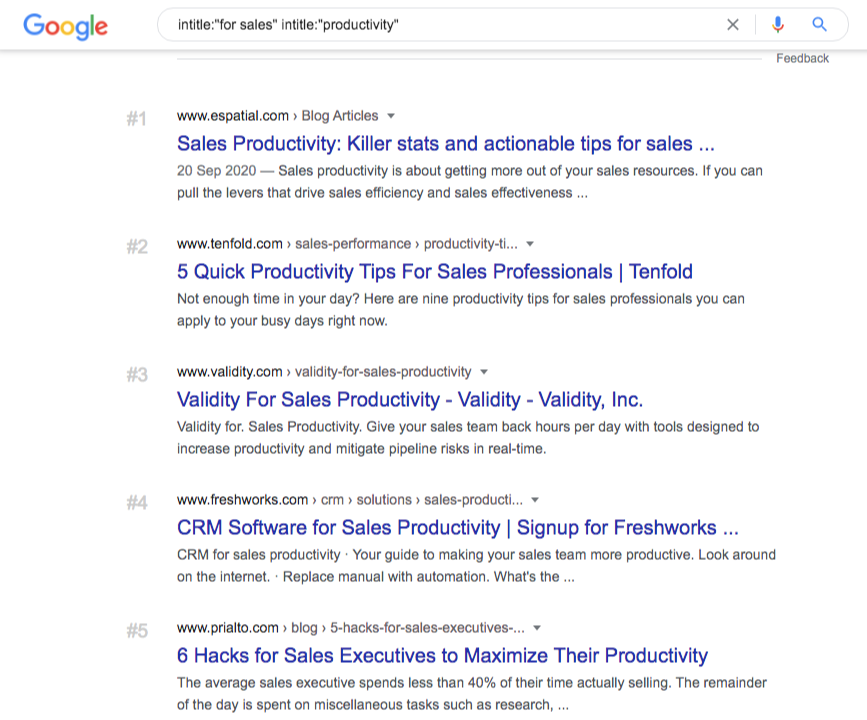

[optin-monster slug="eb0peyi0atyximzovsgv"]
Here's The Next Step…
I want to turn it over to you.
Which one of the 19 SaaS link building strategies you're going to apply right now?
Will you optimize your SaaS landing pages to increase their linkability? How about publishing "learn hubs" to earn more links and targeted traffic to your website?
Either way, let me know by leaving a comment below right now.
Content Marketing For Startups
Startups are businesses in their early stages. They are usually growth-oriented and have a mission to build something innovative and new. Marketing for startups is very important because it helps them create awareness, generate leads, and grow their business.
Content marketing is a strategic marketing approach focused on creating and distributing valuable, relevant, and consistent content to attract and retain a clearly defined audience — and, ultimately, to drive profitable customer action.
Why is Content Marketing Important For Startups?
Content marketing is important for startups because it helps them in the following ways:
1. Creating awareness: Startups need to create awareness about their product or service. Content marketing can help them reach a larger audience and create brand awareness.
In fact, about 42% of marketers say that content marketing has increased their organic search traffic. What does this mean for businesses? More traffic to your website means more opportunities to generate leads and convert them into customers.
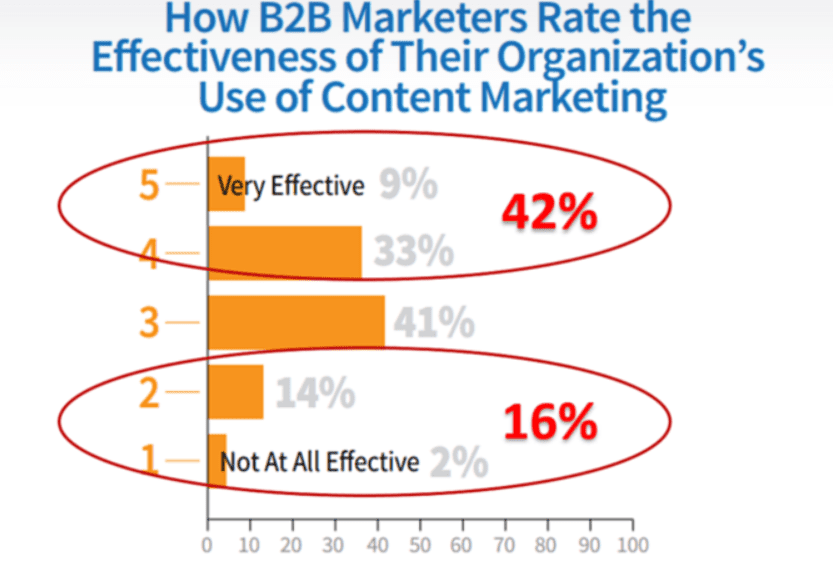

2. Generating leads: Startups need to generate leads to grow their business. Content marketing can help them attract more visitors to their website and convert them into leads.
In fact, content marketing generates 3 times as many leads as outbound marketing and costs 62% less. This means that businesses can save a lot of money by investing in content marketing.
By creating valuable content, startups can attract potential customers who are looking for what they have to offer.
About 80% of B2B marketers say that content marketing generates more leads than any other marketing initiative.
3. Growing their business: Startups need to grow their business. Content marketing can help them by providing valuable information that can be used to make decisions, solve problems, and take action.
Content marketing has been shown to increase sales and revenue for businesses. In fact, businesses that use content marketing see an average of 6 times more conversions than those that don’t.
This is because content marketing helps businesses build trust and credibility with their audience. When people trust a business, they are more likely to buy from them.
How to Get Started With Content Marketing For Startups
There are three stages to content marketing: Pre-launch, Early Stage and Scaling.
We’ll go into each stage in more detail below.
Pre-launch: In the pre-launch stage, startups need to focus on creating awareness and generating interest in their product or service.
To do this, they need to create high-quality content that is relevant to their target audience. This content can be in the form of blog posts, infographics, ebooks, or anything else that is valuable and informative.
Early Stage: In the early stage, startups need to focus on generating leads and growing their business.
To do this, they need to create content that is targeted towards their audience’s needs. This content can be in the form of case studies, webinars, or anything else that is valuable and informative.
Scaling: In the scaling stage, startups need to focus on tracking the growth of their business.
To do this, they need to create content that is focused on analytics and data. This content can be in the form of reports, infographics, or anything else that is valuable and informative.
Pre-Launch:
This is where b2b and b2c content marketers spend their budget in the last 12 months (2022).
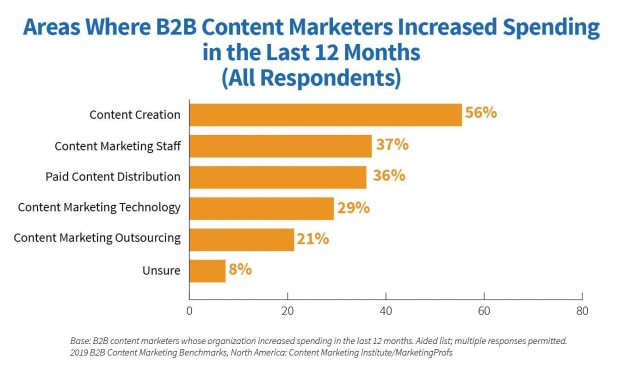

As you can see, content marketing takes up the biggest chunk of the budget in content marketing. And it’s no surprise why: high-quality content is essential to success in the pre-launch stage.
This content can be in the form of case studies, webinars, or eBooks.
In order to start creating content, you will be needing tools to assist you. Here are some good recommendations from marketing experts:
Wordpress: A content management system (CMS) that will help you easily create and manage your website’s content. For startups, this can be
Canva: A design tool that will help you easily create visuals for your website and social media accounts.
Hootsuite: A social media management tool that will help you easily schedule and publish content on social media
BuzzSumo: A content research tool that will help you easily find the most popular content on the web.
Contentful: A content management system (CMS) that will help you easily create, manage, and publish content on your website.
Once you have these tools ready, you can start creating high-quality content that is relevant to your target audience.
Early-Stage:
At this stage, it’s all about generating leads and growing your business. In order to do this, you need to create content that is targeted towards your audience’s needs.
Here are some ideas on how to create content for each stage of the buyer’s journey:
Awareness Stage:
- Helpful blog posts
- Informative infographics
- Engaging videos
- Problem-solving eBooks
Consideration Stage:
- Helpful guides
- Educational webinars
- insightful case studies
Decision Stage:
- Product demos
- Free trials
- Coupons and discounts
Blog posts: Blog posts are a great way to provide valuable information to your audience. They can be used to educate, entertain, or inspire your readers.
Videos: Videos are a great way to engage your audience. They can be used to show how your product or service works, or to tell a story about your brand.
Infographics: Infographics are a great way to visually communicate information. They can be used to explain complex concepts, or to showcase data in an easy-to-understand format.
Free trials: Free trials are a great way to let your audience try your product or service before they buy it. This can help you generate leads and conversions.
Repurposed content: Repurposing your content is a great way to get more mileage out of it. You can repurpose your blog posts into infographics, or your videos into blog posts.
Ebooks: Ebooks are a great way to provide valuable information to your audience. They can be used to educate, entertain, or inspire your readers.
Scaling:
At this stage, it’s all about tracking the growth of your business. You need to track your KPIs properly in order to make sure that your business is on track.
You will also need to use tools to help you track your KPIs effectively:
Google Analytics: A free tool that will help you track your website’s traffic and conversions.
KISSmetrics: A paid tool that will help you track your website’s traffic, conversions, and other key metrics.
Mixpanel: A paid tool that will help you track your mobile app’s key metrics.
Once you have these tools in place, you can start tracking your business’s growth and progress.
10 Examples of Successful Startups With Their Content Marketing Strategy
1. Airbnb
Airbnb is a startup that allows people to list, find, and rent vacation homes.
Airbnb’s content marketing strategy focuses on creating helpful and inspiring content for its target audience.
Some examples of their content include:
Blog posts about travel tips - AirBnb started a blog called "A travel guide by AirBnb" which provides helpful tips for its users.
Videos about people's experiences - Airbnb has a YouTube channel called "Stories from Airbnb" which features videos about people's experiences with the company.
The use of content marketing has helped AirBnb to become one of the most popular startups in the world.
2. Buffer
Buffer is a startup that provides a social media management platform for businesses and individuals.
Buffer’s content marketing strategy focuses on creating helpful and informative content for its target audience.
Some examples of their content include:
Blog posts about social media tips - Buffer has a blog called "The Science of Social Media" which provides helpful tips for its users.
Videos about the company and its products - Buffer has a YouTube channel called "Buffer Stories" which features videos about the company and its products.
3. Canva
Canva is a startup that provides an online platform for people to create visuals for their social media accounts.
Canva’s content marketing strategy focuses on creating helpful and inspiring content for its target audience.
Some examples of their content include:
Blog posts about design tips - Canva has a blog called "Design School" which provides helpful tips for its users.
Youtube Tutorials - Canva has a YouTube channel called "Canva Tutorials" which features helpful tutorials for its users.
4. WP-Engine
Considering that WP-Engine has huge competitors like Hubspot, WP-Engine has been working really hard in order to get their name out there. Their strategy is to partner up with other companies and publish content on their behalf. This way they are able to get in front of new audiences that they would have otherwise not reached.
5. Dropbox
When it comes to content marketing, one company that does it right is Dropbox. They focus on creating helpful content that educates their target audience on how to use their product.
How is Dropbox Marketing their Brand?
Since the company has grown to a large scale, they have been able to use their size in order to market their brand. They earn new leads through their referral program - for every new user that signs up, the current user gets rewarded with more storage space.
6. Scripted
Scripted is a startup that provides an online platform for businesses to find and hire freelance writers.
Scripted’s content marketing strategy focuses on improving their content, and they have been using podcasts, white papers, and webinars to generate new leads.
7. Salesforce
If you're not familiar with Salesforce, they are a CRM software company. When it comes to Salesforce's content marketing strategy, they focus on creating fun, yet informative content.
Salesforce has a blog called "The State of Marketing" which provides helpful tips and information for its readers.
They also created the first-ever stop-motion slideshare.
Lastly, they also display their customer's success stories on their blog in order to show potential customers what they are capable of.
8. SAP
SAP's mix of content marketing strategies include:
- Tweets
- Blogs posts
- LinkedIn status updates
- Posts on the SAP Community Network
- Radio ads
- Virtual events
- In-person events
- Outbound and responder follow-up calls
- Account Based Marketing
- Individual account meetings
According to Marketing Sherpa, their marketing strategy generated opportunities (MGO) equaled $3,675,000!
9. MobileMonkey
MobileMonkey is a startup that provides a platform for businesses to create chatbots for their social media accounts.
MobileMonkey creates a series of blog posts called MobileMonkey Growth Marketing Blog, where they write about topics such as:
- How to use chatbots for customer service
- How to use chatbots for lead generation
- What are the benefits of using chatbots?
This makes them one of the top companies to follow if you want to learn about chatbots and how to use them for your business.
10. Microsoft
Microsoft is a company that needs no introduction. They are a giant in the tech industry, and their content marketing strategy reflects that. They have a series of blogs called Microsoft On The Issues, where they write about topics such as:
- Cybersecurity
- The Future of Technology
- Artificial Intelligence
Microsoft is a company that is at the forefront of many new and emerging technologies, so their blog is a great resource for anyone who wants to stay up-to-date on the latest trends in the tech industry.
Frequently Asked Questions:
Is content marketing profitable?
Yes, content marketing can be very profitable for businesses. It can help them reach new audiences, generate leads, and even make sales.
Is content marketing in demand?
Yes, content marketing is definitely in demand. With the rise of digital marketing, more and more businesses are turning to content marketing in order to reach their target audiences.
How do you sell content marketing?
There are a few different ways that you can sell content marketing. One way is to offer it as a service to businesses. Another way is to create and sell products, such as e-books or online courses, that teach people how to do content marketing.
What is the content marketing cycle?
The content marketing cycle is the process that businesses go through in order to create and distribute content. It includes the following steps:
- Planning: This is where businesses decide what kind of content they want to create and why.
- Creating: This is the step where businesses actually create the content.
- Distributing: This is the step where businesses distribute the content to their target audience.
- Measuring: This is the step where businesses measure the results of their content marketing efforts.
- Adjusting: This is the step where businesses make changes to their content marketing strategy based on the results that they measured.
The content marketing cycle is an important part of any content marketing strategy, as it helps businesses to ensure that they are creating and distributing content that is effective and engaging for their target audience.


